

How to get over jet lag when traveling to Japan
A holiday in Japan is the stuff of dreams… but when jet lag strikes, you’re at risk of sleeping through your whole vacation. Dick Clark says “jet lag is for amateurs,” but even the most experienced traveler can suffer from jet lag if they don’t take proper precautions. Most travelers will be flying over several time zones on their way to Japan, so if you want to enjoy your dream vacation, be sure to follow these tips to avoid jet lag in Japan.
Start preparations at home
Jet lag hits once you arrive, so it’s easy to forget all about this side effect of travel before you step on a plane. But if you plan before you travel, you stand a better chance of avoiding jet lag. While you’re making your packing lists, planning your itinerary and saying goodbye to friends and family, make a plan to avoid jet lag with a couple easy steps.
Adjust your sleep schedule gradually
Begin adjusting your sleeping schedule in the days leading up to your trip. Go to sleep earlier (or later– depending on where you’re flying from) each night to get your body closer to the time zone in Japan.
It may even be helpful to set your watch to Japan Standard Time ahead of your trip. Each time you look at your wrist, you can mentally prepare for the new time zone.

Be well rested before your trip
You need a holiday, so it’s likely you’re starting out stressed and in need of a rest. But being well rested is one of the keys to avoiding jet lag. Don’t save your packing until the night before your trip, instead, prioritize a full night’s sleep.
Make good choices on the plane
You made it to the plane! The holiday has started and you’re well on your way! It’s time to celebrate… or is it? The decisions you make on the flight to Japan can be the difference between suffering from jet lag and enjoying your first days in the country.

Stay hydrated (skip alcohol and caffeine)
Free booze on international flights is an exciting prospect. It’s easy to take advantage of the open bar and free-flowing coffee. But if you over-imbibe on the free drinks, you’ll pay the price in jet lag.
Staying hydrated is key to minimizing jet lag. Choose water over wine and your body will thank you once you’ve arrived in Japan.
Like alcohol, it can be easy to overindulge on food when it’s constantly on offer in flight. Avoid foods high in fat and sugar, which can be difficult to digest and hinder your ability to sleep.
Sleep on the plane when it’s nighttime at your destination
If you’ve done the work at home, your internal clock is already inching its way to Japan Standard Time. Now is a great time to make the switch. Do your best to sleep on the plane… but only when it’s nighttime in Japan.
Pack your bag with sleep essentials: Earplugs, noise-cancelling headphones and an eye mask. Some people may benefit from taking melatonin , a hormone that regulates the circadian rhythm. Sweet dreams on the plane during local nighttime is just one more step toward a great first day when you arrive.
Tips for the first day in Japan
The wheels of the plane touch down in Japan and it’s finally official– your holiday has started! You have so much to see and do and eat. But as the afternoon goes on, your eyelids droop and a nap sounds like a good idea. But is a nap a good way to overcome jet lag?
Stay awake as late as possible on your first day in Japan
Say no to naps! The key to beating jet lag is to get onto local time as soon as possible. Spend time outdoors in sunlight and do your best to stay awake until nighttime. The sun regulates your body’s circadian rhythm, so time in the sun is key to getting settled into Japan Standard Time.
Eat at local meal times
Your body may demand to be fed at times corresponding to the timezone you just left. But it’s important to shift toward eating only during Japanese meal times. Believe me… the ramen is worth waiting for!
Following these tips will help you stay awake through your dream holiday. What’s your top tip for avoiding jet lag?
Final Thoughts
A flight to Japan can take anything from 4 to 18 hours and the time difference from your local time can also range from a few hours to 18 hours.
Without planning ahead, you risk going through the first few days in Japan with jet lag.
I hope this guide will help you keep jet lag to a minimum and let you enjoy your stay in Japan to the MAX.
More ideas to improve your trip to Japan
[free download ] 16 tips to make your trip to japan amazing.
Download our special PDF guide here to help you with your trip to Japan.
Explore More
Did this article pique your interest in …?

Check out ....
- Great … Itinerary Ideas
Mashiko / Nasu-Karasuyama / Nikko 1 / Nikko2
- Great …
Otowa Restaurant (French cuisine) / Ryokan (Japanese kaiseki)
Did you find this article useful?
I hope you enjoyed reading about this hidden gem just north of Tokyo, if you would like to know more about fun things to do and travel ideas, please continue to have a look at our must-see / must do things nearby Tokyo page.
To book unique activities in English, please see the Nearby Tokyo experience page.
▼ Destination of the Month

▼ Helpful PDF for planning a trip to Japan

Contributor: Brittany Kulick
Brittany is the founder of The Sweet Wanderlust, a food and travel blog for people with a sweet tooth and a taste for adventure. She’s visited more than 60 countries and Japan is one of her favorites!
website: The Sweet Wanderlust

Things to do in Kuki – Nearby Tokyo Interview
Nearby Tokyo talks to Kuki city’s local tourist office about things to do in the area, including their famous lantern festival as well as their Iris, lavender and cosmos flowers.

Things to do in Oku-Nikko – Nearby Tokyo Interview
Nearby Tokyo talks to Oku-Nikko’s city’s local tourist office about things to do in the area, including attractions and local food!

Things to do in Ueno Village – Nearby Tokyo Interview
Nearby Tokyo talks to Ueno Village’s Uenomura Local Industry Information Center about things to do, nature activities, and local food!
City & Town Guides
Read more here
Travel Articles
Special travel guides.
Utsunomiya Night Guide
Discover Mashiko
Edo Town Tochigi
- Utsunomiya Night Guide – Eat, drink and enjoy a night out in Utsunomiya
- Discover Mashiko – Enjoy an authentic countryside nearby Tokyo
- Old Town of TOCHIGI – Enjoy a day filled with Edo history
- Bamboo Trails to Gastronomy Tales: Explore Utsunomiya’s Hidden Treasures
- From Tokyo (Tochigi, Mibu, Utsunomiya, Mashiko)
- From Tokyo (Tochigi, Sano, Kiryu, Akagi)
- From Tokyo to Mashiko (Day trip)
- From Tokyo to Mashiko (2days 1 night)
- Kiryu – 2 Days
- Akagi -2 Days
- Tochigi’s Water and Wellness – 3 Days
- Tochigi’s countryside and culture – 3 Days
- Nikko (Central)
- Kinugawa Onsen Area
- Minakami Town
- Numata City
- Utsunomiya City
- Nakagawa Town
- Nasu-Karasuyama City
- Motegi Town
- About Mashiko
- Pottery Experience in Mashiko
- Cycling in Mashiko
- Tochigi City
- Maebashi City
- Takasaki City
- Hitachinaka City
- Ashikaga City
- Tomioka City
- Chichibu Area
- Kawagoe City
- Must see / Must do near Tokyo
- Planning your trip to Japan
- Useful Tools for Japan

- Recovery Chewable
- Recovery Kits
- Subscribe & Save
9 Tips How To Avoid Jet Lag Flying To Japan
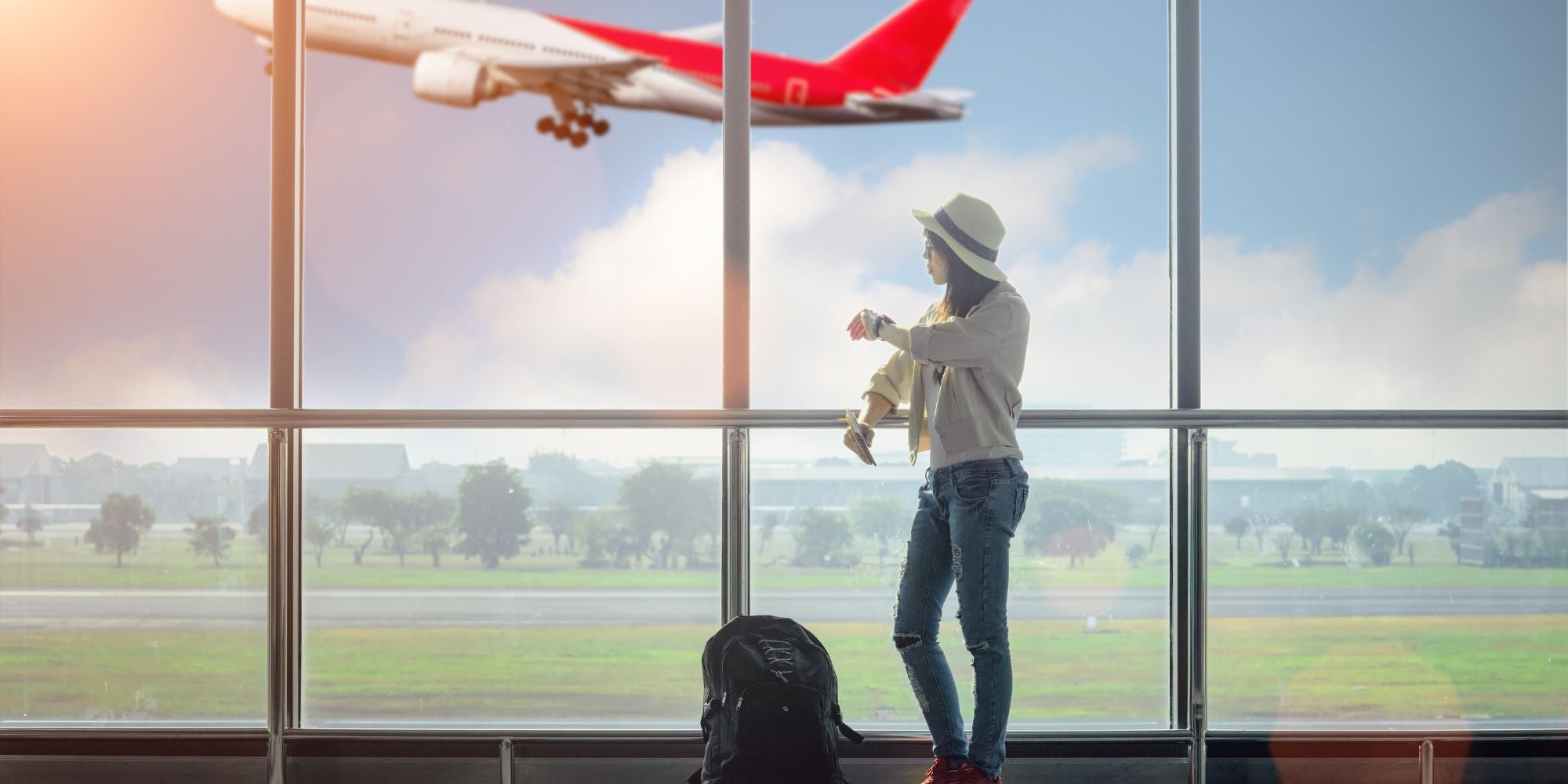
Table of Contents
What causes japan jet lag, how bad is jet lag from us to japan, how long does jet lag last from us to japan, do you gain or lose time flying to japan, is jet lag worse going to japan or coming back, 9 tips how to avoid jet lag flying to japan, 1. stay hydrated, 2. adjust your schedule before flying, 3. fast during flight, 4. switch to japan time on the plane.
- 5. Take Antioxidants
6. Get Natural Sunlight
7. avoid alcohol and caffeine, 8. arrive early, 9. exercise daily, top travel supplement.
When flying to Japan, the time difference is significant and cause jet lag that sets your trip back. With up to 70% of long haul travelers experiencing jet lag, it is essential to prepare well in advance and make necessary adjustments.¹⁶ As a company that works in the travel industry, in this article we will provide you with everything essential for you to know about Japan jet lag and our nine top tips on how to avoid jet lag when flying to Japan .
Jet lag is a condition that occurs generally when your body's internal clock is disrupted by traveling across different time zones, but there's even more factors. It can result in a range of symptoms, such as fatigue, insomnia, irritability, gastrointestinal problems, and reduced cognitive function.
The severity and duration of jet lag depend on several factors. Here's the top 5 causes of Japan jet lag:
The compound effect of these factors contribute what we call jet lag, and can take days off your trip if you're not careful or well prepared.
Jag lag can be really bad going to Japan with approximately 11-15 hours of flight time and crossing 14-17 time zones.¹⁰ And that's if you're on a non-stop flight
Japan is one of the longest flights from the US, up there with Singapore and Australia . This can cause sleeping issues, extreme fatigue, upset stomach, constipation, diarrhea, feeling ill, and mood swings.
On average they say it take one day of recovery for every 1-2 time zones you cross. With crossing up to 17 time zones from the US, Japlanease advices that it can take about a week to fully adjust.¹¹ However, being a wesdword trip it should be a bit easier, the first few days being the worse, then gradually gettin easier.
This is why it's important to read our tips below on how to beat jet lag to Japan.
How Long Does Jet Lag Last From Japan To USA?
Sources say it's about a week to recover from jet lag coming back to the US from Japan. However, going eastword is more difficult in terms of jet lag and you could feel symptoms longer and more intense compared to flying US to Japan.
You will lose time when flying to Japan from the US, as an eastern headed flight up to 17 hours.
Do You Lose A Day Flying To Japan?
Yes, you will lose a day flying to Japan from the US. For example, if you leave by airplane in the morning on your first day, you will arrive in Japan or Tokyo at evening time on the second day.¹³
- Flying west to Japan, gradually get to bed 30-60 minutes later each night
- Flying east leaving Japan, gradually get to bed 30-60 minutes earlier each night
If you do this each night, you could get between 1-5 hours of time changes to closer align to Japan's time before you arrive. This would lessen your time change adjustment and jet lag.
5. Take Antioxidants

Also in Blog

How to Train for High-Altitude Endurance Exercise at Sea Level
Continue Reading

How Long Does Altitude Insomnia Last? (And 8 Tips)

6 Top Liver Support Tablets
Sign up for our newsletter.
- Refer a Friend
- Get Involved
- Do not sell my personal information
*These statements have not been evaluated by the Food and Drug Administration. This product is not intended to diagnose, treat, cure, or prevent any disease. *Setria and Sustamine are registered trademarks of Kyowa Hakko Bio Co Ltd.
© 2024 Zaca .

First Time Travelling to Japan? Here’s our Ultimate Guide for Your First Day in Japan
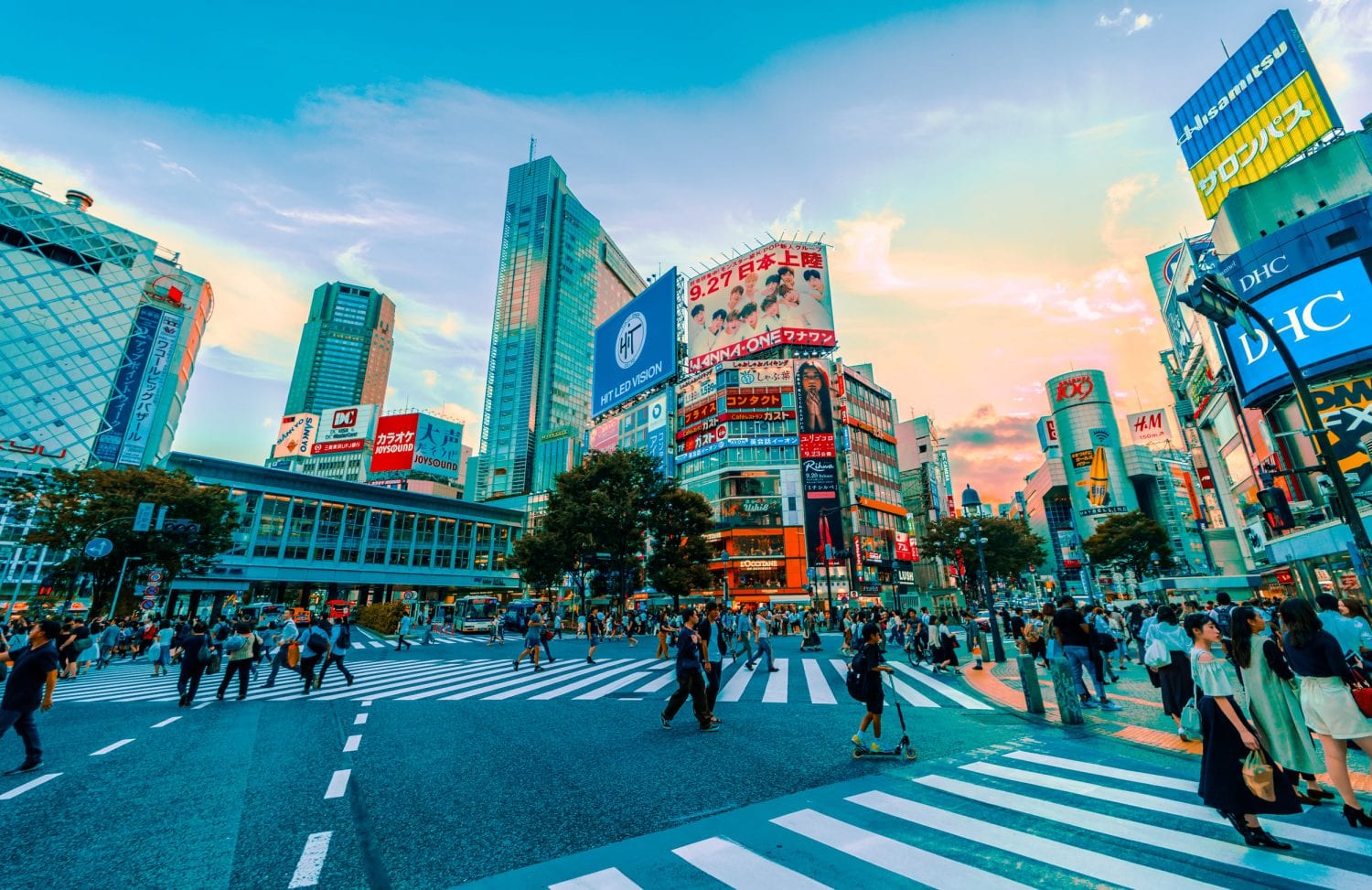
Travelling to Japan as a first-timer is a daunting experience. Going to a city where they don’t use the Roman alphabet, let alone speak the language, is just one more hurdle that can make those first few hours in the city more confusing and intimidating. But trust me , Japan is one of the most incredible cities in the world. The kind people you’ll find there are always more than happy to help you with any pickle you might find yourself in. That being said, after many “first times” in Japan, I’ve plotted my top tips to ensure your first few hours go as smoothly as possible. You’ve set yourself up for success for the rest of your trip to Japan!
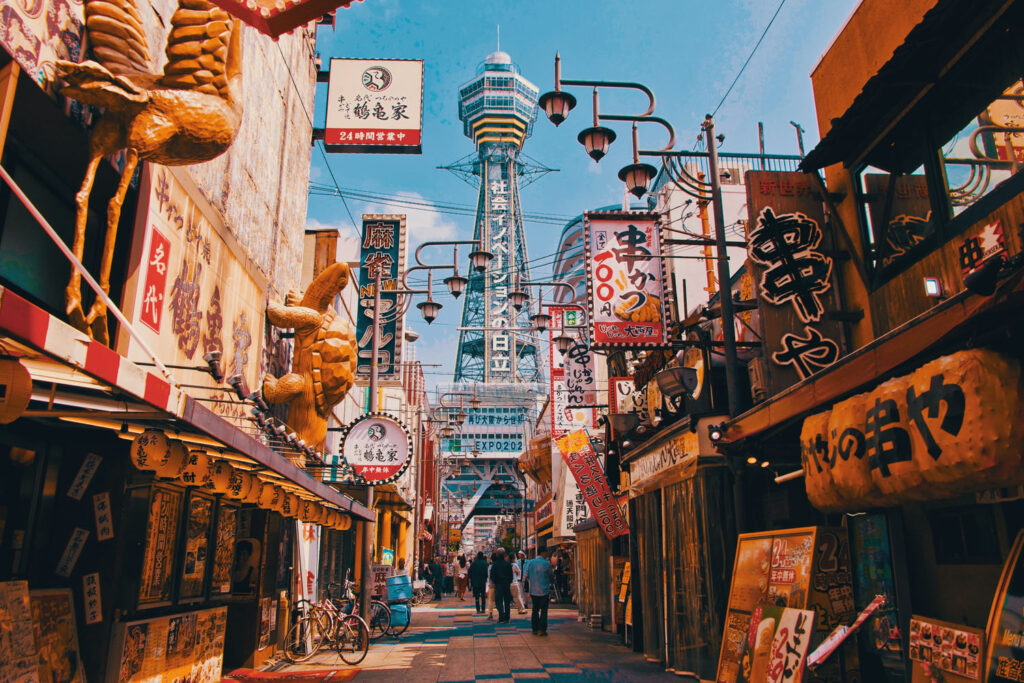
Download Offline Maps
Wifi-hotspot, airport limousine bus, reading the vending machines, japanese hotels, vending machine-operated restaurants, buy your suica or pasmo card.
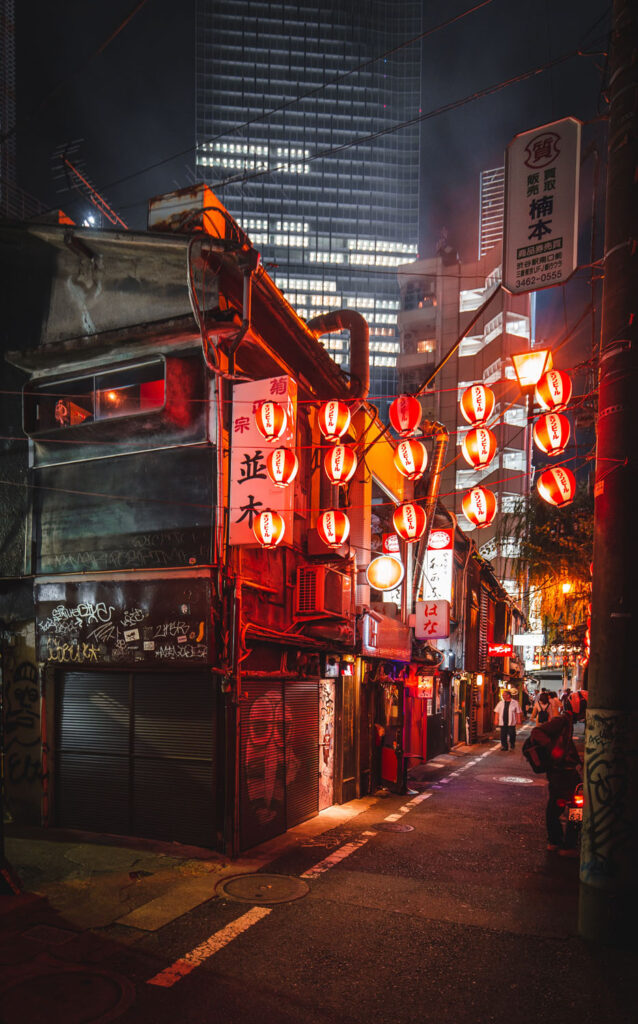
What to Pack
For the most part, travelling to Japan requires some same things you pack for any other trip. But there are a few items I wished I had had with me the first time I arrive. And was sure to pack these the next time I travelled to Japan. So I wanted to make sure to share a few of them!
A good Coin Purse
I’m not much of a purse person, to begin with. I travel everywhere with a backpack and wallet. But in Japan, you’ll need so many coins at all times! You’ll need coins for vending machines, some restaurants, temple donations, arcade games and more! Fumbling through your wallet or bag to find the exact change can be painful. With the addition of a small coin purse, I could easily find the right amount I needed at a moment’s notice.

Slip-on Shoes
Make sure you pack a good pair of slip-on walking shoes. Many restaurants and hotels require you to remove your shoes when you enter. Anything with complicated laces will slow this process and become quite irritating when you’re still tired from the long flight. And make sure these aren’t cheap shoes either. You will be walking a lot in Japan so you definitely should invest in a very comfortable pair.
Covid Masks
Although Japan has finally reopened its borders to international travellers, they still have stringent rules around wearing masks to prevent the spread of Covid-19. Masks are required indoors unless you are not talking and are more than two meters apart. When you are in restaurants, you are requested to wear your mask when you are not eating or drinking.
You do not need to wear a mask outdoors, but if you are in close contact with someone outside, it is recommended to wear a mask. You will still see lots of people wearing their masks outside. I would always lean on the side of being considerate and follow the locals to see what they are doing and do the same. While there are plenty of places to buy masks all over Japan you never want to be caught without one. So be sure to pack a few and carry them with you at all time.
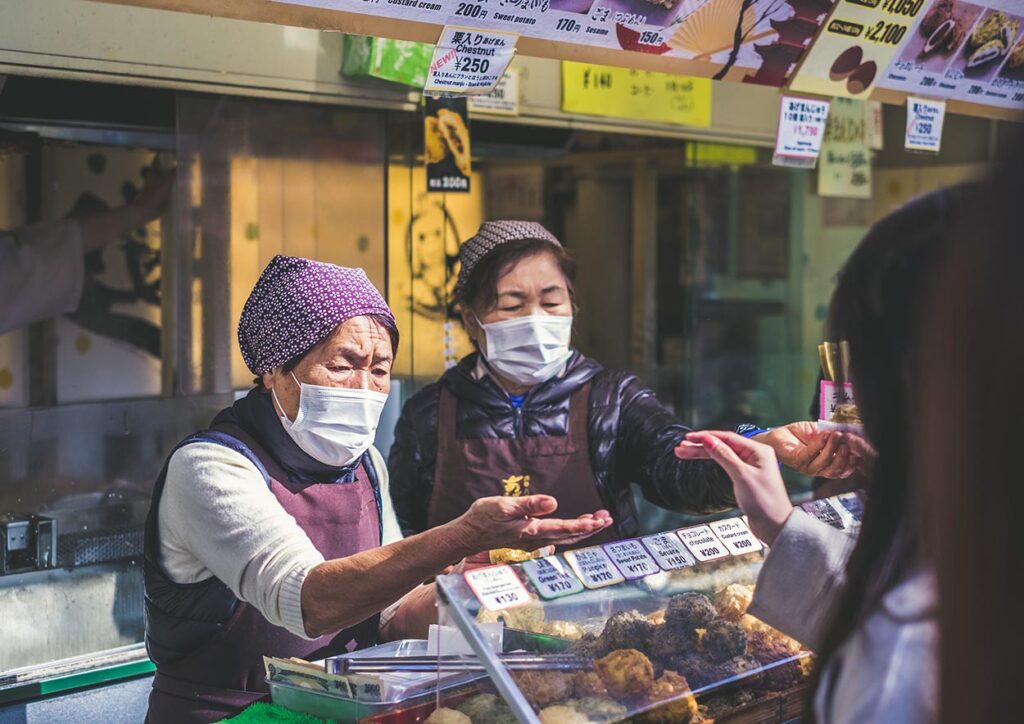
Downloading some offline maps will definitely help you with navigating your way around the notoriously complex street systems in Japan. Even if you have access to wifi/data on your trip, maps often load slowly. Plus they tend to use a lot of data. Downloading offline maps before you leave for the various cities you’re visiting will save you a ton of data and time. Also, be sure to download the Navitime app which will give you transit directions in English for any train and metro journeys you might take while in Japan.
Preparing for your Flight
Packing your carry-on.
These days, checking your luggage has become a thing of the past. Not only is it almost always an extra few hundred dollars, but the amount of times flights have lost my luggage is climbing up into the double digits. This has resulted in packing a carry-on bag, more and more important, in ensuring everything you brought with you makes it to your destination. For tips on how to pack the perfect carry-on for a long-haul flight, read this post !
Pick the Right Seat & Upgrade to Exit Row
Depending on where you’re setting off from, you’re most likely looking at a 13-hour flight to Japan. If you don’t have the cash to splurge for first class ( and let’s face it, whoever does,) see if you can upgrade your seats to the exit row. For my last flight, it was an extra $150 to book the exit row. And it was some of the best money I ever spent.
Exit row gives you ample legroom, lots of space to get up and stretch. Plus. there is no one in front of you to recline their seat down on top of your head. The exit rows tend to be a little colder, as your seated beside the door, so always pack a light scarf with you. And you can always use your coat as a blanket. Some airlines even provide blankets free of charge on long-haul flights, so never be shy to ask for an extra one if you need it. Be kind and make friends with the flight staff, and you’ll have all the more of an enjoyable flight.
Skip the Middle Seat
If you’re travelling with two people, another money savings hack that will work every so often is booking the window and the aisle seat. Instead of booking the middle seat and aisle/window. When other people are booking their seats, they will almost always skip choosing between two people. So if your flight isn’t 100% full often, you’ll find the seat will be free, and you’ll be able to spread out. And if someone does show up and you want to sit beside your flying partner, everyone will jump at the chance to switch from the middle to the aisle or the window. This won’t work every time, but trying is never harmful.
Ensuring a Good Night’s Sleep
If you’re planning on getting any sleep on the plane (which hopefully you are), there are a few essential items to bring. These will ensure you’re giving yourself the best chance of getting some shuteye. The flights usually are good about turning off the lights when it’s time to readjust your sleep schedule. But if the person next to you is reading and has the lights, it’s important to ensure you have a good eye mask . That way you can shut out the light and try to adjust to a new time-zone.
Another thing I do to lull myself to sleep is to bring a travel-sized bottle of lavender spray. I just transferred this Lush Twilight spray to a tiny travel perfume spray atomizer . Before getting on the flight I spray a little on my neck pillow and scarf. This soothing scent helps calm me down during any turbulence and puts me to sleep once I’m nice and relaxed.
If you need an extra bit of help getting to sleep, you can take a small dose of melatonin . While I don’t recommend this for the long term, it is a great way to help readjust your sleep pattern temporarily.
Noise-cancelling earbuds or headphones are a great way to ensure any noise will be blocked out and you can simply sink into a good night’s sleep.

Use the In-Flight Time Wisely
When you aren’t sleeping, spend this time reviewing your Japanese phrase book . About a month before your trip I would recommend downloading apps like Duolingo , to help learn some key phrases. But during the long flights, it’s a great time to have a little crash course in the language.
Japanese is such a beautiful language; I only grazed on the surface. But it’s important to at least try to learn “please,” “thank you,” “hello” and “goodbye.” I was thrilled with how much I could retain and even how even speaking a few words would bring huge smiles to people’s faces. It was definitely worth the time I put into it.

Arrival & Immigration
Before you land, you’ll be given an incoming passenger card to complete and give to the immigration officer. It’s a simple card with how long you’ll be there and where you’ll stay. Make sure you have the addresses of your accommodations written down or screenshotted on your phone as you won’t have wifi in the air.
Once you land in Japan, you’ll most likely be a bit jet-lagged and tired despite your best efforts to get some sleep. But luckily for you, Japanese airports have some of the best signage in the world and making your way to immigration and baggage claim a seamless process. Signage from the plane to get to immigration is all in Japanese and English.
Once you arrive at the immigration desk, they’ll check your card (make sure you didn’t miss any information), take your picture, and index your fingerprints. Don’t worry; this happens with everyone; you’re not being singled out. And that’s all. You’re ready to head into the city!
Using Data/Wifi in Japan
Japan can be pretty daunting for new or first-time travellers. And having access to the internet for directions, translations, and more can be key for your comfort. But roaming with most phone plans is extremely expensive. Luckily, there are many other options to ensure you have the internet at your fingertips.
My newest favourite option for international travel are eSIMs. Most new phones will have both a physical sim and what’s called an “eSIM.” Before eSIM, most people would buy a physical sim, but this was often time-consuming and much more difficult to set up.
An eSIM, or Embedded SIM, is a virtual SIM card stored on your device rather than in a physical card form. An eSIM allows you to activate and manage your mobile service directly on your device without needing a physical SIM card.
To set up an eSIM, you will also need an active mobile plan from a carrier that supports eSIM. I use Nomad as my provide. They make setup super easy, and their rates are excellent. 20 GB will cost only $34 USD, which is tons of data. Most likely, you won’t need that much. You can use my code: LAUR66NY , to get $3 off your next eSIM purchase. You will need to turn off your physical SIM and phone number associated when you activate your eSIM, so be sure you download an app like Whatsapp to keep in touch with your contacts. Since Whatsapp will still work with your new eSIM.
Another option is to use what’s called “ pocket wifi .” Pocket wifi devices are portable internet you can pick up or purchase in Japan. They are just like a mobile hotspot. Ninja Wifi was my favourite provider as their speed was excellent, and it costs about $30 US for five days. The more time you rent the device, the cheaper it gets daily. I would never travel to Japan without one of these since free wifi is really hard to come by in Japan. Definitely don’t rely on that as your main internet access method. When you’re done using it, they come with a pre-paid envelope to mail them back to the company. So just place it inside and find the nearest mailbox to throw it into.
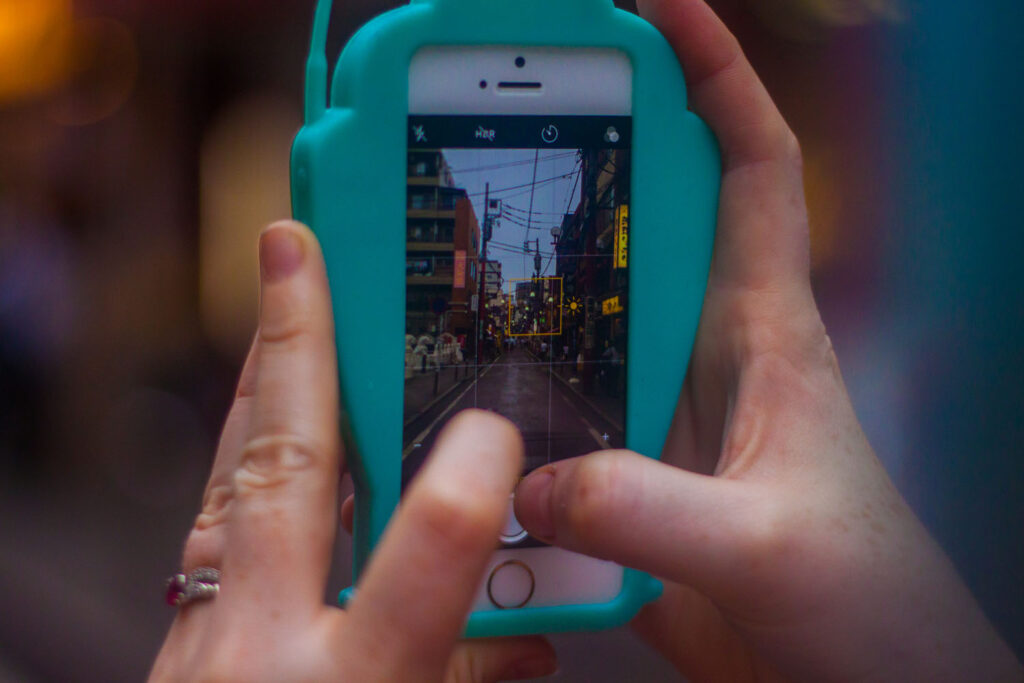
Get some Cash
If you didn’t go to your bank before leaving to get some local currency, you’ll want to hit up the ATM in the airport. Despite Japan being considered a modern country, there are different ways in which it feels much more old-fashioned. One of these ways is that most places only accept cash. Credit cards are only generally accepted for large purchases.
All those little ramen shops you are dying to visit won’t know what to do with your credit card. Cash is king in Japan. And you always want to ensure you don’t run out! You don’t want to miss out on a unique street snack that’s only available seasonally at this one location , and you find yourself out of cash! If you’re worried about carrying around so much cash for fear of being robbed, don’t be. Japan is one of the safest countries in the world.
Transportation from the Airport
Public transportation.
Transportation to and from the airport in Japan is very convenient. Although your first thought might be to grab a taxi, these are generally the most expensive method of transportation. In big cities like Tokyo, and Osaka, you’ll be able to take the train directly from the airport and get to the city’s centre in no time.
If you’re looking for a more direct route into the city my favourite method is taking the Airport Limousine Bus. The Airport Limousine Bus service takes passengers from the arrivals terminal to hundreds of drop-off locations around Tokyo. No matter where you’re staying, you’ll find a drop-off location minutes away. I like the bus service better than the trains from the airport because it’s a lot less stressful. The train system in Japan can be overwhelming at the best of times, and post-long-haul flight, the airport limousine bus is a breeze! You just go up to any of the orange kiosks in the arrivals terminal and select your destination. It’s good to research their site in advance since there are many options for destinations.
Tickets cost around ¥1000 ($10 US) and maybe a little more or less depending on the distance from the airport. The airport limousine buses have free wifi on board, and I loved getting a good first look at the city as we drove in. The underground trains don’t give you this amazing viewpoint as you enter the city.
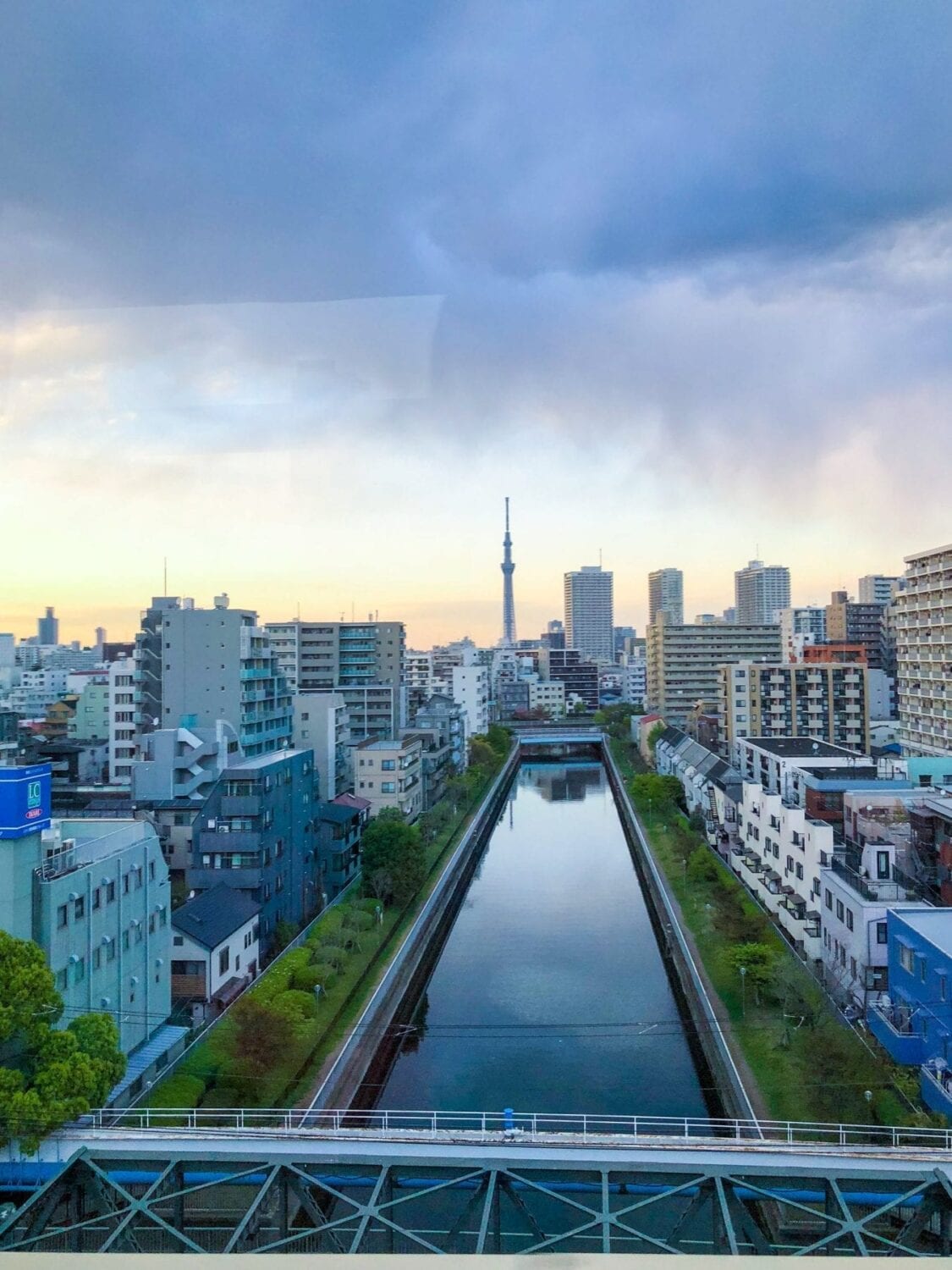
Grab a Drink from a Japanese Vending Machine
While waiting for your bus or train to arrive at the airport, pass the time by exploring the Japanese vending machines ! As soon as you step off the plane you’ll see them everywhere. It might seem silly, especially to Japanese people for whom these are ubiquitous, but I’m obsessed with these . Japan is the mecca of vending machines . I am fascinated with the way they work, the way they look, and especially the unique treats inside. Old, new, big and small and full of all sorts of goodies.
The vending machines we found at the airport were relatively standard compared to those in the city’s hub. However, seeing drinks I’d never even heard of was still exciting. Mostly, you can surmise what kind of drink it is from the images on the packaging. But you’d be amazed at how many different flavours and varieties there are!
The colour of the buttons on the vending machine denotes whether the drink is hot or cold. Red for hot, blue for cold. That’s right, hot beverages like tea and coffee come right out of a vending machine! Grab yourself a warm can of coffee and give that a try for the first time. You’ll be pleasantly surprised at how delicious these are. Coffee is just the thing to keep you from crashing on your way to your hotel. And staying awake a little bit longer is key to preventing jet lag . The worst thing you can do is fall asleep as soon as you see that bed and find yourself wide away at 2 am.
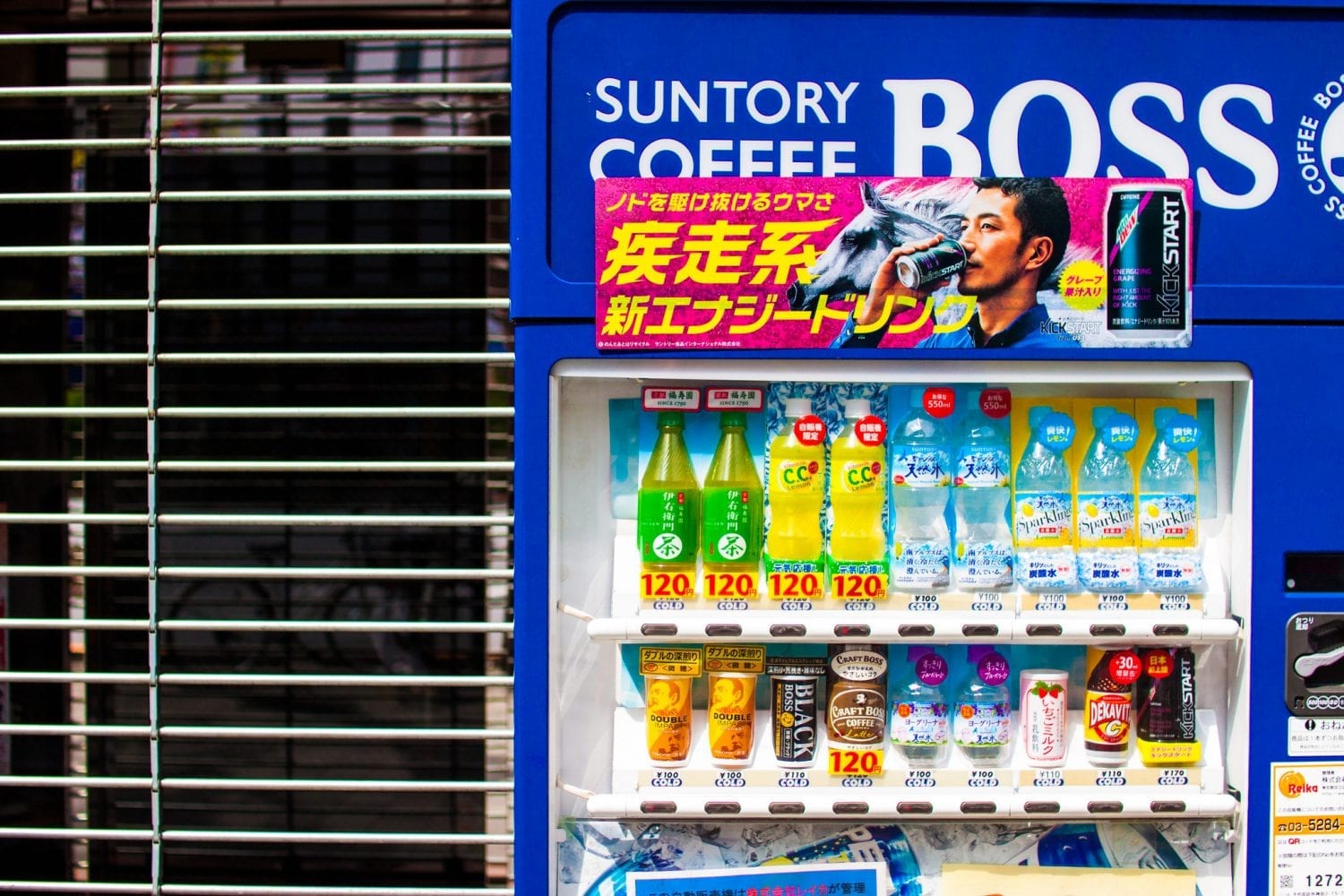
Checking into your Accommodation
There are multiple options for accommodation in Japan.
Capsule Hotels / Hostel
Capsule hotels are no doubt the most trendy option. These are very inexpensive and a one-of-a-kind experience. Capsule hotels are small, modular structures that contain individual capsules stacked one on top of another. Each capsule is a tiny room that provides just enough space for a person to sleep, typically with a bed, reading light, and power outlet. Some capsule hotels also have communal areas such as showers, toilets, and lounges. They are great for solo travellers or anyone wanting to save as much yen as possible.
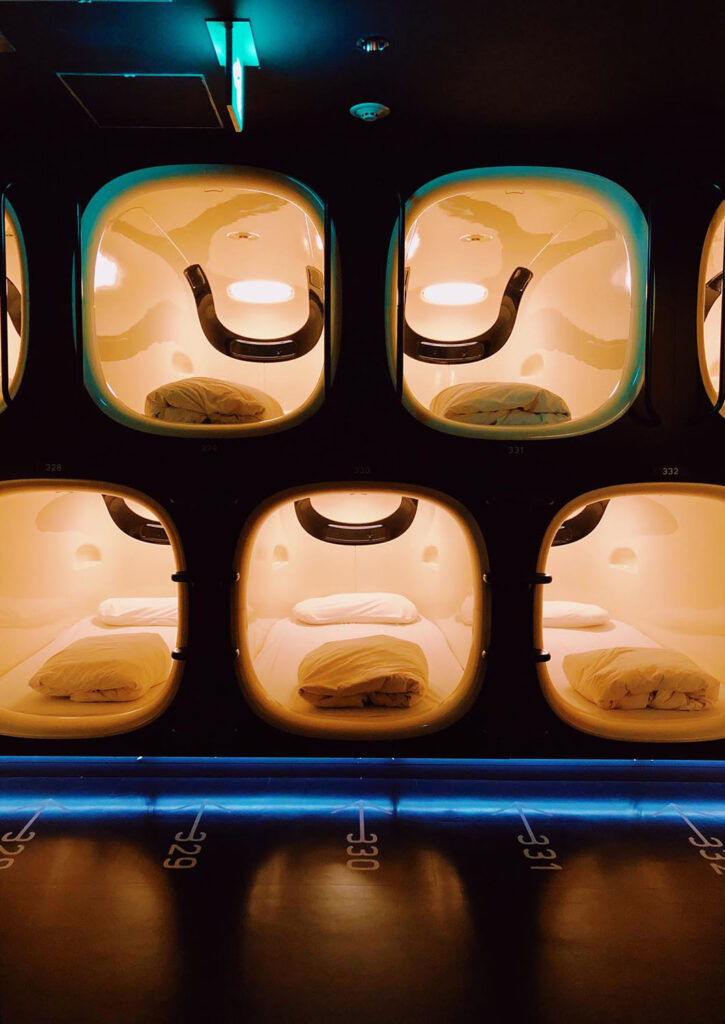
Ryokans are traditional Japanese-style inns with rooms that offer guests tatami mats, futons for sleeping, and communal hot springs or onsens. They often have a minimalist design and are meant to provide guests with a serene and peaceful environment. Ryokans are known for their hospitality and attention to detail, with staff often going out of their way to make guests feel welcome and comfortable. These often come with luxurious dining experiences often served in your room. They are pretty pricey so maybe someplace you want to splurge on for a single night.

My recommendation for first-timers is a hotel . While perhaps that might sound a little boring, hotels are often a great place to stay that’s both slightly familiar and a new experience. The staff in many of these hotels don’t speak much English. But are all incredibly helpful with the use of a little bit of non-verbal communication.
Prepare yourself in advance for the size of a Japanese hotel room. The rumours are true, and most hotel rooms are shockingly tiny in big cities like Tokyo. There is often not even room for your luggage without it being in the middle of the room. Be sure when booking your hotel room you ask for a “ western style bed” since traditional Japanese beds are hard as a rock. Also, if you book a room with a “double bed,” expect it to be tiny. All the bed sizing in Japan is smaller than in North America, so it’s always advisable to size up. The best option for the price is to book a room with two singles and push them together ! This is actually what most Japanese travellers do.
Despite how comfy your room might look, drop your bags and head out the door right away, don’t give yourself a chance to get comfy and lulled into sleep.
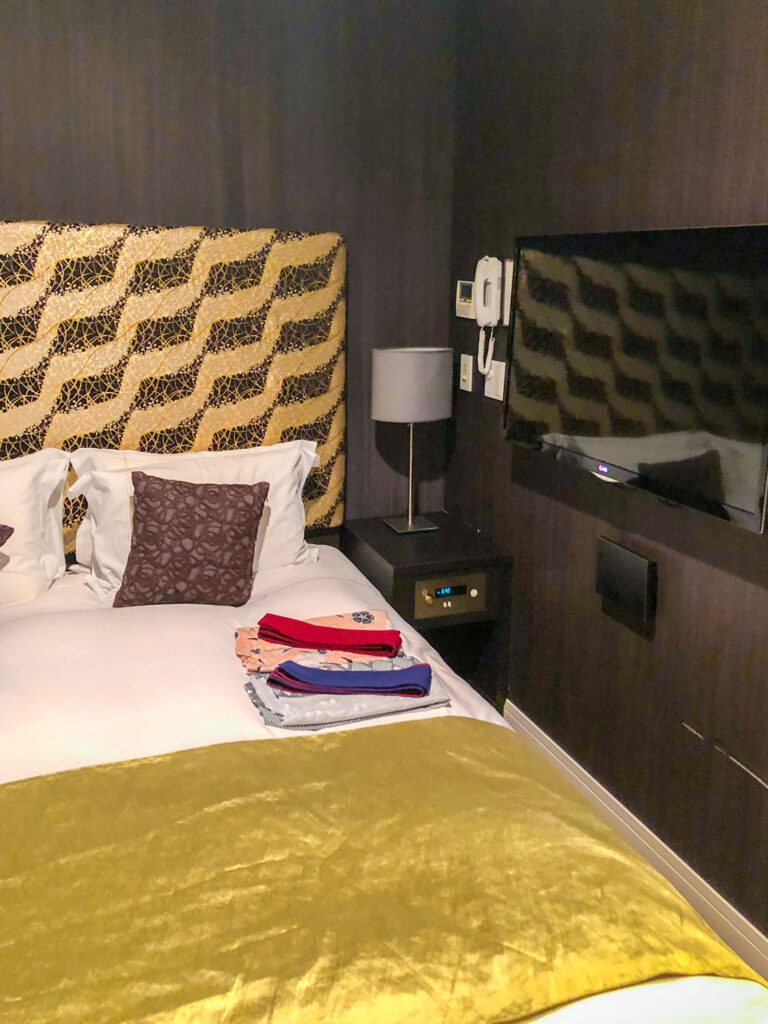
Go for a Walk
One of the best things to wake you up and keep that jet lag at bay is a walk around the bright neon lights and visual sensations that is Japan . By this time of the day, most businesses will be closed. The sidewalks are clamouring with young teens playing arcade games, giggling nervously at the women dressed in maid costumes advertising their maid cafes. Dozens of Salarymen in white button-ups and black slacks are just getting their night started and gregariously piling themselves into bars, singing along loudly to whatever K-Pop is blaring on the radio inside.
There is nothing like your first time walking down the streets of Tokyo, especially in a busy neighbourhood. Soak it all in but don’t worry if you feel overwhelmed. That’s natural, particularly if this is your first time in a huge city. If you’re looking for a break from the crowd, duck down a small side street or alley. You’ll be immediately met with peace and quiet, as even the loudest Japanese partier is also always very respectful of their residential neighbours.
Get Something to Eat
You’ll undoubtedly be excited to dive into Japanese cuisine after a long day and nothing but airline food. My advice for the perfect first-time meal is a bowl of ramen. Ramen shops are all over the place, and there is no such thing as a bad bowl of ramen. So you don’t need to worry about researching where to do it; just find a shop that catches your eye and head inside.
Most small ramen shops operate with a vending machine kiosk. At the front of the restaurant, you’ll see a huge vending machine with different coloured buttons, each with pictures of ramen and perhaps a few side dishes. The buttons will also display the price of the meal. Put your money into the slot at the top and press the button of the meal item that catches your fancy. Out of a small slot at the base of the vending machine comes a little paper ticket with your order printed on it, in Japanese, of course, and any change from the bill you put it. If there is a line, get in the queue to wait your turn to be seated. If there’s no line, head right inside and take a seat.
Then all you need to do is give your ticket to the chef, who will prepare the meal as indicated. This might seem strange, but it’s an ingenious way to cut down on staff and allow the chefs, who also act as the waiter and server, to get your order without ever having to touch dirty money. One of the best parts of a ramen shop is sitting at the counter and watching the cooks at work. They effortlessly perform this dance, filling bowl after bowl with hot broth and whipping around the bar, grabbing stacks of toppings with deft movements to create your food fantasy!
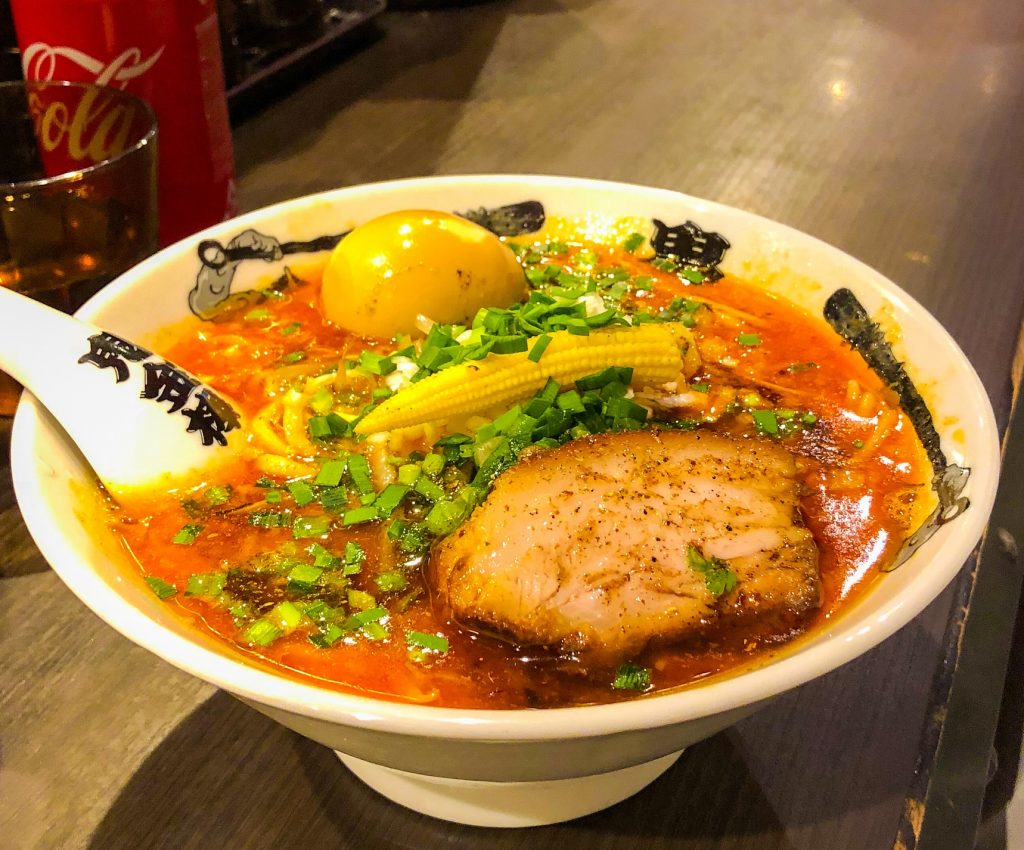
After filling up some food, head to the closest train station to grab your Suica or Pasmo Card ; a Suica or Pasmo card is a metro pass that you load up with the money to use on the train. You can simply swipe your card when entering and exiting any train station. Your fare will automatically be calculated and deducted from your card. This makes it so simple to travel on the metro since the Japanese subway system requires you to pay different fares for different distances.
If you don’t have a Suica or Pasmo card, you’ll have to figure out which fare you’ll need to pay for every trip you take based on the distance. Armed with these cards, you’ll be ready to hop on the metro the next day without fighting the morning crush of people. Just check the balance frequently to ensure you have enough money on the card. To purchase a new card, you just head to any machine in the station with the words “buy a new card” on it. The signage is in English and Japanese, and the machines themselves have English menus making it easy to buy or refill your card.
Visit an Arcade
After picking up your Suica cards, seek out an arcade! These behemoth arcade buildings are sometimes up to six floors of fun, each offering something different. Taito and Sega are reliably the best options for arcades. The first floor of most consists of UFO catcher machines, while the upper floors each have different sets of video games to play with friends or on your own. Some levels felt more like casinos, full of smokers playing digital slots or the Japanese gambling obsession Pachinko . The machines all cost a few hundred yen to play, and you can either pay with coins or tap your Suica card to have the money deducted from there!
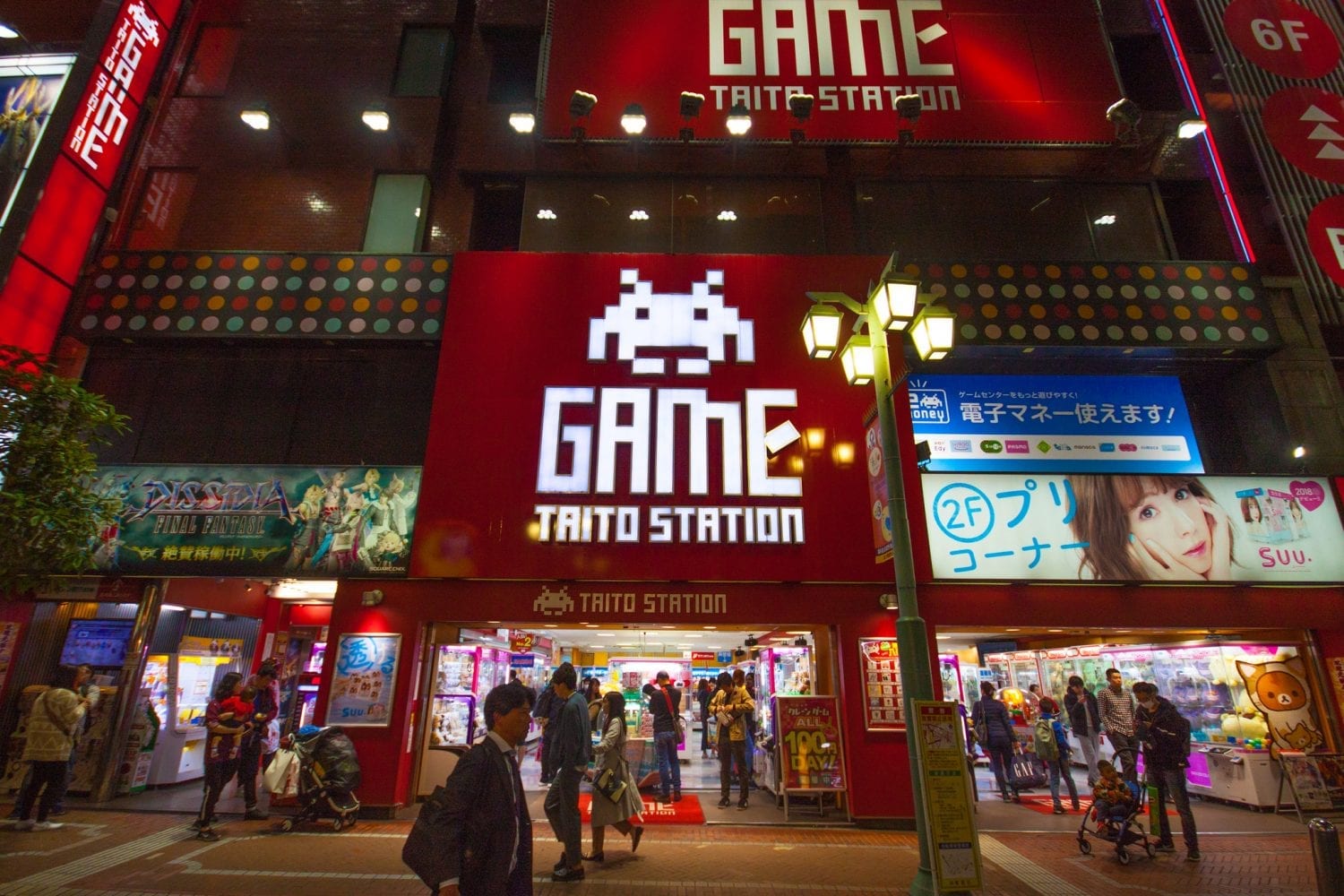
In the basement of these arcades, you’ll find dozens of these Purikura photo cubicles, each from a different company offering a unique experience. Purikura is where you can get those classic Japanese printed photos, add text and stickers, and give your face the “anime” treatment. The Purikura experience costs 500 yen ($5 US). Once you drop the coins inside the payment machine, the screen will direct you to your starting photo booth. Unlike photo booths in North America, where you step in and just take your picture, these use a green screen. The camera will direct you (almost always in English and Japanese) to pose and take pictures. The camera moves around, so you get different options from portrait mode to full body and sometimes animated GIFs.
Once you finish your photoshoot, you’ll be directed into another booth where you’ll get to decorate, alter, and add filters and text to all the photos you took. Often this process is timed, so keep an eye on the clock. Afterwards, your photos will be arranged into a collage (often picked by you) and printed out at the station where you initially put your coins. It was great fun trying out different poses and spending as much time as we were allowed decorating the photos into something absolutely ridiculous . Trust me, this will make for an incredible first Instagram of your trip!

Find some Gachapon
Gachapon refers to little vending machine capsule toys. The word ‘Gachapon’ is onomatopoeia for the sound the crank makes when you use the machine. These devices each contain different sets of toys, and you never know which item from the set you will receive. It’s totally random. Most sets include some rare items which become sought-after collector treasures. The toy sets change frequently, so there’s always something new to buy. My inner child (and let us face it, current adult) was immediately drawn to all the ‘Sailor Moon’ sets.
I decided to go for the most expensive machine, where you could get one of 5 different Sailor scout wands. I got Sailor Jupiter’s – my favourite Sailor Scout – and had a lot of fun back at the hotel putting the wand display together. There were toy sets of little cats sitting on rice cookers, tiny replicas of vintage buckets, Pokemon cookie toys and lots of Japanese characters often themed along with the next holiday. These make for small, cheap souvenirs to bring home for friends and family, as they are wonderfully weird and always unexpected.
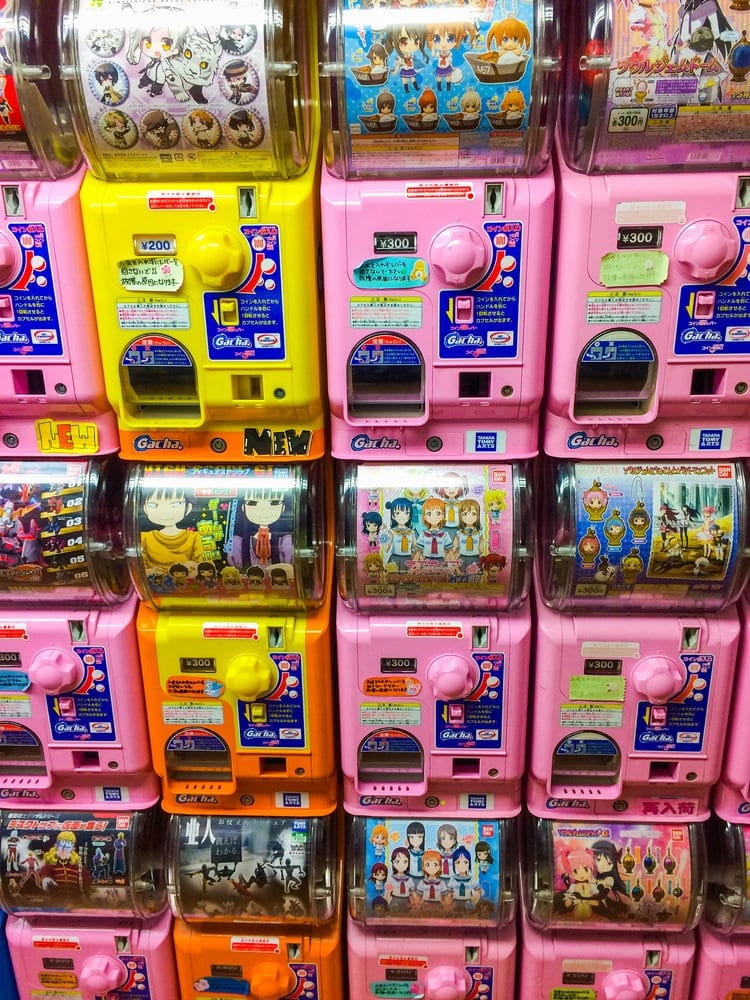
Grab Breakfast at the Conbini
By this time of night, if you’ve managed to stay awake, it’s time to head back to the hotel. But before you do, stop into a ‘conbini’ (Japanese convenience store) to grab a few items for breakfast. 7-Eleven, Circle K, Lawsons and FamilyMart are the most common stores you’ll find on every corner in Japan. Breakfast in Japan is taken on the go, so you won’t find many restaurants open early in the morning. Picking up some items for a little in-hotel picnic is a great idea to help take it easy on your first morning.
My favourite treats to buy for the morning are an egg salad sandwich (honestly one of the best things you can eat in Japan, sounds weird, but TRUST ME), a baked sweet treat filled with matcha, a can of coffee or latte to crack open in the morning for instant caffeine, and a ball of onigiri. This array of treats is sure to give you a reason to get up in the morning, no matter how tired you feel.

And with that, your first day in Japan comes to a close. Hopefully, with all these tips, you’ll have an incredible first few hours that will result in minimal jet lag and leave you excited for the rest of your time in Japan! Below I’ve listed a few important customs to keep in mind which might surprise you as you experience Japan for the first time. Culture shock is part of travel, but don’t let it overtake you. Embrace it and even try to see if you can follow along with the culture and customs while visiting this incredible country!
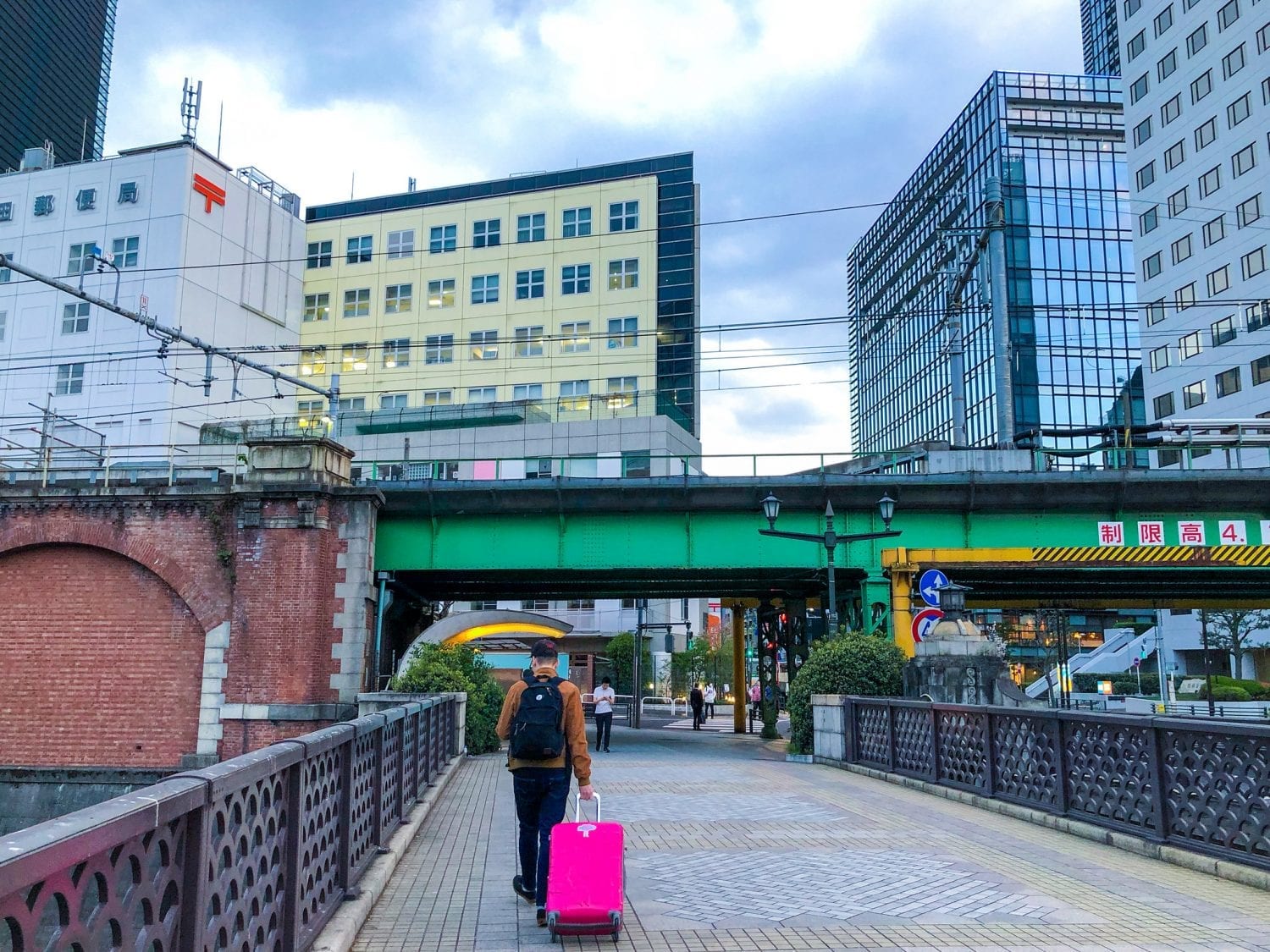
Customs to Keep in Mind
Tipping isn’t something that is part of Japan’s consumer culture. They believe good service should be something you always should be provided and not something that is earned through money. If you leave money on the table, don’t be surprised if the waiter takes you down the street thinking you might have left it there accidentally. A great way to show your appreciation for excellent service is to learn a few Japanese phrases to tell your waiter, chef or receptionist how much you appreciate their service.
Be ready to bow
Bowing is a sign of respect in Japan, so don’t be surprised to have people bow to you at your hotel, coming onto the bus or even just on the street if you’ve had a particularly lovely interaction. Can foreigners bow, you ask? Most Japanese people don’t expect foreigners to bow, but I found them whenever I simply mimicked exactly what their bow was like; they seemed to respond very positively and loved I made an effort.
Don’t Forget to Bring a Plastic Bag
Garbage cans are one of the most challenging things to find in Japan. The only public place where you can reliably find these is outside of convenience stores. But don’t let that make you think they’ll be garbage all over the place. No, Japan is the cleanest country I’ve ever visited. Locals carry their trash with them until they can find a trash can or often until they get home so they can adequately sort it. Play with the locals and ensure you have a plastic bag to carry your garage and that you’re not ruining their clean streets.
Learn to Line Up
Lineups in Japan are a way the city manages its deluge of people. Everyone is very respectful of the line. There are never any budding or large random groups, everyone takes the idea of lining up seriously, and you should too. Large masses of people taking the subway daily are efficiently organized into two or three lines making even the busiest commute very coordinated. Keep your eye out for lines as they often signify something popular that you wanna jump into. Most often, it is related to food, and you’ll never be disappointed.
Slurping is Key
In North America, slurping might sound rude or low-class, but in Japan, it is a sign of your appreciation for the food. Slurp loud enough that the chef in the back can hear you are going at it!
Ladies only subway cars
During certain times of the day, there are designated carriages for women on the subway. This is to keep them safe in full vehicles. The signs identifying these cars are in pink paint on the floors of the metro, so keep your eye out if you’re a male traveller and don’t want to get on these by accident, an embarrassing affair which we might have experienced once or twice.
Pay your bus fare when you get off
Japan is one of the only places I’ve visited where you have to pay for your bus far when you get off, not when you get on. When you get on the bus, you’ll enter through the back doors, and when you get off, you’ll exit through the front, where you can either pay the ash fare or swipe your Suica or pasmo card.
Don’t be scared of the mouth masks
If you see people wearing mouth masks, don’t be scared. They’re not an Ebola patient or a hypochondriac. These masks are worn to prevent other people from getting sick if you’re coming down with a cold, flu, or even allergies. Even if you’re the slightest bit under the weather, the Japanese plop one of these masks on, more for your protection and out of respect for others. They sell these everywhere, so if you feel like you’re getting sick, you should also don one.
Have you travelled to Japan before? How did you manage your first few hours in the country? Did jet lag get the better of you? Leave your experiences in the comments, or let me know if you’re planning to visit Japan and what other tips and tricks you’d like to learn!
Happy Travels Adventurers

« Everything You Need to Know Before You Visit Budapest’s Famous Thermal Baths and Spas
13 ways travelling the world in your 30s is different than in your 20s », you may also like.

Discover the Ultimate Guide to a Magical Christmas in Stockholm, Complete Included Itinerary [UPDATED 2022]
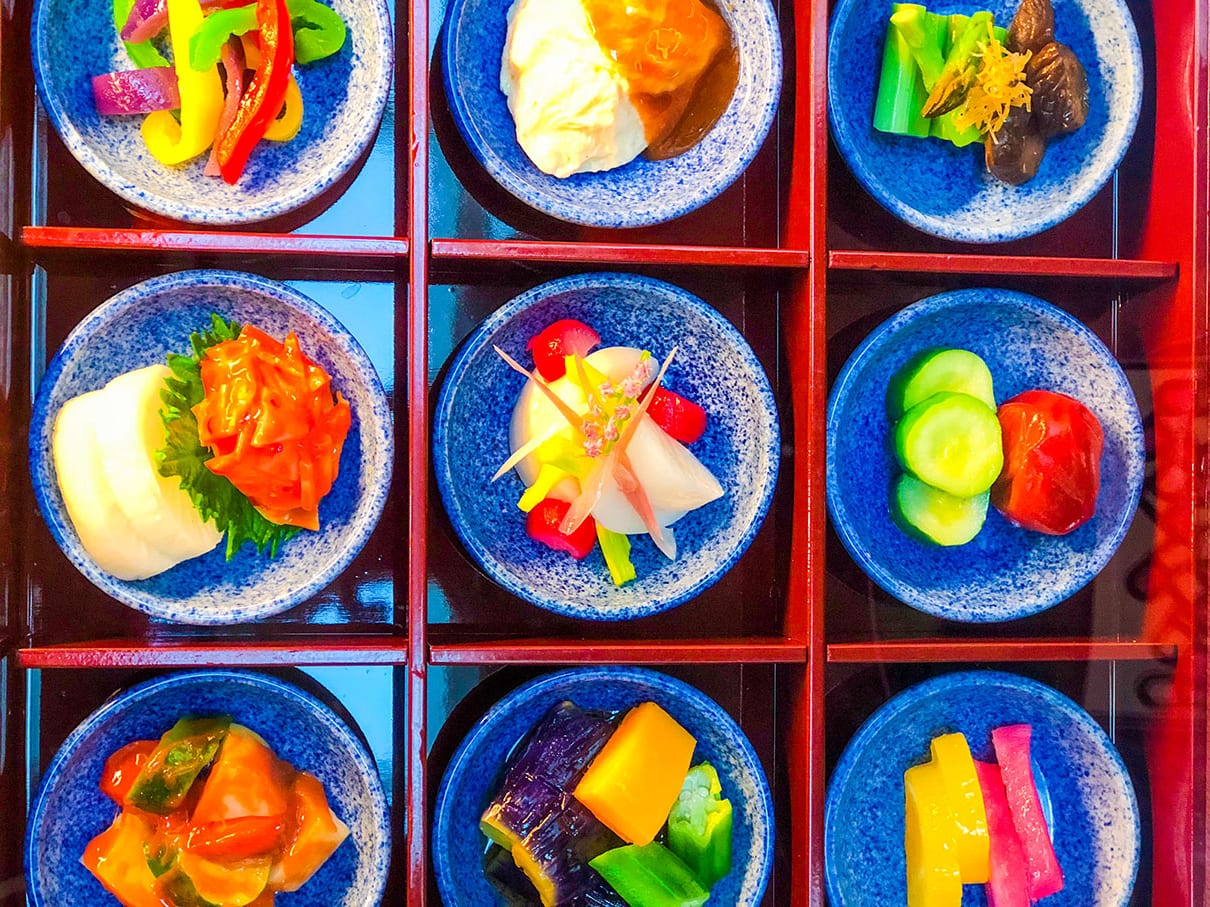
The Best Foods to Eat in Japan! The Ultimate Foodie Bucket List

Ultimate First-Timer’s Guide to Japan’s Onsen, Relax & Restore your Mind and Body
Leave a comment cancel reply.
Your email address will not be published. Required fields are marked *
Copyright @ 2023 The Creative Adventurer | All Rights Reserved | Privacy Policy
Make planning your Japan trip that little bit easier
Don’t Let Jetlag Spoil Your Japan Trip
Sharing is caring!
- Latest Posts
- How to Get from Haneda Airport to Kyoto - 26 April 2024
- How to Get from Narita Airport to Kyoto - 26 April 2024
- How to Get from Narita Airport to Asakusa - 26 April 2024
If you’re flying to Japan from the US or Canada, the UK, or Europe, there’s going to be a bit of time difference between your home destination and the time in Japan.
In fact, it can be as much as 17 hours ahead depending upon the time of year you travel and where you’re flying from. Add to this the disruption to sleep that can occur when you take a long flight and you’ve got a recipe for jetlag that can seriously mess up the first few days of your trip. So how can you reduce its effects?
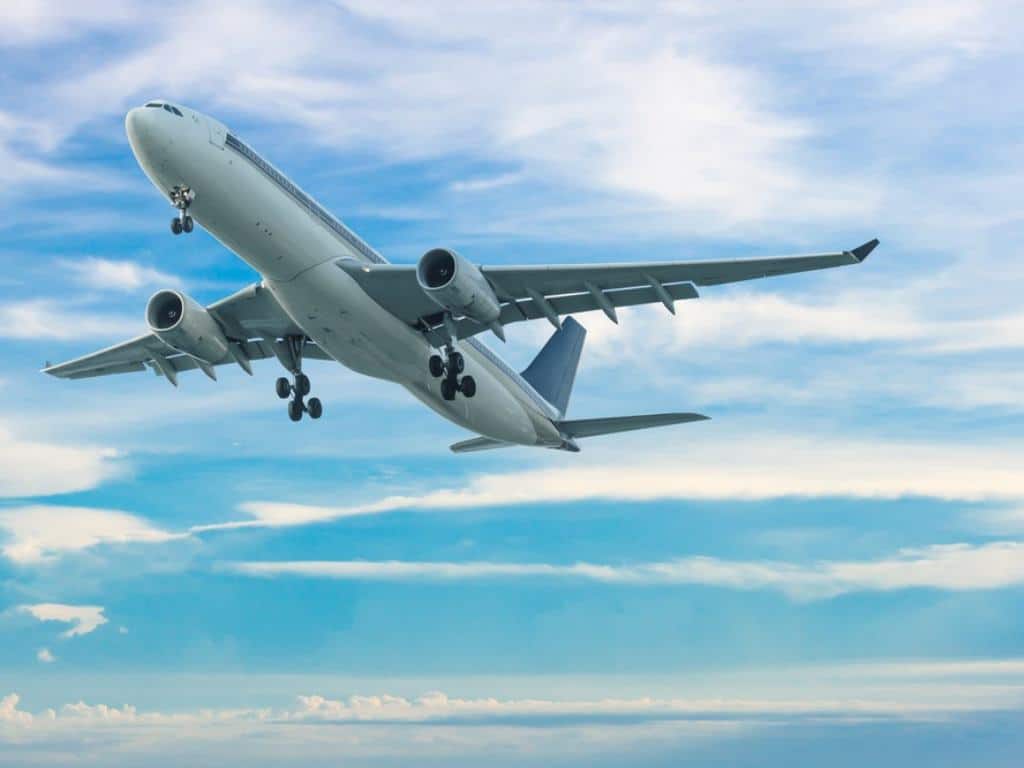
This post may contain affiliate links. I earn a small commission if you buy from these. Japlanease is a member of the Amazon Affiliates programme. As an Amazon Associate I earn from qualifying purchases.
What is Jetlag?
If you want to adjust faster, once you arrive, if all else fails.
Jetlag occurs when your internal body clock which controls when you wake up and when you want to sleep, and the time zone you fly to have a mismatch.
Your body thinks it’s 6 am and time to wake up but in reality, it’s 3 am (if you’ve come in from LA) and you need to stay asleep a bit longer if you’re not going to flake out over your dinner tonight.
Or vice versa!
If you fly in from London, for example, you could be trying to go to bed at 10 pm to get a full day of sightseeing in the next day, but your body thinks it’s only mid-afternoon.
Jetlag can lead to numerous symptoms. The most obvious one is disrupted sleep and energy, but jetlag can also lead to poor concentration, upset stomachs or constipation, and mood changes – it even disrupts the make-up of the bugs in your gut!
Beating jetlag completely is hard if you have a very large time difference – but, you can speed up how long it takes you get to over it with some tips and tricks.
The general rule is that it will take you one day to recover from each hour of your time change – so, if you’re flying from the UK to Japan, you’re looking at a time difference of between 7-9 hours ahead depending on the time of year. That means it’ll take about a week for you to adjust.
If you’re flying from the west coast of the US, where the time difference can be a whopping 17 hours behind Japan, that might seem like you’ll never catch up, but in reality, you’ll also only be seven hours behind the actual time in Japan (just on a different day), so, again, you’ll take about a week to adjust.
However, if you start some of the tricks below before you leave, or on the flight, you can speed things up by a few days.
Don’t do all of them or you’ll confuse your body even further. Just pick one of the tips that involve using light or food to shift your body clock internally – and maybe consider adding some Pycnogenol as well.
1. Start Before You Leave
As we said, it takes about a day to adjust to each one-hour time shift, but if, however, you can start moving your bedtime back or forward one hour (depending on whether you need to shift forward or back to get onto Japanese time) and get up an hour earlier/later for 2-3 days beforehand, you’ll already be partly adjusted by the time you arrive.
For this reason, unless you have an understanding boss, or work from home so no one sees what time you’re getting out of bed, it can be better to fly on a Monday than a Saturday as you can spend the weekend adjusting further.

And it’s not just sleep you should adjust.
Also, try and move your meal times. While the main clock of our body is controlled by light and dark, scientists now believe there are secondary clocks that feed into that master clock – and one of these is controlled by food intake.
If you start to shift your food clock, the master clock also changes.
This also gives you an option if it’s completely impossible to shift your bedtime much closer to your destination time, at least start shifting your meals.
2. Try a Jetlag Diet
Used in trials on the military, the Argonne Jet Lag Diet takes the idea of manipulating meal times to change the body clock a step further.
In this, you alternate between days of ‘fasting’ and ‘feasting’ for four days before your trip.
On fast days you eat just 800 calories of healthy, low-calorie meals. On Feast Days you eat high-protein breakfasts and lunches – think meat, fish, eggs, or dairy with salads or vegetables and then a high-carb dinner – think pasta and veggies – or a bowl of ramen if you’re getting in the mood for Japan!.
There are a few other rules to do with the timing of caffeine that you’ll find explained here , but when the diet was used for troops being deployed overseas it was said to help them adjust faster.
3. Switch to Local Time on the Plane
As soon as you get on the plane, try and adjust your watch – and habits to local time.
Try and sleep if you should be asleep and stay awake if you should be awake.
Again, timing your meals will also help here… or you might want to try our next trick…
Read This Next
If you find it hard to sleep on a plane, then check out our guide to sleeping on a plane which has all the tips you need.
4. Skip the Airplane Meals
If shifting your meals for a few days or, following an organized diet doesn’t sound appealing, you might want to try this.
As we said, mealtimes are one of the things that sets your body clock, and one expert from Harvard University suggests that fasting for 12-16 hours puts it in kind of a reset mode.

If you can stay off food on the plane (keep drinking plenty of water) and get into local eating habits as soon as you land, consuming breakfast, lunch, and dinner at normal times for Japan, you could adjust faster.
Obviously, you shouldn’t try this if you have diabetes or any other kind of blood sugar imbalance or a history of eating problems.
5. Try ReTimer Glasses
If you’re a tech lover, you might want to give these light-emitting glasses a try.
Created by Australian scientists, they emit green light that studies have shown can help readjust the circadian rhythm.
You wear them for an hour a day on the three days before you travel and the first three days of your trip and they claim they’ll help you adjust faster.
If you’re traveling east, then you wear them in the morning to help you fall asleep earlier in the evening.
If you’re going west, you wear them at night to try and help you stay away longer.
You can find them here.
Or, if you want to see more about the science and how to use them, have a look at the Retimer website.
6. Pop a Pycnogenol
It’s been suggested by scientists that many jetlag symptoms are aggravated by changes to the fluid levels in your body that happen on the plane – and that a supplement called Pycnogenol, which is made of pine bark, eliminates the gain in fluid that causes the problems.
Start taking it two days before you fly and the first three days of your trip.
For the same reason you want to stay well hydrated on the plane as that will prevent dehydration that can make you feel sluggish.
You can find it here. But like any other supplement, if you have any health concerns you should speak to your doctor before taking it – particularly if you have diabetes or any kind of cardiovascular concerns.
A Quick Note About Travelling to Japan with Supplements
The Japanese can be tricky about medications and supplements in your luggage.
Most vitamins and properly formulated supplements aren’t on the banned list, but it’s best to take them in their original packaging so if customs do investigate your luggage they can see clearly what you’ve got.
However, If you use CBD-containing products to help you relax, or certain stimulants to pep you up, they may not be allowed in Japan.
You must check the rules before packing anything that the country deems as a narcotic – and don’t think this just means prescription drugs, or anything illegal, this might be something you can buy over the counter at home.
If the above makes you nervous, that’s okay. Start taking the pycnogenol at home and have one on the plane – and then buy some in Japan.
This website shows you a picture of one Japanese brand so you know what to look for.
If you get stuck just show it to someone in the drugstore and they’ll help you find it (I’ve done that with pictures of all sorts of things like eye drops and toothpaste that I’ve wanted to try before now).
These tricks can help you adjust to your new time zone faster by using light, and other tricks, to pep you up when you need a boost, or encourage you to sleep if you need to drop off before you normally do.
1. Use Light at the Right Time
As we said, light also resets the body clock and you can use this to help you shift backwards or forwards faster.
If you arrive first thing in the morning and need to try and stay awake, get as much natural light as possible.
On this day sightsee outside or go visit a park or garden like Shinjuku Gyoen or a shrine rather than heading to a museum or doing your souvenir shopping

This is obviously not a problem if you’re in Kyoto as they’re everywhere, in Tokyo, have a look at our guide to some of Tokyo’s best shrines for ideas.
And skip the sunglasses – they reduce the amount of light that hits your eyes. Thankfully there’s very little jetlag between Japan and Australia, you just tend to wake up a bit earlier, so I got away with it playing in the giant pumpkins on Naoshima!
Conversely, if you arrive later in the day and will need to go to bed earlier stick to indoor activities.
It might be a good day to visit somewhere like Shibuya or Harajuku where you’ll be in and out of shops or, take in the new Team Lab venue or one of Tokyo’s museums, and wear your shades when you’re outside.
2. Try the Power of Smell
Aromatherapy oils can help you sleep when you don’t want to and pep you up when you need an energy shot.
When I travel, I swear by Aromatherapy Associates Deep Relax to send me to sleep and their Revive Morning blend to pep me up.
The rollerball style (linked to above) is perfect for travel as it’s lightweight and easy to pop in a small bag, but also, it means you can use it anywhere by just applying a little to your wrist (or I put mine under my nose if I’m trying to fall asleep) and inhaling it on the run.
You might also want to check out the Deep Relax Bath Oil as most Japanese hotel rooms, no matter how small, have a bath.
This is like knockout drops. I carry a tiny bottle of this if I’m flying from the UK to Japan or Southeast Asia – as I always wake up in the middle of the night and can’t get back to sleep. If I run a bath and add a few drops of this, I’ll drop back off again.
The big bottle it normally comes in isn’t great for traveling, but I have these mini ones which are perfect.
3. Be Careful with Screens
The blue light of screens is a stimulant that stops the production of the sleep hormone melatonin – if you’re trying to go to sleep earlier than you should, using a screen in the hours before bed is not going to help.
Get a paper book (like one of our easy read novels set in Japan ) or a magazine to read before bed instead.

4. Reach for a Coffee
If once you arrive in Japan, your energy is starting to flag during the day (or you need a kickstart to get moving in the morning), you might feel the need for coffee – and the good news is, it’s literally on every corner in Japan.
Ready to Drink Coffee
You’ll find both hot, and cold coffee in the kombini (convenience stores) like 7-11, Family Mart, or Lawson, or the many, many vending machines you’ll find on the streets.
It’s pretty easy to spot, as it’s usually written in English as well as Japanese, but just in case, the Japanese word for coffee is コーヒー – pronounced koohii
If you’re buying from a vending machine and want to ensure your coffee is hot, then push the brand with a red button, if you prefer an ‘iced’ type of coffee, then pick one with a blue button.
Remember, you shouldn’t eat or drink when walking in Japan so, it’s good manners to drink your coffee by the machine.
It’s also the best chance to find a bin to get rid of the bottle or can.

Quickstop Cafes
If you’d prefer to consume your coffee sitting down and aren’t super fussy about its provenance, look for coffee chains like Doutor, Tullys, or Pronto.
You can rest your feet in these, or grab a coffee to go (remembering again, that technically you shouldn’t drink on the move)
If Starbucks is your happy place you will find these in Japan – and some of them are actually tourist attractions.
Intriguing Starbucks to Visit in Japan
The four-storey Tokyo Roastery is one of the biggest Starbucks in the world and had queues when it first opened. It’s located in at 2-19-23 Aobadai in Meguro.
In Kyoto, Starbucks Coffee Kyoto Ninenzaka Yasaka Chaya is one of the many Starbucks around Japan designed to fit into local surroundings -that’s it above. It’s built into a traditional old house and has tatami mat seating. You’ll find it on Ninenzaka and it’s a good stop-off if you’re heading to Kiyomizudera shrine.
There are others, but that’s a post for another day.
Finding Proper Beans
Coffee aficionados might want to check out something a bit more artisan – so, have a look at this list of Tokyo’s best coffee shops.
Or, ask your hotel where you’ll find the nearest kissaten.
These old-style coffee shops are few and far between now, but if you find one you’ll experience a more local style experience – potentially complete with some cool retro decor.
5. Or Try a Japanese Energy Drink
You’ll notice a stack of these sold in convenience stores and they all have slightly different ingredients and aims.
If you want to fight jetlag though, there are a couple you might want to try out…
Alinamin V. This comes in a small brown bottle with a bright red V on it. It contains three different B vitamins that help your body produce energy alongside a shot of caffeine.
Lipovitan: Lipovitan was one of the first-ever energy drinks and is made by a reputable pharmaceutical company. There are four different products in the range each containing different ingredients and at different strengths. A couple you might want to consider are
Lipovitan D11. You’ll recognize this because of the number 11 on the label. It combines energizing ginseng with taurine, the main ingredient in Red Bull – but at a higher dosage.
Lipovitan Fine: This has a more feminine style pink label with peach on (as it’s peach flavor). It also contains taurine but at the same dose as Red Bull.
You can find out more about Lipovitan and see the product pictures here.
Note: Some energy drinks can cause side effects like heart palpitations, upset stomachs, and jitters, so, please be careful if you’re going to give these a try. Use at your own risk and don’t have more than one a day. They shouldn’t be used by children.
If you do end up in Japan and jetlag hits, there’s one last tactic to try…
Embrace Your Body Clock
You know that old saying if you can’t beat them, join them – it kind of works with jetlag too.
If you’re waking up at 6am, use that time to get out and about and see sites without the crowds.

Admittedly, at first, you’ll wonder what on earth you can do in Tokyo at that time of the morning, as, if you check out most guides to the city you’ll think that there’s nothing open until 10am or later – but, in fact, there’s actually a lot of cool sights you can explore in Tokyo early in the morning.
In fact, we actually discovered them just because we were a bit jetlagged and wanted to be out of our room super early.
You’ll find our guide on what to do in Tokyo in the morning here, but a few suggestions are…
Visit Toyosu fish market
See the shutter art in Shimokitazawa (above)
Head to the super popular ramen joint Ichiran and dine without a queue
Explore Asakusa’s Senso-ji, or the other temples without the crowds
View some Sumo practice at one of the sumo stables in Ryogoku.
If jetlag is keeping you up later than normal then you might want to try some cool bars like those in Golden Gai, or live music venues.
Shimkitozawa is a good place to visit for this or have a look at Time Out Tokyo to check what’s happening at night on any day of the week.
So, there you have it, our guide to trying to reduce jetlag so it doesn’t interfere with the first days of your trip. But, did we miss anything? Do you have a jetlag tip that you swear by? Then let us know all about it in the comments.

Who Writes This Blog?
My name is Helen Foster, and I’m a journalist and author. My travel articles have appeared in publications including The Australian, RAC Horizons, Jetstar Magazine, Sainsbury’s Magazine, and more.
I’ve traveled to Japan five times before- solo and with my partner – and I’ve just returned from trip six in June 2023. So, everything here is pretty up to date.


Japanese Talk
Don't just study Japanese, use it!
Japan Hacks – Dealing with Long Flights and Jet-lag
If you are flying to Japan from Europe or the Americas you’re going to have to travel a long way. We’ve managed to position ourselves so that Europe, North America and Japan are almost 1/3 of the world away from each other (depending of where you are in North America because that is a fat continent).
What is Jet-lag?
For those that don’t know jet-lag occurs when you travel through over 2 or more time-zones and throws your natural body-clock out of whack. You feel tired and hungry at weird times of the day, and it can really impact your travels.
This is because your internal clock or “circadian rhythm” (which is when our body tells us when to eat and sleep) becomes desynchronised with the external clock. So although it might be 10pm in Japan and you should be getting ready for bed and sleeping, your body (if you’re from the UK like me) thinks it 1pm and you should be wide awake and eating lunch.
It can take you up to day to recover from just 1 time zone (1hr) difference, so when you travel to Japan that could take about 9 days to recover! And THEN you have to go home and do it all over again!
How to Reduce Jet-lag
- Begin to Adjust Your Time to Japan/Home Prepare to get prepared at least a week in advance! If you’re travelling east to west start going to bed later , changing the time you go to bed by 30mins every night. And if you’re going west to east , go to bed earlier . .
- Change Your Clock on the Plane Once you’re on the plane and heading over there change your clock to match Japan’s time. If it’s day time try to stay awake, but if it’s night try and sleep! Even if they’re serving food this is very important and it will help you in the long run. (I’ve tried this and really does work! Although it does mean you miss out on some good in-flight movies). .
- Drink Lots and Lots and Lots and Lots of Water Cabin pressure on planes can cause dehydration, making jet-lag, and general health, a lot worse. Make sure you buy a bottle of water in the airport before you fly (after security) to take with you on the plane. They do hand out cups of water on the plane but you will need to drink lots of water and the cups they hand out isn’t very much. Make sure you drink plenty before, during, and after your flight! (I do this every time I fly and it does make a difference). .
- Move About When you have to stay awake on the fight try and move about to keep your blood circulate. But don’t exercise before you sleep (even after the flight) as this can stop you from sleeping. Boeing has some good in-seat exercises . (I’ve used this trick and it does help reduce jet-lag and makes you feel better, although they might look silly, it’s worth it.) .
- Give Yourself a Day to Adjust This isn’t just from jet-lag but for getting used to the area, where things are, how things work in Japan. Don’t jump straight into travelling and sight-seeing and running around, you don’t want to make yourself sick.
There are other guides on the internet with a lot more suggestions. These are a mix of those and my own personal tips.
How to Not Get Bored on a Flight
I am amazed at the number of times I’ve been on a flight and people haven’t brought anything besides a fashion magazine. Then they have to sit there for 2hours+ doing nothing!
Often short connecting flights won’t have movies, or you might not find any movies you want to see. In that case I suggest you pack in your hand luggage:
- A book or two (think about the return flight)
- Portable video game (not your phone)
- Small laptop/tablet with films/TV you want to see
- Japanese study ( Memrise can be used offline if you download the course beforehand)
- Note pad and pen/pencil (for drawing/writing)
Just be aware that there might not be any charging ports on the plane, and probably not at any connecting airports (unless you’re lucky). So always bring something that doesn’t need to be re-charged (like a book)!
Do you have your own advice for long flights? How do you get over jet-lag? Please leave your comments, thoughts and experiences.
Previous Japan Hack – Preparing for Japan
Next Japan Hack – Sightseeing in Tokyo – Where to Go & What to Do
Related Post
Review of kyoto jals – great for beginners, not advanced, [jtalk podcast] do you need to know japanese to visit japan, the benefits of studying in japan.

Getting ready for a long flight and your arrival in Japan
Jet lag 🕓 after arriving in Japan can be brutal, especially if you’re coming from Western Europe. Japan is 7 hours ahead of Western Europe in the summer and 8 hours ahead in the winter . When it is 2 p.m. in London and 9 a.m. in New York, it is 11 p.m. the same day in Tokyo . Don’t forget to add the minimum 12 hours of traveling time via plane ✈️ from Paris for example. To avoid arriving exhausted, here are some recommendations to prepare for the jet lag, to have a great experience when flying and to feel fresh and energized when you arrive in Japan .
Getting ready a few days before departure
First, choice of departure time matters the most. Leaving under your time slot and counting local time, traveling to Japan lasts about the entire day . This means if you take off in the evening, you will arrive in Japan probably in the afternoon, or at the same hour (locally) with layovers.
We advise thinking about whether you prefer to land in the morning in Japan and therefore enjoy a first full day, or to arrive in the evening to go directly to your hotel 🏨 , sleep and feel fresh and ready the next day.
It will also depend on your ability to sleep in a plane. Some people’s biological sleeping rhythm can be so powerful, they may find it impossible to sleep on a plane departing in the morning . Arriving in Japan the next morning (local hour) means arriving at your departing airport location at night . This choice will allow your body to naturally fall 🍁 asleep.
Obviously, we cannot choose the exact desired hour, but by researching carefully on several companies’ offers, and depending on the day of the week or on the period of the year (holiday period or not), it is possible to have several options.
In this way, it is advisable, the days before the departure, to advance your sleeping time of a few hours little by little to begin to approach the rhythm that you will have during your stay in Japan.
If possible, avoid having a sleepless night before departure day . Tried and confirmed—we may think that we will be able to sleep in the plane, but, on the contrary, sleep might not come and therefore time will go by even more slowly… and the jet lag will be even harder to fight upon your arrival in Japan.
In the same trend, avoid the idea of a huge meal before a traveling day. Instead, take some healthy snacks with you to snack on in the plane and avoid the company’s sugary options once up in the air.
Managing your time while flying
Unfortunately, we are not all equal during a 12-hour flight. Some will sleep during the whole flight (how lucky!), and some might read hundreds of pages of a good book.
Some will have a hard time focusing on a whole movie. Even when the plane is not full and we can lay down to rest, the sleep is episodic and not rejuvenating . We wake up with the feeling that 5 hours have passed… when in reality, we’ve only been asleep for one!
No miraculous solution exists against this. You may want to consider sleeping pills, but these can alter your natural sleeping cycle and we don’t advise taking medication without a prescription.
To prepare to be as comfortable as possible, here are some things you can do during your flight.
First of all, wear loose clothing that makes you feel totally relaxed . Economy class can feel closer to battery farming than a trendy catwalk, so do not hesitate to bring clothing to change into. You might feel discomfort in your skinny jeans and tight shirt after more than 12 hours.
Moreover, in the airplane’s cabin, the air is pressurized and undergoes numerous varying temperatures. We might feel a bit hot and suddenly be shivering just minutes after. Plan for some socks if you are in open-toe shoes, as well as a warm sweater and scarf if you only took a t-shirt.
Do not hesitate to use the company’s eye mask 😷 and invest some money into a travel pillow to protect your cervical vertebrae and to help you get some sleep.
Another problem to think about during a long flight: phlebitis . Although the risk is small, try to walk around every few hours. We recommend to walk more or less every 3 hours and then stretch about 2/3 into the flight.
If you have bad blood circulation, think also of wearing support stockings (you can ask the crew for some). Also remember to hydrate your body . Drink a lot of water and use a moisturizing cream, as the atmosphere is very dry in the airplane.
Finally, to accompany your flying comfort, fill up your iPhone or computer (fully charged in advance) with your favorite music , movies and TV episodes. Otherwise, take your PSP and your 3DS and purchase the latest released game.
Canceling the jet lag’s effects once you arrive
Once again, it will depend on your landing hour in Japan, but there are some behaviors you can do to lessen the feeling of fatigue from the jet lag.
First of all, indulge in a healthy and light meal . Try to eat vegetables, fruits and a little bit of meat with some carbs. Do not fill yourself up, but little by little so your stomach adapts to the new rhythm. A small ramen 🍜 bowl looks ideal (and delicious!).
Then take 10 minutes to enjoy a good shower , or at least freshen up a little.
Next, look for the sun ! At least walk around in the fresh air. You just spent many long hours inside with artificial lighting, so your body will benefit greatly with natural light to start regulating itself.
Finally, try not to sleep too late and enjoy a good first night . Even if the jet lag is easier to cope with the first day because of the excitement, you may have a hard time getting up early the first few mornings (as Japan is 7 to 8 hours ahead of Europe!
- Flights and Airports
- Accommodation
- Transportation
- Internet & Phones
- Budget and money
- Japanese Food
- Visit with Kids
- Seasons: spring / summer / autumn / winter
- Weather forecast
- Time in Japan
- Holidays & Festivals
- Natural Disasters
- Customs and Duties
- Works and Closures
- From April 29 to 5 May -- Japanese Golden Week
- May 12 -- Mother's Day in Japan
- June 6 -- Beginning of the rainy season (Tsuyu) in Japan
- June 21 -- Summer starts in Japan
- July 1 -- Season start for climbing Mount Fuji
- From July 1 to 31 -- Gion Matsuri Festival in Kyoto with float processions on July 17 and 24
- Tokyo : Shinjuku , Shibuya , Harajuku , Asakusa , Akihabara , Odaiba , Ikebukuro , Ueno , Roppongi , Chiyoda , Ryogoku ...
- Around Tokyo: Kamakura , Nikko , Hakone , Mount Fuji , Mount Takao , Yokohama ...
- Kansai: Kyoto , Nara , Osaka , Mount Koya , Himeji , Kobe , Kinosaki , Kumano Kodo , Ise ...
- Japanese Alps: Kanazawa , Matsumoto , Takayama , Shirakawa-go , Nakasendo ...
- West: Hiroshima , Miyajima , Shikoku , Onomichi , Naoshima , Izumo , Kurashiki , Matsue ...
- South: Kyushu , Okinawa , Yakushima ...
- North: Hokkaido , Tohoku ...

- Temples and Shrines
- Gardens and Parks
- Hiking and Trekking
- Observation Decks
- Public Baths (Onsen and Sento)
- Festivals (Matsuri)
- Amusement Parks
- Visit on a Budget / Luxury

Keikaku is a travel agency specialist of Japan and providing different kind of services:
- Japan Rail Pass
- English speaking Guides
- Pocket Wi-fi
- Japan Nightlife
- Working in Japan
- Religion and Spirituality
- Arts and History
- Movies / Animated Movies
- Japanese Music
- Studio Ghibli
- Photos / Videos
- Weird Japan
- Translations
- Kana & Kanji
- Japanese Swear Words
- Honorific Suffixes (san, kun, chan...)
- Introducing yourself
- Thank you / Apologize
- Count / Say Your Age
- Say the Date / Tell the Time
- Happy birthday
- Enjoy Your Meal
- Writing your name

Kanas are the much-needed basic characters of written Japanese language. Memorize them at a fast pace with our method.

Ask any kind of question and share your knowledge about Japan in Kanpai’s community space, our Q&A section Kotaete.

Isshoni means "together" in Japanese: share your trip details (dates, places you would like to visit) and find companions to travel in Japan.

Create your Kanpai account to manage your profile and view your participation history (questions, answers).
- Share full article
Advertisement
Jet Lag: Get Back in the Rhythm

By Julie Weed
You finally made it to Paris, but instead of running up the Eiffel Tower, you’re passing out in your soufflé. Blame jet lag, when your body’s circadian rhythm — its expected sleep and wake times — is out of sync with your new location, leaving you with brain fog at midday or insomnia in the wee hours. Not everyone has the same body clock, of course, and no two trips are exactly the same, but there are some tricks that could help you get your zip back quicker.
Shift before you go
The time differential and the direction you are traveling each contribute to jet lag, said Jay Olson, a postdoctoral fellow at the University of Toronto Mississauga who has studied the phenomenon. Dr. Olson said that traveling westward, when you need to stay up and wake up later to match the new time zone, is easier for most people than traveling eastward, when you are expected to do the opposite.
For shorter trips, make a gradual one-hour shift per day for the number of time zones you’ll cross, said Dr. Vishesh Kapur, founder of the University of Washington Sleep Medicine Center .
For example, if you are flying from California to Massachusetts — crossing three time zones — try progressively going to bed and waking up an hour earlier each day for three days before the trip. It’s usually not necessary to shift your bedtime before traveling less than three time zones west, he said.
Harness the power of light
Bright light helps keep our internal clock in sync with the outside world, traveling through specialized cells in the retina and signaling the part of the brain that sets the body’s master schedule. So, for longer trips, seek out or avoid bright light at specific times, said Dr. Olson. Starting a few days before your trip, gradually shift the light and dark times of your origin toward that of your destination, using dark glasses, sunlight or other light sources.
In the first few days of your trip, figuring out the best times to get light can be tricky. Let’s say you take an overnight flight from New York to London, arriving at 7 a.m. Your brain may still feel as if it’s 2 a.m., and getting bright light right away could confuse your internal clock. In this case, you may want to put on dark glasses for a few hours, then go out in the sun when it is closer to your waking time at home, extending your London day.
On long trips to Asia — when day and night are reversed — it is often easier to shift your cycle backward, said Mickey Beyer-Clausen, chief executive of Timeshifter , which makes a jet lag app of the same name. For example, when flying nonstop from New York to Tokyo, which is 13 hours ahead, think of it as being 11 hours behind (jet lag does not consider the international date line). That means if you land at, say, 2 p.m. in Japan — 1 a.m. in New York — you need to counter the fact that your New York brain is winding down for sleep. This means seeking out bright light all afternoon, especially in the evening, until bedtime in Japan. You can also get a head start on adapting to Japanese time if you go to bed and seek out light later than normal for two nights before you leave New York.
Online tools like Jet Lag Rooster and Timeshifter help create a customized schedule based on variables like time zone differences, departure and arrival times, and other factors.
Consider melatonin
If you are having trouble getting to sleep earlier in anticipation of traveling east, Dr. Kapur suggests taking one milligram of over-the-counter melatonin about four hours before bed, up to three days before the trip. (Melatonin is a substance that is produced naturally in the body as night falls, signaling that it is time to go to sleep.) This small dose is best for reducing jet lag, Dr. Olson said, because studies show a larger dose doesn’t necessarily work better and is more likely to produce side effects. Travelers should be aware that as a dietary supplement, melatonin is not regulated by the Food and Drug Administration .
Grab a quick nap
If you’re feeling drained as your body adjusts to the new time zone, curl up for a 20-minute snooze, said Dr. Kapur. If you nap longer than that, he cautions, the brain fog may worsen or you may have trouble falling asleep at night.
Refresh with a layover shower
A spritz at the airport between long flights can work wonders for a tired body. Airports with public pay showers include Tokyo Narita International Airport , Munich Airport and San Francisco International Airport . At some airports, only specific lounges — like the Delta Sky Club at Seattle-Tacoma International Airport — offer showers. If you’re not a member, don’t have access through a credit card and really need a boost, consider a day pass. The IGA Lounge in Istanbul International Airport, for example, costs $65. All offer towels, soap and shampoo.
Make the most of the lag
If you expect to be up super late or early as your body adjusts, plan ahead. Early in the trip, you may have the most energy for a visit to the Patpong Night Market in Bangkok , the early-morning tuna auction at the Toyosu Fish Market in Tokyo or a predawn excursion to see the sunrise at Haleakala volcano in Maui.
Open Up Your World
Considering a trip, or just some armchair traveling here are some ideas..
52 Places: Why do we travel? For food, culture, adventure, natural beauty? Our 2024 list has all those elements, and more .
Mumbai: Spend 36 hours in this fast-changing Indian city by exploring ancient caves, catching a concert in a former textile mill and feasting on mangoes.
Kyoto: The Japanese city’s dry gardens offer spots for quiet contemplation in an increasingly overtouristed destination.
Iceland: The country markets itself as a destination to see the northern lights. But they can be elusive, as one writer recently found .
Texas: Canoeing the Rio Grande near Big Bend National Park can be magical. But as the river dries, it’s getting harder to find where a boat will actually float .
Jet Lag Calculator
Switching time zones the jet lag calculator.
It isn’t always easy to recover when you’re switching time zones - the inability to sleep, fatigue and disorientation that comes with jet lag can put a serious dampener on your time away. Using your flight itinerary, you can now manage jet lag with this interactive calculator.
Enter your travel details below and find out how to get the most out of your trip.
Below is your personalized travel sleep plan. Follow the suggested sleep pattern and light exposure times to minimize the effects of jet lag.
- Flight / travel
- Sleep or dark conditions ideal (during/after flight)
- Aim to be in lighter environments
Scroll across to explore your sleep plan
In order to beat jet lag and establish a new sleep routine you first need to determine your phase change in hours, eg the difference in hours forward or back. Ideally, you should start shifting your sleep schedule two days before departure, moving your sleep period one or two steps towards your new sleep time each day.
When moving forward, after waking, try to stay in light conditions for at least three hours, and when moving back, before sleep, try to stay in light conditions for three hours.
From the day of the flight (including during the flight), try to adjust your meal times to those of your new destination. If convenient, starting to do this a few days beforehand too can help ease jet lag by adjusting your body clock.
Doing exercise during the period that your schedule recommends staying in light conditions can enhance circadian rhythm shift, reducing the symptoms of jet lag.
Frequently asked questions
Sleep shifting is where you stagger your sleeping patterns ahead of visiting a country with a different time zone.
For example, if you’re visiting New York to Dubai, it has a nine hour time difference, so in order to not suffer from jet lag it’s recommended you start shifting your sleep two days before your flight. By shifting your sleep an hour back from your regular sleep time each day, over a nine day adjustment period, you should avoid jet lag.
It’s important to drink plenty of water prior to landing in a new time zone. When bodies are low on fluids they begin to feel fatigued and weaker than usual, therefore, water helps pump oxygen into bodily organs and makes you more energized.
If water doesn’t do the trick, try doing some exercise - a light jog, HIIT workout or a yoga session will wake up all of your muscles. It’s important you have a good balance between being active and getting plenty of rest though. Too much exercise could make you feel even more fatigued .
Try to get into the same routine as the natives of the country you have just arrived in - if they are having breakfast, but your body clock wants you to go to sleep, try and power through and eat some breakfast too. It’s important to get your body used to the new time zone as soon as possible.
It's recommended that adults get an average of seven to nine hours of sleep every night - it is possible to get by on fewer hours sleep, but in order to function optimally, you should aim to get as close to these hours as possible.
Many people with busy and hectic lifestyles may be getting by on six hours of sleep a night, and although they may feel like a productive and functioning human being, chronic sleep deprivation can easily sneak up on them. As time goes by, a consistent amount of sleep loss can result in health problems, such as, insomnia, narcolepsy or severe mood swings, therefore, it’s important to aim for a minimum of seven hours of sleep per night.
If you’re on a flight for a long period of time, you’ll want to try and get some sleep. Some key tips include cutting down, or completely cutting out caffeine ahead of your flight - caffeine is renowned for keeping people awake, so aim to remove it from your diet 24-hours ahead of your flight time.
Airplanes are also quite typically cold :
The heat given off by passengers in a fully occupied cabin is considerable, therefore, incoming air needs to be at or below the required cabin temperature if that temperature is to be maintained.
With that said, a blanket and flight socks to keep you warm should help you fall asleep on a flight.
Above everything, if you have the chance to pick your seat for your flight, be sure to pick wisely. If you’re situated near the toilets, you’ll be constantly woken up, so try and find a prime window seat.
If you have a long haul flight booked, you may be worrying about eating times and if it will affect your jet lag.
Usually, many flights will get you onto a new time zone and wake you up - or keep you awake - to provide food. For example, if you’re departing at 9 am but the destination you are traveling to is 10 hours ahead, they will look to give you your dinner swiftly after departure.
The more time zones you cross, the worse your jet lag may be. Jet lag symptoms usually occur within a day or two of travel if you’ve crossed two time zones. Jet lag can be worse if you travel in an easterly direction and for every time zone crossed, it can take about a day to recover.
Crossing multiple time zones puts your internal clock or circadian rhythms out of sync - they regulate your sleep-wake cycle and if they are out of sync with your new time, you’ll struggle to sleep - or stay awake!
If you were to travel from New York on a flight at 4 pm on Tuesday and arrive in Paris at 7 am on Wednesday your internal sleep pattern and clock would think it is 1 am - this would mean that you’re ready for bed just as Paris is waking up for the day. So, if you then travel across another two time zones, your body clock will struggle to catch up even more so. You can find some more top tips below:
Split up your trip
If you’re planning on taking a long journey, for example, from the United States, over to Bali, think about splitting your flights up and look at having a stopover in Dubai or Singapore. Not only does this give your body the time to catch up and adapt to a new routine, but it can almost half the price of your airfare.
Set your watch to your new time zone
You need to get yourself psychologically aligned with the time at your new destination, so, as soon as you get onto your flight, set your watch backward or forwards.
Seek some sun
If you’re due to be awake once you’ve landed, but feel sleepy, it’s a good idea to seek out some sun - daylight makes you feel better.
Use an eye mask and earplugs during your flight
If you want to get into a new time zone but struggle to sleep on flights, why not invest in an eye mask and earplugs? They will help convince your body that it’s nighttime and you’re due some sleep.
The interactive jet lag calculator allows users to input their travel details and find out how to get the most of their trip by keeping jet lag at bay. It then generates a personalized sleep plan that - if followed correctly - should minimize the effects of jet lag.
Jet lag is a physiological condition that results from shifts in the circadian rhythms - it’s physically a result of crossing time zones, therefore it is inevitable that your body will be affected in some way - that is why this tool will help many people travelling across countries and time zones.
Is jet lag worse when flying east or west?

Feb 23, 2020 • 6 min read
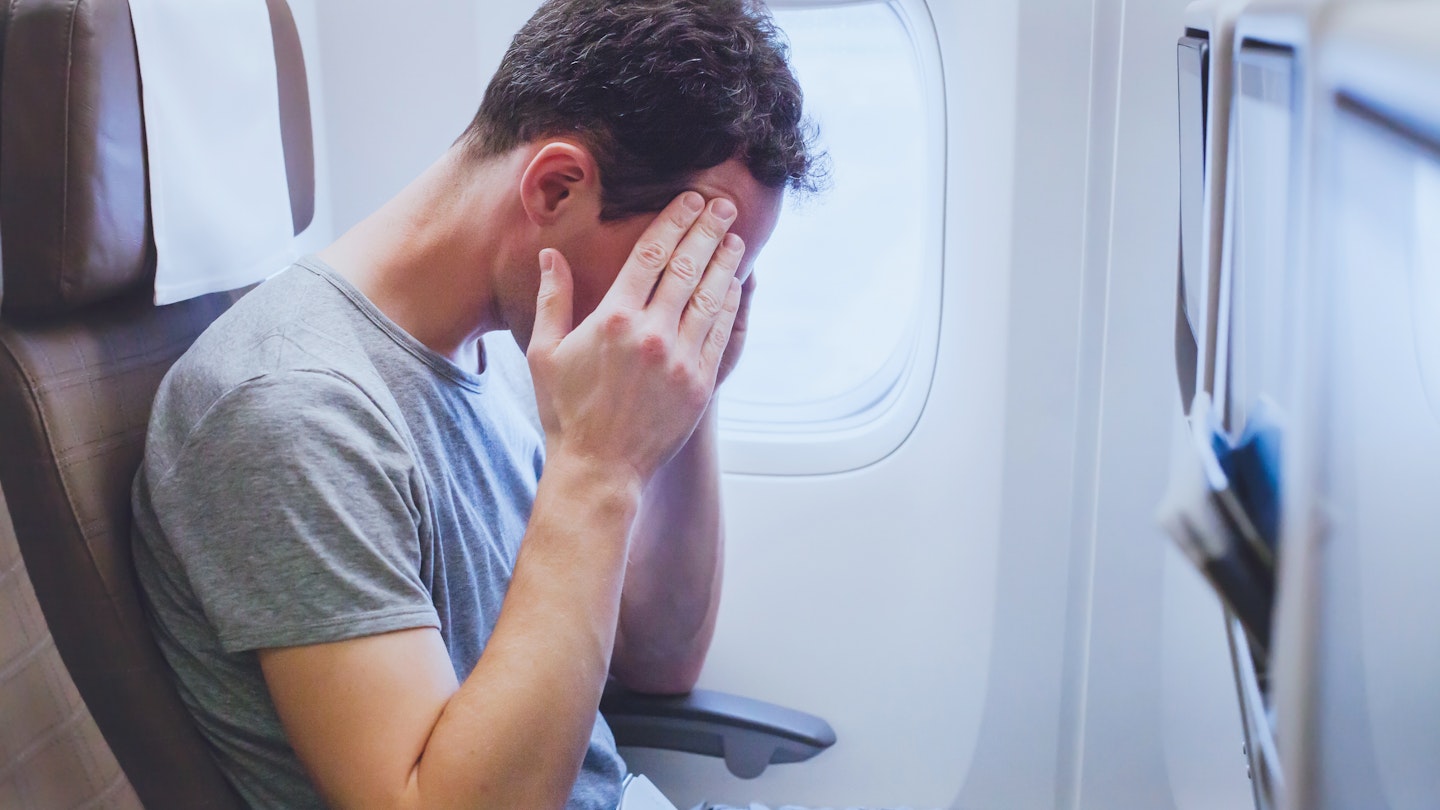
Jet lag can be a major impediment when travelling long distances – but is it worse in different parts of the world, or moving to and from particular time zones?
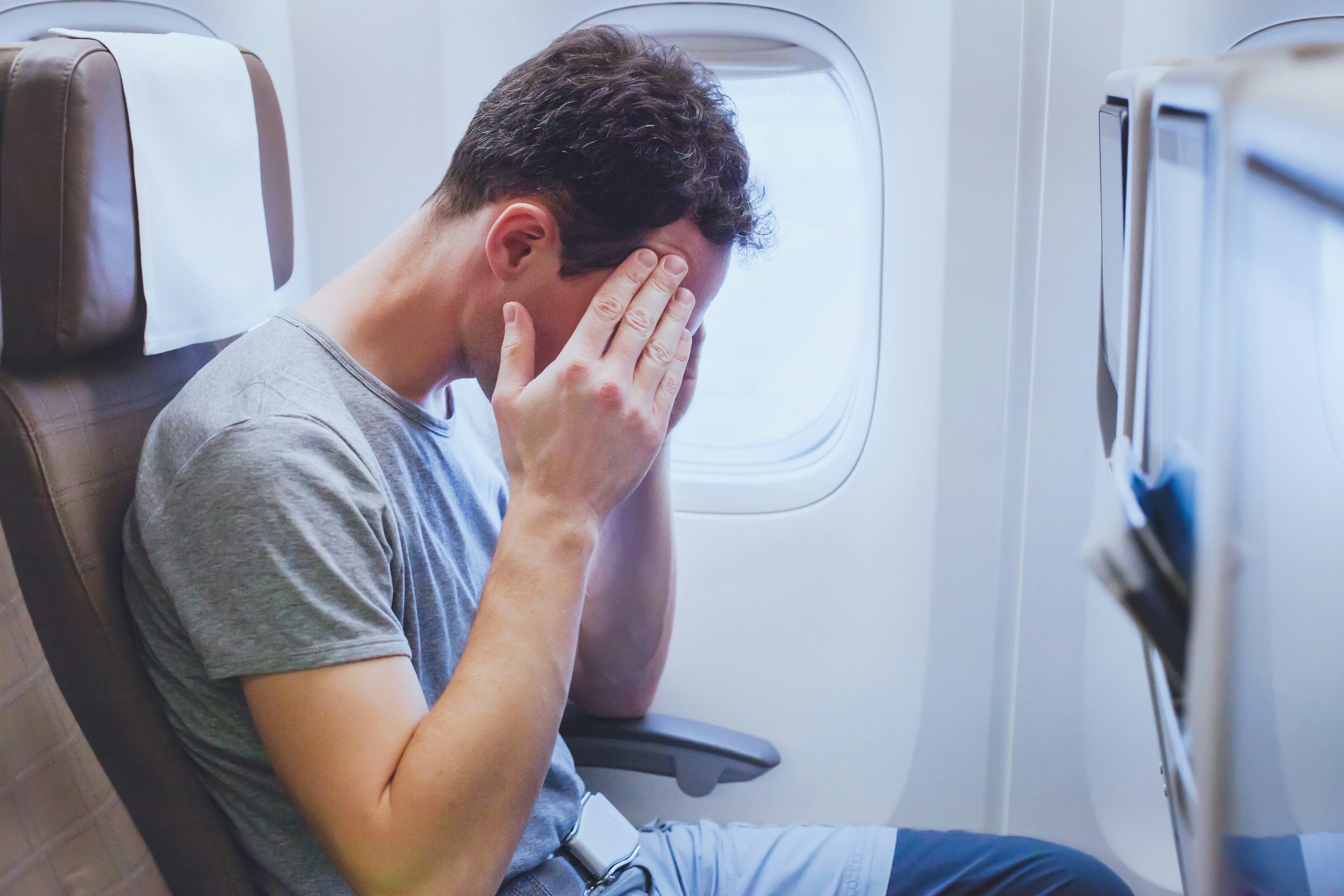
Jet lag is the bane of longhaul travel: waking up in the middle of the night, needing to be asleep when it’s time to go do things (or go to work), and just feeling altogether exhausted, whether you’re at your destination or back at home.
So, it’s no surprise that one of the questions I’m asked as an aviation journalist and someone who travels regularly is ‘which kind of jet lag is worse: flying east or west?’
The answer can be pretty complicated and depends on several different — and often conflicting — factors, but understanding them and how they work together can help you minimise the effects of the dreaded jet lag.
Read more: What are the scientifically proven ways to combat jet lag?
Overall, based on my own experience and talking to a lot of other frequent flyers, it seems like about three quarters of people find eastbound jet lag, when you can’t fall asleep at the normal time and find waking up really hard, worse than westbound jet lag, when you’re falling asleep in the early evening but waking up correspondingly early in the mornings.
However, there’s a minority of folks — that tend, it seems, towards being early birds rather than the night owls among my acquaintance — who find westbound jet lag worse than eastbound. Why? Well, it really depends on a range of factors. Let’s take a look.
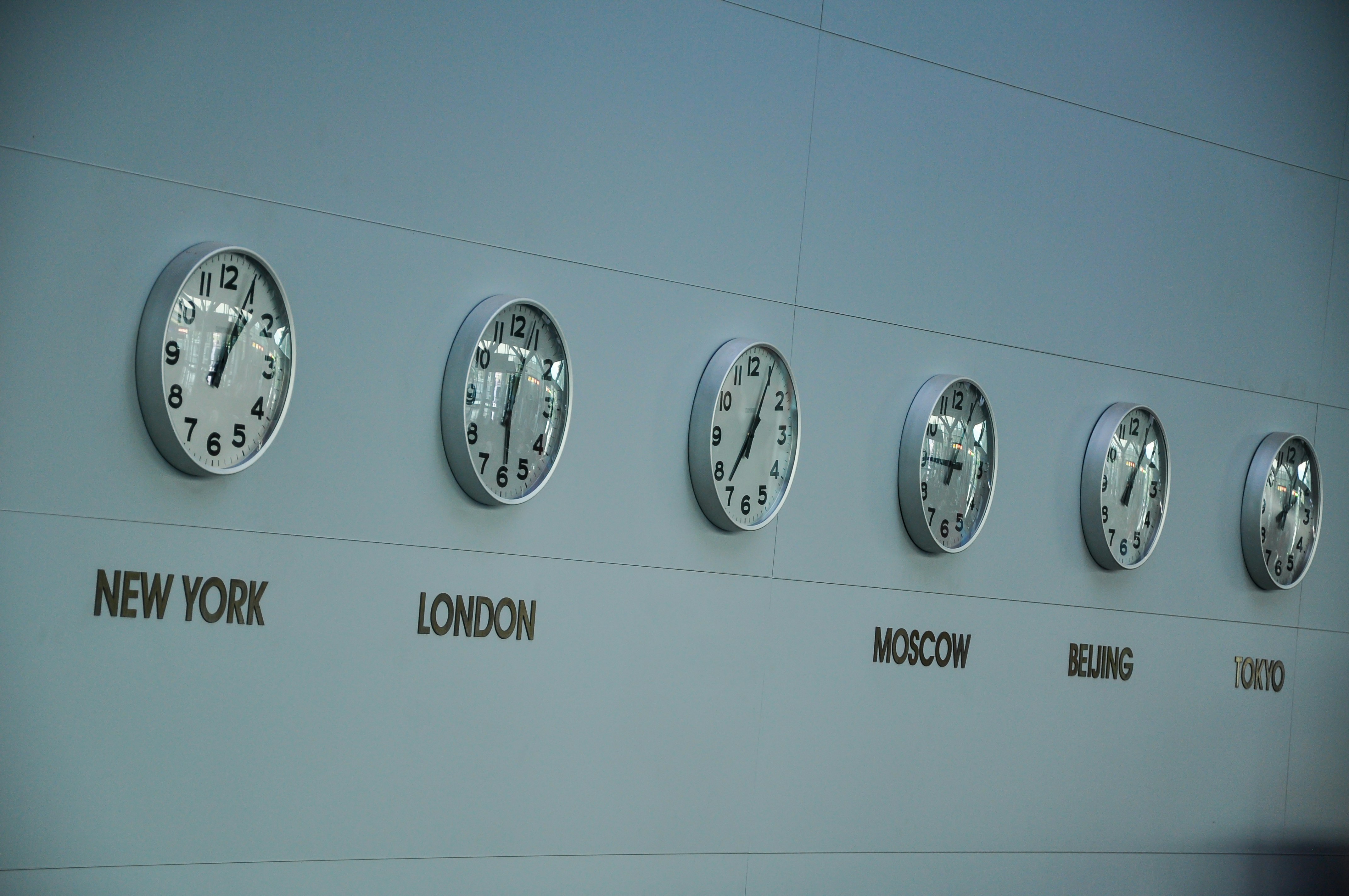

The number of time zones and length of the flight are crucial
The first factor might be obvious: the number of time zones you’ll cross. I always say that the worst is 5-7 time zones eastbound. Any less and my body clock usually adjusts because it thinks I’ve had a late night or early morning. Any more than that and everything’s so upended that my body clock does a full reboot.
The first is how many hours you’ll spend in the air (and how many hours there are on the longest flight if you’re connecting). As a rule, I find anything less than five hours is just fine, unless it’s a red eye: the kind of flight that leaves very late at night and arrives very early in the morning, giving you just a few hours of sleep.
Read more: Fight jet lag with this incredible app developed alongside NASA scientists
Between five and nine hours is where it gets a bit gross, because it’s hard to squeeze in enough sleep at a time when your body is ready for it. Anything between about nine and 14 hours is definitely long enough for a proper sleep as well as the relevant meals, while more than fourteen is up into ultra-longhaul territory where I end up so exhausted that my body ends up in full reset mode.
There’s also how much north-south versus east-west your route is going. For example, I often find flights going from, say, Hong Kong to New Zealand is less jet lag-inducing than a similar length of flight from Europe to Japan because more of the flight time is taken up by going north-south and thus you’re crossing fewer time zones.

Connections, the north-south factor and the overnight factors are also key
Jet lag can also be affected by where and when you plan any connections in your journey.
As a rule, I find that I’m less jet lagged (and all around less exhausted) when I make a connection early in the trip rather than later, to give myself a short flight and then a longer one. I reckon it’s because if I’m tired out before I get on my last flight then I’ll conk out and get deeper — and hopefully better — sleep.
Fortunately, while you can’t control what time zone a country is in, you can often control where and when your connection is, especially with the growth of the large airline alliances, and choose different options in each direction.
Jet lag also depends on whether you’re flying overnight. There are a couple of schools of thought here, and if you’re on holiday you might not want to lose a day to travel and prefer to travel overnight, but myself and a lot of my friends in aviation prefer to take those rare morning flights from the US east coast to Europe, for example, if we don’t have to connect the same day. It’s a short day, but that’s less jet lag-inducing than a short night, I find.
Read more: Ask Lonely Planet: 'How can I beat jet lag when I travel frequently for work?'
If you do have to take an overnight flight, make sure you check what time it departs. There are a range of flights from New York to London departing between around 6pm and 11pm, which arrive at between 6am and 11am the next morning, taking about six hours and adding five hours of time difference.
I find that if I’m on a 6pm departure I never sleep: on the ground I tend to hit the hay around 11pm if I’m being good, which is about the time in the flight that the crew are waking everyone up for a delicious breakfast of orange juice and a croissant.
If I’m on the 11pm departure, then it’s straight to Bedfordshire after takeoff and it feels like I’m just having a very early morning the next day. And, top tip: bring a sandwich and eat it in the terminal, or buy something there, so you can go directly to sleep without waiting for your airplane food on departure.
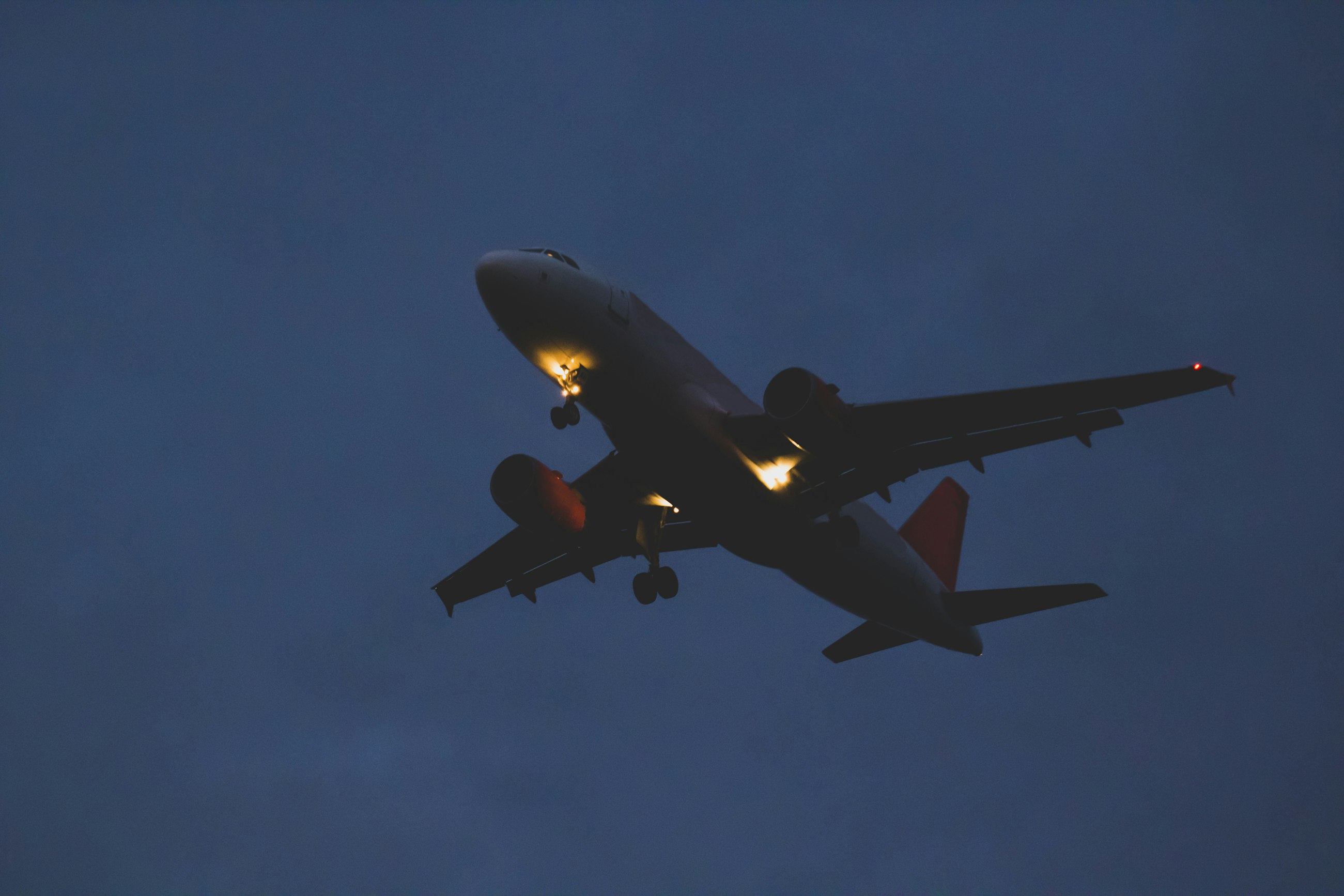
So which are the worst flights for jet lag?
There are a few popular contenders for the world’s worst jet lag routes, and they’re pretty much all red eyes.
One contender is the high-volume set of routes from the close end of the US east coast to the western end of Europe, which really comprises anything in an arc like Washington to London, New York to Paris , Boston to Frankfurt , or even Chicago to Dublin . (Aer Lingus is great in terms of efficiency and often price, but my goodness those short overnights to Dublin are especially brutal on the jet lag, particularly if winter tailwinds speed you on your way.)
Read more: How I survived 30 hours of travel (without losing my mind)
Another contender are overnight flights within the US , whether that’s some of the growing number of very late departures travelling across half the country or the diagonally-drawn flights known as 'diagcon', like 'transcon' from 'transcontinental', but from (say) the Pacific Northwest to Florida .
The overnight routes from Perth to Australia ’s east coast, especially Sydney and Brisbane at just about four hours, are also pretty brutal. That’s not enough time for sleep in anyone’s book.
Explore related stories

Destination Practicalities
Apr 17, 2024 • 5 min read
Whether you're embarking on the road trip of a lifetime or navigating the glorious Pacific Northwest without a car, getting around Washington is a breeze.

Apr 13, 2024 • 8 min read
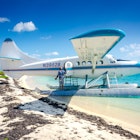
Apr 7, 2024 • 6 min read

Apr 3, 2024 • 6 min read

Mar 29, 2024 • 10 min read

Mar 25, 2024 • 9 min read

Oct 24, 2023 • 9 min read

Oct 22, 2023 • 5 min read

Sep 30, 2023 • 4 min read

Sep 20, 2023 • 6 min read
- Work & Careers
- Life & Arts
Become an FT subscriber
Try unlimited access Only $1 for 4 weeks
Then $75 per month. Complete digital access to quality FT journalism on any device. Cancel anytime during your trial.
- Global news & analysis
- Expert opinion
- Special features
- FirstFT newsletter
- Videos & Podcasts
- Android & iOS app
- FT Edit app
- 10 gift articles per month
Explore more offers.
Standard digital.
- FT Digital Edition
Premium Digital
Print + premium digital, weekend print + standard digital, weekend print + premium digital.
Today's FT newspaper for easy reading on any device. This does not include ft.com or FT App access.
- 10 additional gift articles per month
- Global news & analysis
- Exclusive FT analysis
- Videos & Podcasts
- FT App on Android & iOS
- Everything in Standard Digital
- Premium newsletters
- Weekday Print Edition
- FT Weekend Print delivery
- Everything in Premium Digital
Essential digital access to quality FT journalism on any device. Pay a year upfront and save 20%.
- Everything in Print
Complete digital access to quality FT journalism with expert analysis from industry leaders. Pay a year upfront and save 20%.
Terms & Conditions apply
Explore our full range of subscriptions.
Why the ft.
See why over a million readers pay to read the Financial Times.
International Edition
Travel, culture, and stories from Japan.
How to survive your flight to japan.
Because long haul flights just aren't for everyone.

As an Amazon Associate, I get commissions for purchases made through links in this post. At no extra cost to you! ^_^
Decided to finally take the plunge and book the cheapest flight to Japan ? Let me show you how to prepare for it and survive your long-haul flight!
So, you’re super excited to walk off that airplane and drink a cold bottle of Ramune Soda! (Literally me every time…)
Sometimes though, long-haul flights can be at extremely strange hours of the day, and if you’re not used to extended periods of travel they can really take their toll.
Traveling to Japan is, for a lot of people, a once-in-a-lifetime experience so you obviously want to enjoy as much of it as possible.
Oh, and this is written assuming you’ll be traveling in economy class. Not that the suggestions won’t work for you if you aren’t (because they will) it’s just business or first class is bound the make the experience more tolerable at least!
I know lots of people really aren’t a fan of traveling on planes and it can sour the entire experience for them.
However, as far as I’m concerned (though I might be in the minority) getting on the flight is part of the holiday. In fact, as soon as my bags are thrown on the conveyor belt I’m in holiday mode. 😀
I’m writing this to help people who might struggle with long-haul flights.
So! You’ve probably got lots of questions about what to expect and what to bring, so I’ll do my best to explain it in as much detail as I can.
Table of Contents
How long is the flight from the United States to Japan?
Depending on what part of America you live in, your US-Japan flight time will be anywhere from 13 hours if you’re living on the East Coast, and 11 hours if you’re on the West Coast.
This is of course assuming you’ve booked a direct flight…
And if you can afford it, I highly recommend paying the extra! It’s a lot nicer not to have to worry about getting off the plane and then getting onto another one.
How long is the flight from the United Kingdom to Japan?
If you’re living in the UK, it should take just under 12 hours on a direct flight to Haneda or Narita Airport.
If you’ve booked connecting flights, you could quite easily be adding another 6-8 hours on top. (unless you’ve got a layover which would add a lot more time)
Do you lose a day flying to Japan?
That will more often than not depend on where you’re flying in from.
If you’re flying from the US to Japan, you’re gonna lose a day.
For example; if your flight leaves on a Monday morning, you’ll end up landing in Tokyo at some time on Tuesday Afternoon/Evening.
This does depend on where you live in America so make sure to check this time converter and plan your trip accordingly.
If you’re flying from the UK to Japan, you’re also going to lose part of the day.
It will depend on how long your flights are and what time they’re booked for, but as Japan is 8 hours ahead of England you can expect to lose a good chunk of the day based on the time difference alone.
1. Prevent Jet lag
It’s just as important to prepare and prevent Jet lag as it is to survive your flight to Japan when you’re on board the plane.
No one wants to feel like crap during the beginning of their holiday, especially not from Jet lag!
This is especially true if you have a short holiday, but is important as long as you want to enjoy your first few days.
Let’s discuss two ways in which Jet lag can be prevented and reduced:
Get yourself on Japanese time
The first and most obvious way to do this is by getting yourself on Japanese time as soon as possible.
Once again I want you to use this time converter to see what time it is in Tokyo and ideally put yourself on that time the day before your flight.
If you’ve got a busy schedule then this won’t be possible. But you can still reduce the effects of jet lag by adhering to a schedule on your flight.
Normally you won’t have to think too much about this as the lights will be turned off when they think you should sleep and on when you should be awake.
So no more Japanese dramas!…
…ok maybe just one more? 😉
Another way to fix yourself in Japan’s time zone is through grounding.
When you touch down in Japan, find a patch of grass and walk on it barefoot. (Don’t worry, you can visit this tower to have a view over Tokyo from the clouds again!)
Grounding works by ‘Soaking up the earth’s negative charge’ which in turn should leave you feeling refreshed.
It’s a process that works best if you’re on wet ground like the beach, but it should work even if you aren’t.
Yes, I know it sounds a little bit ‘Out there’ but it does have scientific evidence too.
Some studies have shown that grounding can improve the quality of sleep, help reduce pain and inflammation, and even reduce the primary indicators of osteoporosis.
Whether you think it works or doesn’t, taking your shoes off for the possibility of less jetlag shouldn’t bother you.
Especially in Japan!
2. Wear comfortable clothing
Make sure to wear comfortable clothing!
The flight to Japan isn’t a short one so you’ll want to make sure you give your body room to breathe and relax.
In fact, you could wear a Yukata or casual fit kimono as they tend to be loose and airy. Plus it’s a great way to immerse yourself before you arrive!
In any case, wear something cozy and loose-fitting.
Your body will thank you for it 13 hours later!
3. Get your Japanese skincare routine on point
DO NOT! I repeat DO NOT get on the plane without moisturizer!
Just have a look at this article by Rebecca Norris. The results speak for themselves!
Here are some things you’ll need to watch out for when you fly:
You’ve likely felt it before if you’ve been on a plane. That cold dry air gets circulated around and probably wasn’t designed to be gentle on your face.
Don’t worry about it!
Just make sure to get some good-quality moisturizer that’s small enough to take on the plane.
I’d also recommend applying it before you board so it has a chance to sink in, and then re-apply when needed. (not that I’m a skincare expert, just from personal experience)
Once you’re above the clouds, you’ll be at the sun’s mercy.
UV rays will be loving it, but your face will be crying. So grab some suncream and put it on over your moisturizer.
It might seem excessive but I promise you’ll feel all the better for it when you land.
Holidays are supposed to be a stress-free time where you can reconnect with your family and passions outside of work.
But let’s be honest, even with the best will in the world they rarely are.
And that’s especially true when you’re trudging through customs at the airport.
From the stress of getting through the airport, to the many windows you’ll fall asleep on, your face won’t be having fun.
If you’re concerned with breakouts, bring some cleanser, and that way you can quickly clean your face when you need to.
I’ve written an article about Japanese skincare websites , so you’ve got no excuse for having skin that doesn’t love you!
4. Bring your own headphones
If you’ve been on any long-haul flight before you’ll know, more often than not, they provide you with headphones.
Totally great if you’ve forgotten your own, but utter rubbish in every other situation.
They don’t feel great and certainly don’t sound great.
What’s more, a great pair of headphones can maximize your enjoyment of in-flight entertainment and block out any unwanted noises to keep you calm during your journey.
I’d suggest using over-the-ear headphones for their comfort and noise-canceling ability, but of course, this is a personal choice.
5. Download some (loads of) anime
For me, anime is really good at setting an atmosphere and rolling with it as far as possible.
It’s so easy to get lost in the beautiful artwork of studio Ghibli that I sometimes feel like I’m daydreaming. So if you’re looking for a way to take your mind off the fact you’ve still got 7 hours left until you get to Tokyo, this might be a good idea for you.
Sometimes it’s just nice to get caught up in the moment especially if you’re going on holiday there!
My anime Recommendation: Your Name / Kimi no Na wa
6. Download Japanese-themed documentaries
If Anime isn’t your thing, that’s no reason you can start watching Japanese TV before you get there. It might be Japanese Dramas, films about Japan (The last Samurai is my recommendation!), or even a Japanese documentary.
Here are a few of my fave documentaries:
- Joanna Lumley’s Japan – Best for Culture Lovers
- Our guy in Japan – Best for Adrenaline Junkies
- Monty Don’s Japanese Gardens – Best for Nature Lovers
- James May: Our man in Japan – Best for Nerds
7. Pack some Oishii (delicious) Japanese snacks for the flight
If you’ve yet to experience Japanese snacks , you should bring a couple on your flight to help the time pass faster. (And tastier!)
Unsure what to bring?
I’ve written an extensive post on 20 of the best snacks you need to try . ^_^
I’d recommend grabbing yourself a packet of Pocky sticks (I’m partial to the matcha flavor, but whatever floats your boat!)
Ah, and I’d definitely suggest getting a tin of Hotaru no Haka Sweets.
Especially if you’re an Anime fan!
Anyway, take a look at the article linked above and order a couple before your departure date!
8. Order the Japanese option on the menu
If you’re flying with an airline that offers more than one meal choice, please chose the Japanese option. Please!
It’ll normally be something plain or simple like Soba or maybe some sushi. If you aren’t normally adventurous with food then this is your perfect entry into the world of Japanese cuisine.
If you end up liking it, then you’ve got a dish you can eat in Japan and a place to springboard off into other food avenues!
If they don’t cater to your diet or for some reason you literally can’t bring yourself to eat the Japanese food option (Booooo!) then it’s just an excuse to bring a few more snacks from the list!
9. Listen to Japanese Lofi
There are TONS of Japanese artists you could listen to, but I think Lo-Fi is the best music to survive your flight to Japan. Or at least music without words.
Here’s why:
- It forces you to imagine – You’ll be thinking about how many bowls of ramen you can guzzle down until you feel sick!
- It’s built to create an atmosphere – It’s great for Japanese hype without giving too much away
- There are countless sub-genres – Whilst some lo-fi might be fast-paced and heavy, others will have a softer beat to help you focus or chill out during your flight.
Want to learn more?
Here is an interview I did with a Japanese-inspired lo-fi producer.
Here are the 5 best lo-fi study channels on YouTube. (Great for learning Japanese!)
10. Bring a phrasebook to read
If you’re hoping to learn the basics of Japanese without any time commitments, why not get a phrasebook?
You could try the Lonely Planet Phrasebook and Dictionary which should have you covered for all eventualities you’ll likely encounter during your stay.
I haven’t tried it myself, but it currently has hundreds of reviews at four and a half stars so it’s got to be doing something right!
And it’s just under 5 ounces, so you won’t even notice it in your bag!
11. Bring a Japanese coloring book
Even though you should try your best to learn just a few phrases before your trip, I understand it’s not something everyone’s going to do.
Coloring books are a great way to focus your attention and help you live in the present moment.
Yes, they’re pretty heavy when you have limited room. But if it’s something you’re into, you’ll likely be busy for hours!
This is the book I’d recommend. Again, I’m yet to try it myself but it has a load of really positive reviews and pictures so could be worth giving a go!
12. Read some Manga
If you’ve been learning Japanese for some time, then why not bring something even more immersive?
Make sure it’s not too mentally heavy though, that means your Genki textbook is out of the question!
I’d recommend Yotsuba!
A cute Japanese manga book about the everyday adventures of a little girl called Yotsuba.
You’ll have to know a little bit of Japanese to get through it, but it’s fairly accessible even to beginners.
13. Check your bucket-list
By now you’re probably getting really excited about all the cool things you’ve got planned on your trip!
So why not go over your bucket list and see if there’s anything extra you fancy doing? ^_^
I’ve written an extensive bucket list with over 100 different options for Osaka and Kyoto including accommodation, places to relax, places to eat, places to shop… (The list goes on, a lot!)
You can grab it here!
FAQs about surviving your flight to Japan
Should i sleep on a flight to japan.
This question completely depends on when your flight to Japan is. If it’s nighttime in Japan when you’re on the plane, then absolutely!
If you’re just a bit tired but it’s actually daytime in Japan, then limit the amount of sleep you have. A quick snooze won’t be harmful, but the worst-case scenario is that you arrive in Japan completely refreshed when you should be sleeping, and then your schedule goes all out of whack.
How bad is Jet lag to Japan?
Again, this depends on when your flight is and how much you’re personally affected by the symptoms of jet lag. If you’re prone to feeling those effects, Japan jet lag can be absolutely brutal.
If you’re only visiting Japan for a small amount of time, this can be detrimental to your travel itinerary so it’s vital you prepare accordingly and do your best to negate its effects.
Is Jet lag worse going to Japan or coming back?
As the saying goes ‘West is best, East is a beast’. So if you’re traveling eastwards from your home country to Japan, jet lag will be worse on the way here.
If you’re traveling westward on the way here, and east on the way back, you’ve likely got the better end of the deal if you’re looking to stop jet japan in Japan!
Right, so you might have just planned how to prepare for your flight to Japan, but if you give me a couple of minutes, I want to explain to you why traveling to Japan without a plan is an absolute game changer and something you should 100% consider doing. Don’t knock it until you try it!
You might be interested in

The Ultimate Guide to Buying Pokémon Cards in Tokyo.
I have extremely fond memories of growing up swapping trading cards with people in the playground, collecting stickers for my sticker book, and trying…

The Complete Guide to Radio Kaikan
I start lots of these introductions by telling you how I love geeky things, and this is no different. Akihabara is an otaku’s paradise…

The Complete Guide to Buying Secondhand Games in Akihabara
In case you haven’t realized I’m fairly geeky about a lot of things, Japanese video games included. I don’t think I’m lying when I…

Easily Avoid Jet Lag When Travelling To Japan.
Japan is a bucket list destination for many and takes a load of planning which makes it so important to make the most of…

Why are Flights to Japan so Expensive? (and 9 Ways to Get Them Cheaper!)
Other than Shinkansen and Japan’s last sleeper train, flying is probably my transport method of choice. Unfortunately, there was a chunk of time when…

HARD-OFF: The Magical World of Japanese Second-Hand Stores.
There are a few things you should absolutely plan to do on your first trip to Japan: Cross Shibuya Scramble, Visit the country’s ancient…

Is Hiroshima Worth Visiting?
The route that first-time visitors to Japan usually take is from Tokyo – Osaka (and surrounding areas) – Tokyo. Of course, there are trips…
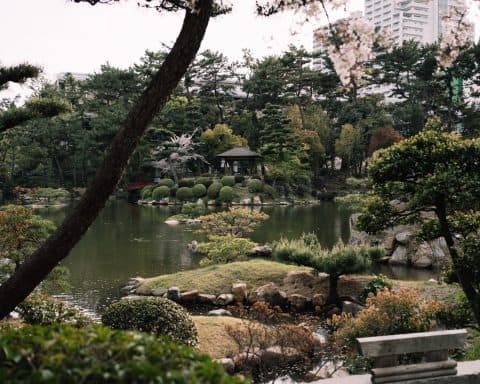
18 Reasons Why Japan is So Photogenic
I often consider the questions ‘Why is Japan so photogenic?’, and ‘Why is Japan so beautiful?’. I’ve been in Japan for a year now,…
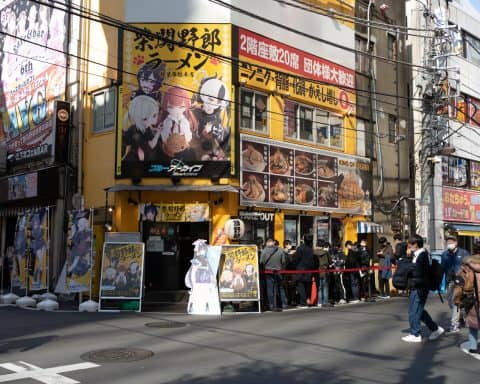
20 Things to Do in Tokyo in the Morning
Have you arrived in Tokyo early in the morning and don’t know what to do? Or perhaps you’ve got some time to fill before…
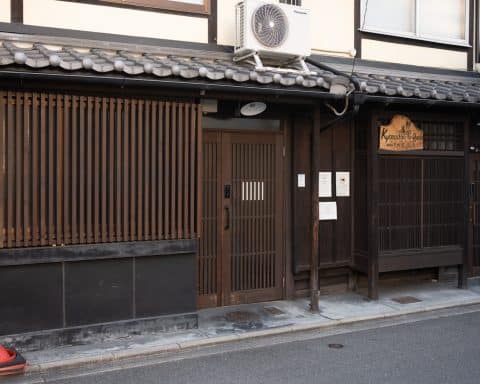
Should you Book an Airbnb or Hotel in Japan?
I don’t know about you, but whenever I travel or go on vacation, I always consider two possible forms of accommodation: Airbnb and Hotels.…

Jonny Gleason
Jonny is the founder of A Day of Zen and has an unhealthy obsession with Japan. In 2022 he moved to Japan on a mission to give his audience the best possible information. He's helped over 300,000 plan their trip so far, and is eager to make that number much bigger!
Read the story...
Leave a Reply Cancel reply
Your email address will not be published.
Save my name, email, and website in this browser for the next time I comment.
Notify me of follow-up comments by email.
Notify me of new posts by email.
Copy short link
What to do in Tokyo when you suffer from jet lag?
- Published on : 13/08/2020
- Add to favorites
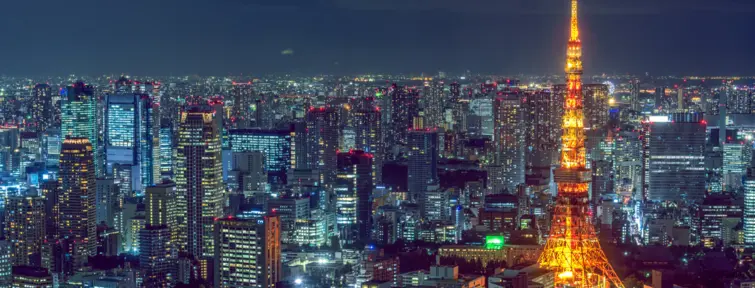
The places to know when you are jet lagged in Tokyo
With an eight-hour time difference between the two countries in winter (and seven hours in summer), a flight from France to Japan can be intense. To avoid digestion problems, tiredness or too much energy, the best way is to manage to follow the Japanese sleep cycle. In order to start your stay more serenely, Japan Experience presents you today several places, which will allow you to adapt quickly and smoothly.
To recover a "normal" sleep cycle, hot water and reading can be a very good solution!
"Sento, manga, and then sleep", the formula is actually quite simple to operate in the capital where many establishments are open until late at night.
Sento, Tokyo's public baths
Japanese public baths , in addition to providing the benefits of hot water, are open after midnight . Some of them even offer baths with essential oils , as well as cold baths for the bravest!
Ideal for travelers arriving late or having trouble sleeping, they allow the body and mind to relax, thus promoting sleep.
There is an entrance fee (less than 500 yen per person), and you have to bring your own shower products and towels.
- Read also: Public baths in Tokyo
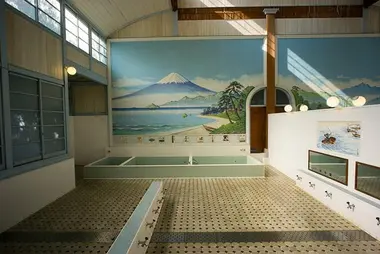
Sento is a Japanese public bath
We recommend: Sakae-yu (Shinjuku-ku)
Near Ochiai-Minami-Nagasaki station, Sakae-yu is a very modern sento that includes a semi-outdoor bath, a sauna, and even a bath whose water would bring luck!
- Address : 2Chome-6-2 Nishiochiai, Shinjuku City, Tokyo 161-0031
- Hours : 3 pm to midnight, closed on Monday and Friday
- Admission : adult 470 yen (3.73 €), under 12 years old 180 yen (1.42 €), under 6 years old 80 yen (0.63 €)
- Directions : 9 minutes walk from Ochiai-Minami Nagasaki Station (Oedo line)
Night entertainment in Tokyo
Our selection:
- Cafe Bohemia
With its cocktails and salads, Cafe Bohemia is an address to remember for late nights, as the cafe is open until 4 am on weekdays and until 5 am on Fridays and Saturdays (11 pm on Sundays).
Address : 〒150-0042 Tokyo, Shibuya City, Udagawacho, 36-22 PartⅡ, 1F ノア渋谷 Hours : Monday to Thursday from 11:30 to 04:00 and until 05:00 on Friday and Saturday. On Sundays, closing time is 11 pm.
- Big Echo Karaoke
Feel like singing at the top of your lungs with a drink in your hand to wear yourself out? That's what Big Echo Karaoke is for. Open until 5 a.m. Tuesday through Saturday, it's the perfect place to combine fun, relaxation...and exhaustion!
Address : 1 Chome-1-13 Asakusa, Taito City, Tokyo 111-0032, Japan Hours : Tuesday to Saturday, 12:00 to 05:00, and Sunday to Monday until 23:00.

©shankar s.,flickr
Manga Kissa / manga cafes
Ideal place to discover new stories and improve your Japanese , the manga kissa (or manga café) is an experience to try at least once in Japan .
You can read manga , but also eat and drink ! These establishments are open 24/7 , so it is also possible to spend the night there if you get tired.
Our selection
- Takarajima 24
With facilities all over the city, Takarajima 24 is a good and cheap option. In addition to books, wifi, and DVDs, it is possible to have a free shower and to benefit from a reduced price with the 20 hours pack at 3,000 yens only (23.80 euros).
Opening hours : every day, 24 hours a day
Read also: Sleeping in a manga kissa
- Read also : Sleeping in a kissa manga
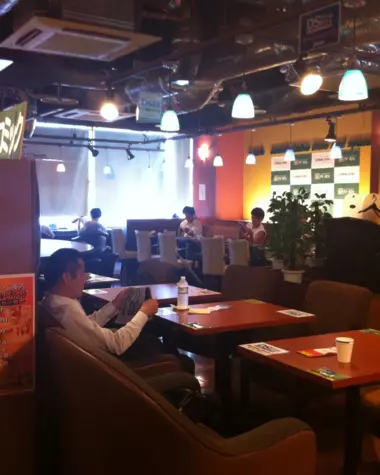
©Steve Nagata, Wikimedia Commons
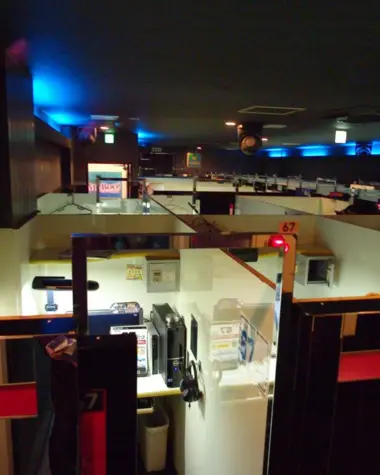
©Banalities, flickr
The night in music with the karaoke
A must for Japanese nights , karaoke is famous for its catchy music and its late hours . Open until four in the morning on average, these rooms are a good way to get tired while singing. You can also eat and drink as much as you want depending on the formula you choose and the spaces are often equipped with benches to rest between two songs!
- Karaoke Kan
With its low prices and its free-access bar, Karaoke Kan is one of the most popular karaoke chains in the country. Abroad, it owes its success to Sofia Coppola, who featured the Shibuya sign in Lost in Translation.
Address (not exhaustive): 〒150-0042 Tokyo, Shibuya City, Udagawacho, 30-8 K&Fビル Hours : daily, 11 am to 5 am
- Ginza Riviera
In addition to karaoke, there is also a pool table, as well as darts!"Côte d'Azur Ginza offers a good experience for all tastes.
Address : 〒104-0061Tokyo, Chuo City, Ginza, 7 Chome-2-22, DOWA BUILDING, B1F Hours : daily, from 11 am to 5 am
Also read : Top 5 karaoke places in Tokyo
- Read also: Top 5 karaoke places in Tokyo
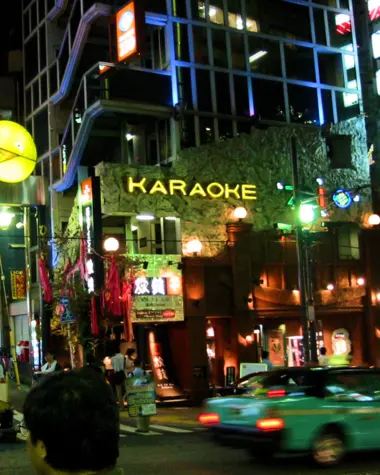
©DocChewbacca, flickr
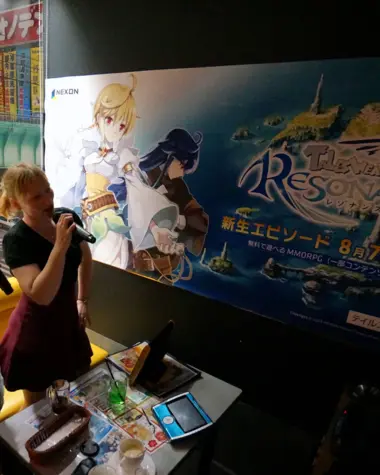
©Teo Romera, flickr
Our houses in Tokyo

Ikebukuro Nigo Rent a house in Tokyo
Kami-Ikebukuro, Tokyo
- 2 travelers
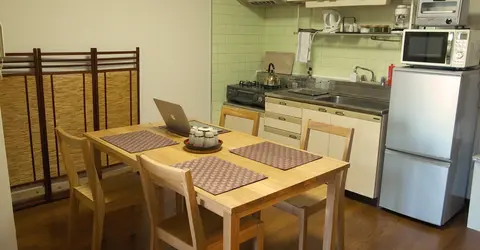
Yuyake Rent a house in Tokyo
Ikebukuro, Tokyo
- 4 travelers

Nishi-Ikebukuro 3 Rent a house in Tokyo
- 5 travelers
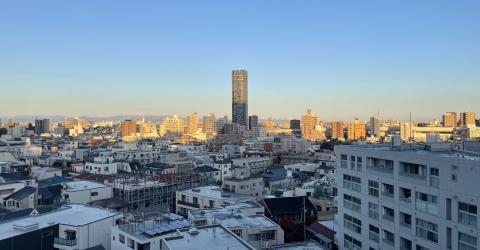
Nishibi Rent a house in Tokyo
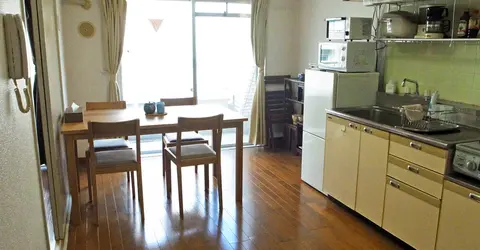
Asayake Rent a house in Tokyo
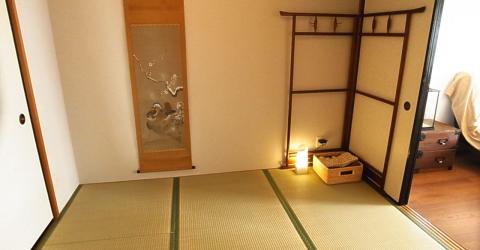
- 6 travelers
Our activities in Tokyo

Tokyo Discovery, two days Activities in Tokyo
- Duration : 16 hour
- Location : Chiyoda City

Tokyo Discovery, Half Day Activities in Tokyo
- Duration : 4 hour
Tokyo Architectour Activities in Tokyo
- Duration : 8 hour
- Location : Minato City

Kabuki, the Japanese popular theatre Activities in Tokyo
- Duration : 3 hour
- Location : Tokyo

Night cruise through the industrial zone Activities in Japan
- Duration : 1 hour

Tokyo Disneyland Activities in Tokyo
Our tours in Tokyo

Discover Japan Group Tours in Japan
- Duration : 13 days
- Locations : Tokyo, Hakone Mt Fuji, Kyoto, Nara, Hiroshima, Miyajima
- Included : Visits & meals, English-speaking tour leader, Hotel temple, 3*/4* Hotels & Ryokan

The Tokaido Road Group Tours in Japan
- Duration : 14 days
- Locations : Tokyo, Hakone Mt Fuji, Kyoto, Nara, Koyasan, Osaka
- Included : English-speaking tour leader, 3*/4* Hotels & Ryokan, Hotel temple, Visits & meals
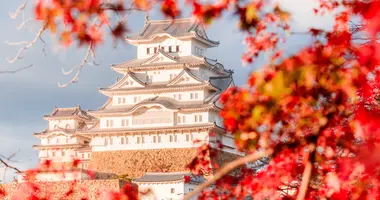
Autumn Leaves Photography Group Tours in Japan
- Duration : 12 days
- Locations : Tokyo, Mt Fuji (Kawaguchiko), Osaka, Himeji, Kyoto, Nara
- Included : English-speaking tour leader, 3* Hotels & Ryokan, Visits & meals

Cherry Blossoms Photography Group Tours in Japan
- Locations : Tokyo, Kyoto, Osaka, Nara, Kawaguchiko, Tokyo
- Included : English-speaking tour leader, 3*/4* Hotels & Ryokan, Visits & meals

Urban and Rural Japan Group Tours in Japan
- Duration : 21 days
- Locations : Tokyo, Hakone Mt Fuji, Kyoto, Nara, Koyasan, Osaka, Kobe, Takachiho, Kumamoto, Nagasaki, Hiroshima, Miyajima
Latest Articles

Top 5 bars with the best views of Tokyo
It is well known that the Japanese capital has a real effervescence that varies depending on the district.

Robot Restaurant
Flighting robots, futuristics choreography and other scenes of science fiction: the Robot Restaurant in Shinjuku features performances straight out of anime movies.
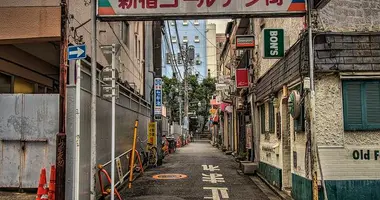
Shinjuku's Golden Gai District
Six narrow and crowded alleys, sometimes linked by even narrower passages, some two hundred tiny and outdated stalls, a bit decrepit: welcome to Golden Gai.
All the themes of the city

Markets in Japan

Onsen, Hot Springs and Public Baths

Family Travel

Temples and Shrines

Parks and Gardens

Outdoor Activities

Museums and Galleries

Restaurants and Cafes

Shopping and souvenirs

Japanese Pop Culture

Events and Festivals
Please select your country on the list below:
- Switzerland
- United Kingdom
- Other countries
- Patient Care & Health Information
- Diseases & Conditions
- Jet lag disorder
Jet lag, also called jet lag disorder, is a temporary sleep problem that can affect anyone who quickly travels across several time zones.
Your body has its own internal clock, called circadian rhythms. They signal to your body when to stay awake and when to sleep.
Jet lag occurs because your body's internal clock is synced to your original time zone. It hasn't changed to the time zone of where you've traveled. The more time zones crossed, the more likely you are to experience jet lag.
Jet lag can cause daytime fatigue, an unwell feeling, trouble staying alert and stomach problems. Although symptoms are temporary, they can affect your comfort while on vacation or during a business trip. But you can take steps to help prevent or lessen the effects of jet lag.
Products & Services
- A Book: Mayo Clinic Book of Home Remedies
- Nutritional Supplements at Mayo Clinic Store
Symptoms of jet lag can vary. You may experience only one symptom or you may have many. Jet lag symptoms may include:
- Sleep problems such as not being able to fall asleep or waking up early.
- Daytime fatigue.
- Not being able to focus or function at your usual level.
- Stomach problems such as constipation or diarrhea.
- A general feeling of not being well.
- Mood changes.
Symptoms are worse the farther you travel
Jet lag symptoms usually occur within a day or two after traveling across at least two time zones. Symptoms are likely to be worse or last longer the farther you travel. This is especially true if you fly east. It usually takes about a day to recover for each time zone crossed.
When to see a doctor
Jet lag is temporary. But if you travel often and experience jet lag, you may benefit from seeing a sleep specialist.
A disruption to your circadian rhythms
Jet lag can occur anytime you cross two or more time zones. Crossing multiple time zones puts your internal clock out of sync with the time in your new locale. Your internal clock, also called circadian rhythms, regulates your sleep-wake cycle.
For example, if you leave New York on a flight at 4 p.m. on Tuesday and arrive in Paris at 7 a.m. Wednesday, your internal clock still thinks it's 1 a.m. That means you're ready for bed just as Parisians are waking up.
It takes a few days for your body to adjust. In the meantime, your sleep-wake cycle and other body functions such as hunger and bowel habits remain out of step with the rest of Paris.
The effect of sunlight
A key influence on circadian rhythms is sunlight. Light affects the regulation of melatonin, a hormone that helps cells throughout the body work together.
Cells in the tissue at the back of the eye transmit light signals to an area of the brain called the hypothalamus. When the light is low at night, the hypothalamus signals to a small organ in the brain called the pineal gland to release melatonin. During daylight hours, the opposite occurs. The pineal gland releases very little melatonin.
Because light is so crucial to your internal clock, you may be able to ease your adjustment to a new time zone by exposing yourself to daylight. However, the timing of light needs to be done properly.
Airline cabin pressure and atmosphere
Some research shows that changes in cabin pressure and high altitudes associated with air travel may contribute to some symptoms of jet lag, regardless of travel across time zones.
In addition, humidity levels are low in planes. If you don't drink enough water during your flight, you can get slightly dehydrated. Dehydration also may contribute to some symptoms of jet lag.
Risk factors
Factors that increase the likelihood you'll experience jet lag include:
- Number of time zones crossed. The more time zones you cross, the more likely you are to feel jet lag.
- Flying east. You may find it harder to fly east, when you "lose" time, than to fly west, when you "gain" time.
- Being a frequent flyer. Pilots, flight attendants and business travelers are most likely to experience jet lag.
- Being an older adult. Older adults may need more time to recover from jet lag.
Complications
Auto accidents caused by drowsy driving may be more likely in people who are jet-lagged.
A few basic steps may help prevent jet lag or reduce its effects:
- Arrive early. If you have an important meeting or other event that requires you to be in top form, try to arrive a few days early to give your body a chance to adjust.
- Get plenty of rest before your trip. Starting out sleep deprived makes jet lag worse.
- Gradually adjust your schedule before you leave. If you're traveling east, try going to bed one hour earlier each night for a few days before your trip. If you're flying west, go to bed one hour later for several nights before you fly. If possible, eat meals closer to the time you'll be eating them during your trip.
Properly time bright light exposure. Light exposure is a prime influence on your body's circadian rhythms. After traveling west, expose yourself to light in the evening to help you adjust to a later than usual time zone. After traveling east, expose yourself to morning light to adapt to an earlier time zone.
The one exception is if you've traveled across more than eight time zones. Your body might mistake early-morning light for evening dusk. It also might mistake evening light for early-morning light.
So if you've traveled more than eight time zones to the east, wear sunglasses and avoid bright light in the morning. Then allow as much sunlight as possible in the late afternoon for the first few days in your new location.
If you've traveled west by more than eight time zones, avoid sunlight a few hours before dark for the first few days to adjust to the local time.
- Stay on your new schedule. Set your watch or phone to the new time before you leave. Once you reach your destination, try not to sleep until the local nighttime, no matter how tired you are. Try to time your meals with local mealtimes too.
- Stay hydrated. Drink plenty of water before, during and after your flight to counteract the effects of dry cabin air. Dehydration can make jet lag symptoms worse. Avoid alcohol and caffeine, as these can dehydrate you and affect your sleep.
- Try to sleep on the plane if it's nighttime at your destination. Earplugs, headphones and eye masks can help block noise and light. If it's daytime where you're going, resist the urge to sleep.
- Lee Y, et al. Circadian rhythms, disease and chronotherapy. Journal of Biological Rhythms. 2021; doi:10.1177/07487304211044301.
- Janse van Rensburg DC, et al. Managing travel fatigue and jet lag in athletes: A review and consensus statement. Sports Medicine. 2021; doi:10.1007/s40279-021-01502-0.
- Kryger M, et al., eds. Shift work, shift-work disorder, jet lag and jet lag disorder. In: Principles and Practice of Sleep Medicine. 7th ed. Elsevier; 2022. https://www.clinicalkey.com. Accessed Oct. 26, 2022.
- Loscalzo J, et al., eds. Sleep disorders. In: Harrison's Principles of Internal Medicine. 21st ed. McGraw Hill; 2022. https://accessmedicine.mhmedical.com. Accessed Oct. 26, 2022.
- Kellerman RD, et al. Sleep disorders. In: Conn's Current Therapy 2022. Elsevier; 2022. https://www.clinicalkey.com. Accessed Oct. 31, 2022.
- Jet lag. Centers for Disease Control and Prevention. https://wwwnc.cdc.gov/travel/page/jet-lag. Accessed Oct. 26, 2022.
- During EH, et al. Irregular sleep-wake, non-24h sleep-wake, jet lag and shift work disorders. In: Clinical Sleep Medicine: A Comprehensive Guide for Mental Health and Other Medical Professionals. American Psychiatric Association Publishing. https://ebooks.appi.org. Accessed Oct. 28, 2023.
- Steele TA, et al. Circadian rhythm sleep-wake disorders: A contemporary review of neurobiology, treatment and dysregulation in neurodegenerative disease. Neurotherapeutics. 2021; doi:10.1007/s13311-021-01031-8.
- Moroni I, et al. Pharmacokinetics of exogenous melatonin in relation to formulation, and effects on sleep: A systematic review. Sleep Medicine Reviews. 2021; doi:10.1016/j.smrv. 2021.101431 .
- Melatonin. Facts & Comparisons eAnswers. https://fco.factsandcomparisons.com. Accessed Nov. 1, 2022.
- Symptoms & causes
- Diagnosis & treatment
- Doctors & departments
Mayo Clinic does not endorse companies or products. Advertising revenue supports our not-for-profit mission.
- Opportunities
Mayo Clinic Press
Check out these best-sellers and special offers on books and newsletters from Mayo Clinic Press .
- Mayo Clinic on Incontinence - Mayo Clinic Press Mayo Clinic on Incontinence
- The Essential Diabetes Book - Mayo Clinic Press The Essential Diabetes Book
- Mayo Clinic on Hearing and Balance - Mayo Clinic Press Mayo Clinic on Hearing and Balance
- FREE Mayo Clinic Diet Assessment - Mayo Clinic Press FREE Mayo Clinic Diet Assessment
- Mayo Clinic Health Letter - FREE book - Mayo Clinic Press Mayo Clinic Health Letter - FREE book
Make twice the impact
Your gift can go twice as far to advance cancer research and care!

Jet Lag Returning From Japan

Table of Contents
Is Jet Lag Returning from Japan worse than when going there? It depends where you’re returning to…
Jet Lag is arguably the worst thing about traveling around Asia.
Once it hits you like a…plane…* see what I did there?* …you’re often left searching for ways to overcome jet lag once you’re home. Because it’s not pleasant.
Those of you who travel frequently will have most likely experienced more issues when flying east, than when flying west. Don’t worry, it’s not you being weird, this is actually a ‘thing’ – something we’ll explain to you in this article.
I haven’t really managed to ever avoid jet lag completely. I usually take my favorite natural sleep aid (check my Performance Lab Sleep Review for more info) to help ‘fix’ my circadian rhythm, which does tend to work.
But it has been confirmed by numerous sources that jet lag can be worse when flying out to, or returning from, different countries.
What is Jet Lag?
I figured that starting by answering this question will help you understand with what jet lag actually is. As well as the symptoms and causes.
In short, Jet Lag is classed as a temporary sleep disorder that can affect anyone who travels across more than one time zone in a relatively short space of time (eg. on a flight).
The symptoms of Jet Lag usually improve after a few days. And a week after your return, you should be back to your normal routine again.
Symptoms of Jet Lag:
- Daytime Fatigue
- Stomach issues
- Mental fatigue
- Dehydration
The last symptom on the list (dehydration) can be aggravated by long-haul flights; cabin pressure the dry air during flights can cause excessive dehydration if you don’t keep drinking water.

Jet Lag Returning from Japan to USA
Since I’m mainly based in the US when I’m not travelling Asia, I thought I’d answer this question first: is jet lag worse when returning from Japan to the USA?
- The quick answer is, yes .
You’re probably asking yourself why, so let me explain…
Fact: Jet Lag is worse when travelling Eastward than westward
The above statement probably sounds like something I just made up in order to write this article. But I can assure you that there is actually scientific backing to why this is the case.
A clinical study conducted by Zhixin Lu et al., 1 concluded that this is due to you having to travel forward in hours or days when flying east. This results in you ‘losing time’ and arriving ahead of what your natural circadian rhythm ( often referred to as your ‘body clock’ ) is normally at.
For example, Japan is typically around 13-16 hours ahead of US time depending on where you’re based in the US:
- Japan is 13 hours ahead of New York
- Japan is 16 hours ahead of California
Taking into account that the flight time is 14 hours from New York to Japan, there’s a lot of opportunity for your circadian rhythm to become confused and out of sync.
As a result, you might be forced to eat breakfast when you’d otherwise be asleep. Or ready to sleep in the middle of the day in Japan, when you’d be asleep in the US etc – you get my point here…good job there are Nap Salons in Tokyo , eh?
Jet Lag Returning from Japan to UK
Since jet lag tends to be worse when flying east, you shouldn’t have as much of an issue when returning from Japan to the United Kingdom (UK).
You would have suffered worse jet lag when originally travelling to Japan from the UK (since you would have traveled eastward).
So there is some good news; if you’re suffering from jet lag after returning to UK, then you should recover much quicker than you did when landing in Japan for the start of your holiday or travels.
Still, we know that jet lag is never fun. So we’ll be sure to give you some tips to help you recover as quickly as possible and get back to your normal routine.
Related Content:
- Jr Kyushu Hotel Blossom Shinjuku Review

How to Overcome Jet Lag Once Home
As mentioned at the start of this article, I haven’t been able to properly avoid jet lag completely before.
However, after consistently travelling around Asia (most significantly for this article, Japan) and back to the USA countless times, I have become pretty good at recovering from Jet Lag.
Here are my top tips for overcoming jet lag once you return home from Japan, whether its to the USA or UK:
1. Stay Hydrated and Avoid Alcohol
I know tons of people who love to drink beer or wine before and during their flight.
It’s almost become a ‘ritual’ to have a pre-flight beer now for many of you. But my biggest recommendation is to stay hydrated by drinking water and avoiding alcohol.
The reason for this is because it’s easy to become dehydrated during a flight; the air quality and cabin pressure aren’t optimal living conditions for your body, and drinking alcohol can aggravate the issue.
Call me a ‘party-pooper’ all you want. This stays as my top tip for giving yourself the best chance of recovering from jet lag as quickly as possible.
2. Try a Sleep Aid Containing Montmorency Tart Cherry
Everyone who knows me, knows that I keep a bottle of a natural sleep aid handy at all times during my travels around asia.
The best sleep supplements contain a natural source of melatonin called Montmorency Tart Cherry; this is much better than taking synthetic Melatonin directly, due to synthetic melatonin being known for causing drowsiness/grogginess the following morning .
So why is melatonin important to help overcome jet lag?
Jet lag is caused by a disruption to your circadian rhythym. We’ve already established that earlier in this article.
However, you might not have known that your circadian rhythym is controlled by melatonin; this hormone is naturally produced by your body at night (when it gets dark) and also controls your body temperature while you drift off to the land of sleep.
The issue when you’re jet lagged is that your body won’t be producing melatonin at the ‘right’ times, as you most likely adapted to a new time zone.
As a result, taking a sleep aid containing Montmorency Tart Cherry (the highest natural source of melatonin available) will increase your melatonin levels before you go to bed.
If you’re in doubt, then there are actually tons of clinical studies that have proven the effectiveness of Montmorency Tart Cherry on sleep time and efficiency 2 .
3. Set Your Watch/Smartphone Back to Your Time Zone
As soon as you board the plane to return back home, change the time on your watch and smartphone back to your time zone at home.
This will help you mentally ‘change’ back to your home time zone before you even land. And it might help convince yourself to be tired at normal times in your home time zone too.
Airliners in recent times have made an effort to match the time zone of the destination on flights now. So much so that they’ll turn the lights off during the nightime of the destination – so this will also help you mentally prepare to be back at home again.
As the saying goes: ‘every little helps’. So changing the time zone of my watch and smartphone is something I always do when boarding planes.
4. Try to Avoid Blue Light Exposure at Night
It’s become common knowledge in recent times that blue light exposure at night can contribute to insomnia and disrupt your circadian rhythm – not something you want when you’re already jet lagged.
The problem is that artificial ‘blue light’ is everywhere; you’re exposed while you look at the screen of your smartphone or computer right now.
A clinical study conducted in 2011 3 actually concluded that blue light can suppress melatonin in humans. Which isn’t good, as melatonin plays an important role in deciding your sleep-wake cycle.
The good news is that you can try to avoid blue light exposure by putting your smartphone down before bed.
If you make sure not to look at any digital screens before or while in bed and avoid fluorescent lights, then you’ll give yourself the best chance of ‘fixing’ your circadian rhythm and overcoming jet lag after returning home from Japan.
5. Stay Calm and Relax
We all know what it’s like. Being unable to sleep while lying in bed is among the worst feelings in the world – it might even be why you’re reading this article right now.
Remember, though. It’s important to stay calm and relax.
Easier said than done, I know…But If you stress yourself out, then you’ll just stay awake for longer.
Try reading a book before going to bed to take your mind off the fact you’re struggling with jet lag. Just don’t worry about being jet lagged – it’s completely normal and every single one of us will have experienced it before.
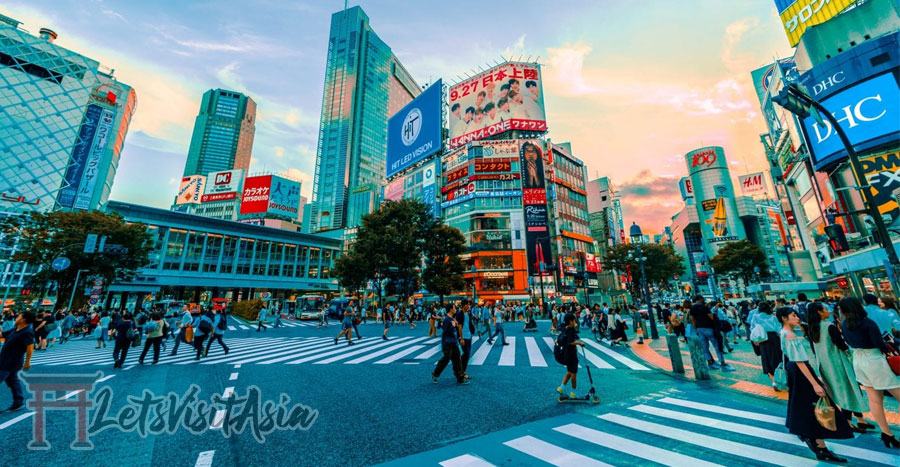
Conclusion: Jet Lag Returning from Japan
Is jet lag returning from Japan worse than going there? Yes, jet lag is worse when returning to the United States from Japan, as it is an east-direction flight. This is because jet lag is caused by crossing a high number of time zones and the body’s inability to adapt immediately to the new time zone after returning from Japan.
Hopefully I’ve answered any question you had regarding jet lag after returning home from Japan. But if I missed anything, feel free to leave me a comment and I’ll be sure to answer any questions there.
If you’ve skimmed the whole article looking for quick answers, the main points from this article are:
- Jet Lag is worse when you fly eastward, than if you fly westward.
- This means flying from Japan to USA results in ‘worse’ jet lag than if you flew from Japan to the United Kingdom.
- There’s no way to completely avoid jet lag, but there are ways to ‘overcome’ it (such as avoiding alcohol, blue light exposure before going to bed and trying a natural sleep aid).
A few days of Jet Lag is always worth the trip
I’ve mentioned it already, but I always swear by natural sleep aids containing montmorency tart cherry; I really believe that it helps ‘hard-reset’ my circadian rhythm and get me back into my normal routine, much quicker than if I tried to overcome jet lag without it.
Ultimately, you might struggle with jet lag for 2-5 days when you return from Japan. But just remember that you’ll come away with memories for a lifetime – not a bad trade-off, if you ask me!
For me, personally, experiencing slight jet lag is always worth it for a taste of some authentic ramen, okonomiyaki or sushi in the land of the rising sun.
Let me know if you have any magic remedies to defeat jet lag in the comments below!
References:
- Zhixin L. Resynchronization of circadian oscillators and the east-west asymmetry of jet-lag . Chaos: An Interdisciplinary Journal of Nonlinear Science > Volume 26, Issue 9 > 10.1063/1.4954275
- Jack N L. Pilot Study of Tart Cherry Juice for the Treatment of Insomnia and Investigation of Mechanisms. Am J Ther. 2018 Mar-Apr; 25(2): e194–e201.
- West K E. Blue light from light-emitting diodes elicits a dose-dependent suppression of melatonin in humans . J Appl Physiol (1985). 2011 Mar; 110(3): 619-26.
Leave a Comment Cancel reply
Save my name, email, and website in this browser for the next time I comment.

Jetlag hits differently depending on your travel direction. Here are 6 tips to get over it
Director, Appleton Institute, CQUniversity Australia
Senior Postdoctoral Fellow, CQUniversity Australia
Disclosure statement
Sally Ferguson's research is funded in part by the Australian Research Council.
Dean J Miller's research is funded in part by the National Health and Medical Research Council, the Australian research council, and WHOOP Inc.
CQUniversity Australia provides funding as a member of The Conversation AU.
View all partners
After a few difficult years of lockdowns and travel restrictions, people are finally winging their way across the globe again; families are being reunited and sights are being seen.
Yet the joys of international travel often come with a side of jetlag, which can make it hard to initially enjoy a holiday, and to settle in once you return home.
Why do people experience jetlag? And is there anything you can do to lessen its effects?
What causes jetlag?
The term “jetlag” describes the physical and cognitive symptoms people experience when travelling quickly across several timezones.
Before you leave for a trip, you’re synchronised to your local time. Once you enter a new timezone, your body’s rhythms are no longer lined up with the clock on the wall.
That’s when jetlag symptoms hit. You’re sleepy when you want to be awake, and wide awake when you want to be asleep. You’re hungry in the middle of the night, and might feel bloated or nauseous if you eat during the day.
Until your body clock and all the rhythms it controls line up with the new local time, you are physiologically and mentally discombobulated. Not a happy holiday vibe!
Jetlag isn’t the same for everyone
Interestingly, the experience of jetlag varies between people. That’s because we all tick along to our own internal rhythm.
Most of us have a natural daily cycle of about 24.2 hours. So if we lived in a cave and didn’t see any light, our sleep/wake cycle and other daily rhythms would tick along at about 24.2 hours. Researchers think this is an evolutionary adaptation that allows us to adjust to different day lengths across the year.
Read more: Morning lark or night owl? How our body clocks affect our mental and physical performance
But some people have slightly longer cycles than others, and this may play a role in how a person experiences jetlag.
Research suggests if you have a longer cycle you might adjust quicker to westward travel, such as when travelling from Australia to South Africa, but we don’t know if a shorter cycle helps going the other way.
We also get a little less resilient as we age, so the older among us might have worse jetlag symptoms.
Does direction of travel matter?
More generally, many people find westward travel, where you “gain” time, a bit easier.
Say Jasmine and Sarah depart Adelaide at the same time. Jasmine lands in Perth in the afternoon, where it’s about 2.5 hours earlier in the day. She sees some sights and easily falls asleep at about 8.30pm local time. She then wakes up very early and starts her day.
Because Jasmine’s body clock naturally delays – shifting a little later relative to the local time each day – after a few days she is fully synchronised.
Sarah, meanwhile, lands in Auckland which is about 2.5 hours later in the day. She takes advantage of the balmy evening and some of the night, and is wide awake until 2am. She then struggles out of bed when the alarm goes off at 7am, because it’s still 4.30am on her body clock.
Sarah will likely feel the effects of jetlag more severely than Jasmine, and for longer.
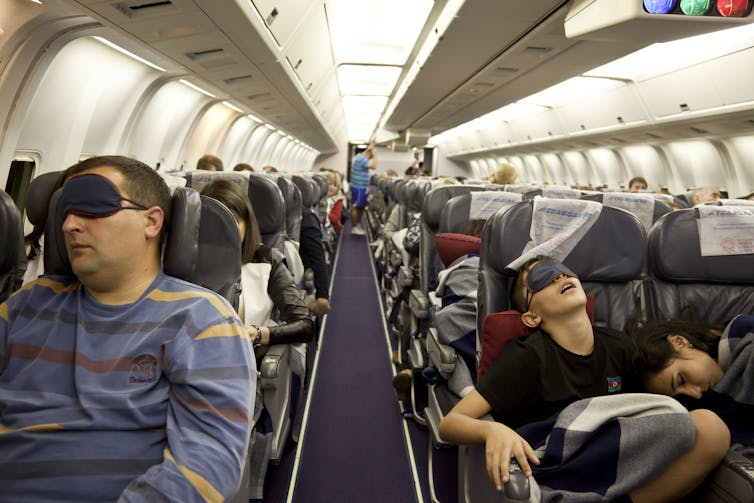
Is jetlag just ‘psychological’?
Some people might wonder if jetlag is just in your head. Well, in a way it is, because it’s a mismatch between your body’s internal time (which is determined in your brain) and your local time.
But that doesn’t mean you can talk yourself out of jetlag. It’s better thought of as a physiological condition, rather than a psychological one.
Luckily, there are a few simple ways to alleviate jetlag symptoms and help your body clock adjust. This is particularly important for elite athletes who travel to compete.
First, decide whether it’s worth trying to adapt to the new time or not. If it’s only a short trip, it might make more sense to stay on your home time. If it’s longer than three days, start consciously moving your own rhythms – such as when you sleep, eat, exercise and get sunlight – towards the new timezone.
If you’re trying to shift your body clock, it’s a good idea to start on the plane. Set your watch to your destination’s timezone and line up your activities accordingly.
Keep caffeine and alcohol intake low on the journey. This will be better for sleep and hydration, and will help with adjusting your body clock to the new timezone.
When adjusting to a new timezone, try to sleep during the local night time and just rest when you need to at other times. Short naps can give you a boost to get through the day and evening activities. Aim for about 30 minutes and avoid naps later in the day as you near your actual planned bedtime.
Gastrointestinal discomfort is a symptom of jet lag. If you’re prone to or experience tummy trouble while travelling, stick to small meals and eat when you’re hungry. Your body will tell you when it’s ready for food. Tip 3 about caffeine and alcohol applies here too.
Get outside. Sunlight is key to adjusting to a new timezone. Depending on your timezone change, appropriately-timed outside activities will help.
If that’s not enough, the Sleep Health Foundation has more tips here .
Read more: Is there such a thing as the perfect alarm tone? We think so (and this is what it might sound like)
- Sleep hygiene
- travel times

Program Manager, Teaching & Learning Initiatives

Lecturer/Senior Lecturer, Earth System Science (School of Science)

Sydney Horizon Educators (Identified)

Deputy Social Media Producer

Associate Professor, Occupational Therapy

10 Extremely Simple Ways To Beat Jet Lag Once And For All
A nyone who’s flown through multiple time zones has likely struggled with the circadian confusion known as jet lag. Your body thinks it’s still in one time zone, but it’s physically somewhere else. So it gets confused, tired and fritzy.
You can’t avoid jet lag, but by following these tips you can minimize the dreadful symptoms and enjoy your trip more.
The best way to beat jet lag is to quickly and clearly give your body the information it needs about the new time zone. In short, your body needs a good amount of sleep, food, and sunlight and at the right times.
Please note: This post contains affiliate links. You won’t be paying a cent more for any of your purchases, but the small affiliate commission I receive will help keep the content coming to you. Thanks!
Understand how hard you’ll be hit.
In general, the effects of jet lag seem to be worse when you fly east instead of west. Experienced air travelers know that flying east across time zones is harder than flying west, because traveling east shortens the days, while traveling west lengthens them.
When we travel east, we are essentially losing time as we cross time zones. For example, if you travel from New York to London, you are losing five hours, which means that your body needs to adjust to a shorter day. This can be more difficult for our bodies to adapt to, as our natural circadian rhythm is disrupted.
When we travel west, on the other hand, we are essentially gaining time as we cross time zones. For example, if you travel from New York to Los Angeles, you are gaining three hours, which means that your body needs to adjust to a longer day. While this can still cause jet lag symptoms, it is often considered less severe than when traveling east.
However, it’s important to note that jet lag affects individuals differently, and some people may find that they experience more severe symptoms when traveling west. Factors such as age, health, and sleep patterns can all play a role in how jet lag affects us.
On your next few international flights, take note and see which direction causes worse symptoms. Knowing how your body reacts means you can actually try and help it!
Traveling east means you’re shortening your day, and traveling west means you’re extending your day.
On average, it takes about a whole day for our bodies to shift just one timezone.
Traveling east is generally considered harder to adjust to than traveling west because our body’s natural circadian rhythm is disrupted by losing time rather than gaining it.
Our circadian rhythm is a natural internal clock that regulates our sleep-wake cycle and other bodily functions. When we travel east, we are essentially moving ahead in time, which can be more difficult for our bodies to adjust to.
This means that if you travel from New York to Los Angeles, which is a three-hour time difference, it can take up to three days for your body to fully adjust.
However, if you travel from Los Angeles to New York, which is also a three-hour time difference, it may only take one or two days for your body to adjust.
When we travel internationally and cross multiple time zones, it can take even longer for our bodies to adjust. It’s no wonder why it often takes up to a whole week for us to adjust after international flights that skip over full continents.
When we travel internationally and cross multiple time zones, it can take even longer for our bodies to adjust. It’s no wonder why it often takes several days (and up to a whole week) for us to adjust after international flights that skip over full continents.
Take melatonin strategically.
Melatonin is a hormone that tells your brain when it’s time to wind down and go to sleep. Taking a small amount, between three to five milligrams, 30 minutes before you want to go to sleep, can really help your body clock.
Here’s a general rule of thumb to help you get it right:
- Traveling east? Take melatonin in the evening to fast-forward your body clock.
- Traveing west? Take melatonin in the morning to rewind your body clock.
When traveling east, taking melatonin in the evening can help to fast-forward your body clock and make it easier to fall asleep earlier in the new time zone. This can help to alleviate symptoms of jet lag such as fatigue, insomnia, and difficulty concentrating.
When traveling west, taking melatonin in the morning can help to rewind your body clock and make it easier to stay awake later in the new time zone. This can help to alleviate symptoms of jet lag such as daytime sleepiness and difficulty staying awake during the day.
Eat strategically
Airplane food is fun and free, which is why we can’t help but want to eat it! But it’s also typically bad for you, being high in sodium, carbs, calories, and additives.
Lots of jet lag experts recommend staying away from it.
If you’re open to skipping the plane meal, this can actually help jet lag! Did you know that we can strategically avoid food during the flight to soften the blow of jet lag?
Throughout a long-haul flight, fast by avoiding food and caffeine, all the while drinking lots of water.
Upon arrival or when it’s almost time to land, eat a large fast-breaking meal (along with a cup of coffee if you’d like). Protocols similar to this were shown to significantly reduce the occurrence of jet lag!
Avoid alcohol and caffeine.
Jet lag is partly a result of dehydration. This dehydration starts the minute your flight takes off.
As airplane cabins are commonly pressurized, many people are dehydrated in-flight without even realizing it. To combat this, drink water early and often.
Caffeine and alcohol both dehydrate you, so avoid these as best you can during the flight.
Get a good night’s sleep before the flight.
Getting a good night’s sleep before you fly is essential. Chances are, you won’t be getting a good night’s rest on the plane, so make sure you’re well-rested the night before so you’re not completely running on fumes when you arrive in the visiting country.
If you’re someone who can easily knock out on a flight, we’re actually so jealous right now.
Try and sleep on the plane.
Let’s face it, sleeping on a plane isn’t the same as sleeping in an actual bed, by any means!
Despite that, you should try to sleep during your flight so you’re not in zombie-mode when you arrive at your destination.
At bedtime, brush your teeth, slap on a high-quality eye mask and earplugs, recline your seat (as much as your seat allows), and try to sleep as best you can.
Here are things that usually help me sleep on planes:
- A black-out eye mask : I like the Tempur-Pedic Sleep Mask or the OstrichPillow Eye Mask . Both are pillowy soft and have eye cups so you don’t press on your eyeballs unnecessarily!
- Neck Pillow : A comfortable neck pillow provides support for your head and neck, helping you avoid that dreaded head bobbing while trying to sleep. I personally use the Trtl Travel Pillow !
- Noise-Canceling Headphones : Noise-canceling headphones do wonders to drown out the noise of the plane’s engines, chatty passengers, crying babies, and other disturbances, allowing you to relax and sleep more soundly.
- Loop Quiet Ear Plugs : These game-changing ear plugs are specifically designed for sleeping and do not require Bluetooth or any other type of connectivity. Simply insert them into your ears and the noise cancellation will activate a few seconds later. The earplugs are designed for all types of sleepers, including side sleepers (which I am!)
- Compression Socks : A pair of circulation support socks can help improve circulation during long flights, reducing the risk of swelling and discomfort that can interfere with sleep.
- Sleep Aid Supplements : Some people find it helpful to use natural sleep aids or supplements like melatonin, but it’s advisable to consult with a healthcare professional before using any medication. Personally speaking, I’ve had luck with Zzzquil Nighttime Sleep Aid , OLLY Goodbye Stress , and good ol’ Benadryl .
- The FLYPAL Inflatable Foot Rest is another product that’ll help in this area!
Strategically pick your arrival time.
When possible, schedule your flight to land in the late afternoon or early evening hours . By doing this, you can ensure that “real” sleep is only a few hours away.
Contrastingly, landing in the morning forces you to be awake for essentially two full days without a full night of sleep. If you’ve ever landed at 8am in your destination city and tried to do things to stay awake, you know how much of a struggle THAT is!
On arrival, stay awake until the local bedtime. If you end up sleeping at 4 p.m. upon landing and end up waking up at midnight, you’ve really accomplished nothing.
Go for a walk outside before bed.
Before calling it a night, take some time to enjoy the outdoors. It’s key to get some fresh air and take in any remaining sunlight. Although it’s okay to go to bed early your first night, try to stay awake until your normal bedtime.
Fight jet lag with exercise.
Feeling a little sluggish and fatigued after an international flight? Get a workout in or go for a run at some point after you land– just get that heart pounding. It doesn’t have to be super high intensity, just a decent enough workout to get the metabolism running back to speed.
It’s been proven by science that the best way to get your circadian rhythm back in tune with itself is some good ol’ exercise.
Follow the jet lag shower protocol.
Believe it or not, there are shower protocols for both the mornings and evenings in order to reset your internal clock. Pay attention, because they aren’t the same thing!
In the morning, try showering on the coldest setting to simulate waking up.
In the evening, it’s recommended that you turn the thermostat down and take a warm bath or shower. Stepping out into the cooler room tricks the body into a sleepier state!
Try one or two of these sleep-inducing products.
Some people find it helpful to use natural sleep aids or supplements like melatonin. For me, melatonin does nothing except make me too hot to sleep. But I know it works for a lot of other people! Everyone is different, so try things to see what works for you.
You should always try to consult with a healthcare professional before using any medication.
Here are a few jet-lag products that can potentially make your adjustment time easier:
- 1Above Anti Jet Lag Flight Drink Tablets – Super antioxidant drink tablets.
- Miers Labs Homeopathic Jet Lag Prevention – Helps to alleviate jet lag symptoms that affect the body, prevents disorientation as well as mental and physical fatigue.
- LyteShow – Electrolyte liquid concentrate drops for rapid rehydration.
- Tempur Pedic The Sleep Mask – Super cozy eyemask option.
- The GloToSleep Mask . Uses gently dimming light to help you fall asleep.
Still, prepare for jet lag to hit.
You’ll probably awaken very early on your first morning. Trying to go back to sleep will likely be useless, so just get an early start to the day and catch the sunrise somewhere. Take advantage of your early morning energy!
Use the Timeshifter app.
The Timeshifter app is a popular travel companion designed to help mitigate the effects of jet lag. It utilizes a combination of science, sleep research, and personalized algorithms to create optimized sleep and light exposure schedules tailored to your specific travel itinerary.
Here’s how it works:
- Upon entering your travel details, including departure and arrival locations and times, the app calculates your individual circadian rhythm and provides a personalized plan.
- The plan will include recommendations for when to sleep, seek or avoid light, and consume caffeine to help you quickly adjust to the new time zone.
By adhering to the app’s recommendations, travelers can gradually shift their internal body clock to align with their destination’s time zone, making it easier to adapt to the new environment and reduce the symptoms of jet lag, such as fatigue and sleep disturbances.
I tried this app during my last trip to Europe, and it was a nice reminder of all the tips shared above (get sunlight during the day, avoid coffee after a certain hour, etc.). It certainly didn’t prevent jetlag, but it did help me adjust to the local time a teensy bit faster (like in 4 days as opposed to 5).
Timeshifter is especially beneficial for frequent travelers, business professionals, or anyone who regularly crosses time zones and wishes to be more methodical about their jet lag issues.
GAME-CHANGING GADGETS FOR SMARTER AIRPORT TRAVEL
These are some of my favorite airport/airplane travel products that free my hands up and make traveling so much more convenient. Say goodbye to the days of fumbling around or not having enough hands for things.
- Add a Bag Hook and Hanger Strap | Have a purse, briefcase, tote bag, or bag of souvenirs that’s causing you inconvenience by needing to be carried? Get this bag hook and attach it to your luggage so you only need one hand to tow everything with you.
- riemot Luggage Travel Cup Holder | This foldable drink caddy holds 2 cups, perfect for your pre-flight coffees and fountain drinks. There’s also room to hold books, iPads, phones, tickets and documents.
- Klipsta Traveling Hat Clip | Have you ever brought a wide-brimmed hat on vacation and found it to be the most annoying thing to travel with? A hat clip for your bag or backpack completely removes the struggle of needing to carry your hat in hand!
- Flight Flap Phone & Tablet Holder | Attaches to airline seat backs so you can watch movies hands-free. Also great for standing your phone up on tables too!
- Clipa2 – The Instant Bag Hanger Collection | Hang your bag or purse literally anywhere (on your luggage, on restaurant tables, hotel rooms, etc).
Jet lag is unavoidable but that doesn’t mean you can’t lessen the effects. The best battle plan to combat jet lag is to pursue a proper diet, rest, and physical activity in the days leading up to your flight and after you land.
21 Brilliant Travel Hacks That Will Make You An Expert Traveler
10 Things You’ll Need To Prepare Before Your Trip
The Ultimate Packing Checklist for Europe
10 Best Carry-On Travel Bags For Your Next Trip
9 Best Women’s Travel Vests For Style, Safety And Smarter Travel
9 Best Compression Packing Cubes For Travel
10 Books That Will Inspire You To Travel
What’s In My Wallet When I Travel

Jet fuel demand growth lags as air traffic exceeds pre-pandemic level
- Medium Text

Sign up here.
Reporting by Shariq Khan in New York and Seher Dareen in Bengaluru; Editing by Liz Hampton and Bill Berkrot
Our Standards: The Thomson Reuters Trust Principles. New Tab , opens new tab

Thomson Reuters
Shariq is an Energy reporter focused on U.S. fuel markets. He previously covered corporate oil and gas news with a focus on breaking M&A news.
Seher oversees and writes market reports with the commodities and energy team in Bangalore round-the-clock and monitors newsworthy events in the resources space.
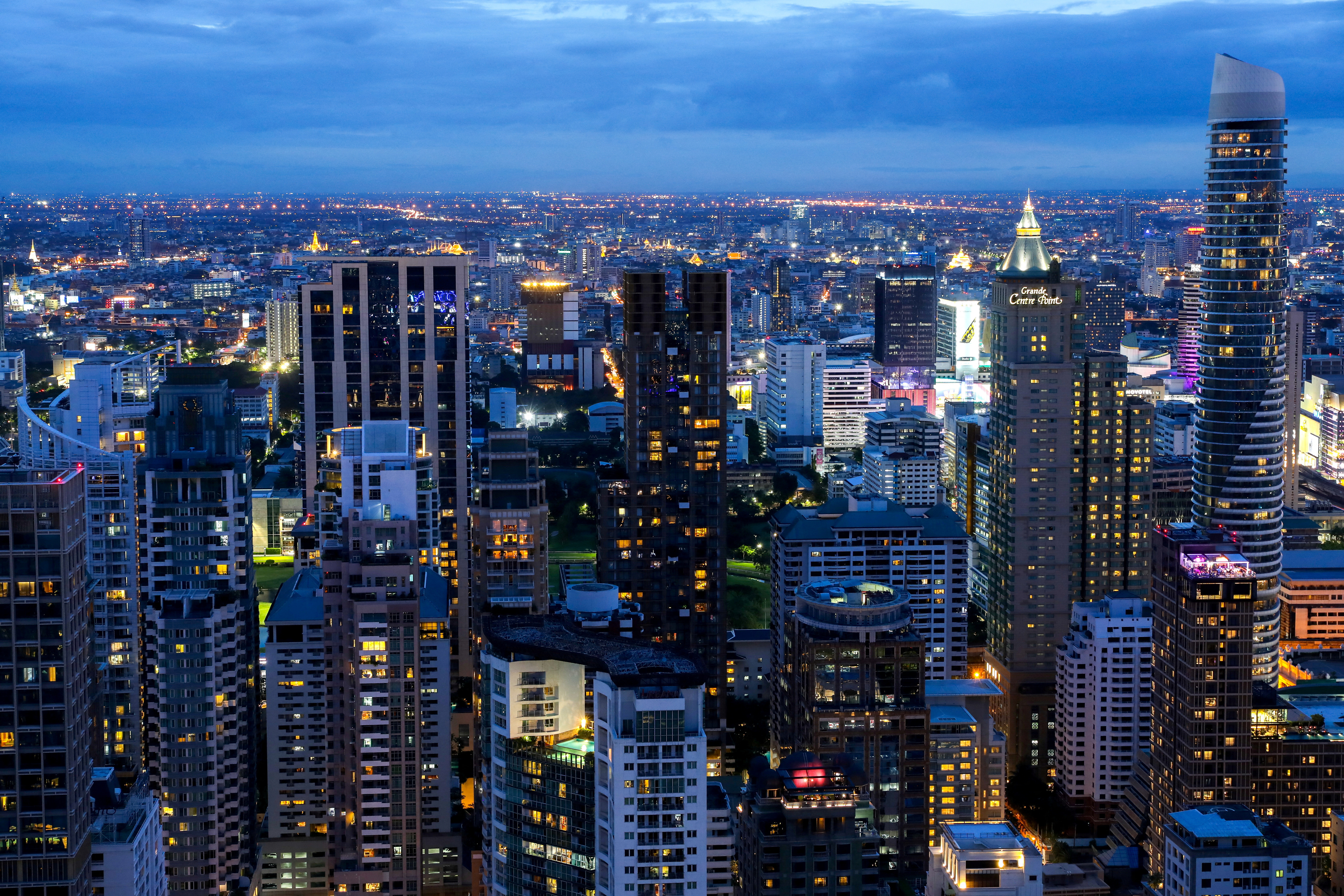
Business Chevron

Elon Musk visits China as Tesla seeks self-driving technology rollout
Tesla debuted the most autonomous version of its Autopilot software four years ago, but has yet to make it available in China, its second-largest market. Local rivals have been seeking an advantage by rolling out similar software.


IMAGES
COMMENTS
Stay awake as late as possible on your first day in Japan. Say no to naps! The key to beating jet lag is to get onto local time as soon as possible. Spend time outdoors in sunlight and do your best to stay awake until nighttime. The sun regulates your body's circadian rhythm, so time in the sun is key to getting settled into Japan Standard Time.
However, a lot of people do experience jet lag when flying to Japan, particularly if they are travelling across multiple time zones. The severity of jet lag symptoms can vary from person to person and can depend on factors such as age, health, preparedness, comfort, and the direction of travel. 2. How bad is jet lag to Japan?
7. Avoid Alcohol and Caffeine. 8. Arrive Early. 9. Exercise Daily. Top Travel Supplement. When flying to Japan, the time difference is significant and cause jet lag that sets your trip back. With up to 70% of long haul travelers experiencing jet lag, it is essential to prepare well in advance and make necessary adjustments.¹⁶ As a company ...
Travelling to Japan as a first timer is a daunting experience. Going to a city where they don't use the Roman alphabet, let alone speak the language, is just one more hurdle which can make those first few hours in the city all that more confusing and intimidating. ... And staying awake a little bit longer is key to preventing jet lag. The worst ...
Watch in-flight entertainment, download books or bring a paperback or two. Get up every hour or two and go to the bathroom, stretch your legs. Eat as little protein as possible your first night in Japan, and lots of carbs. Then make sure your breakfast and lunch the next day have lots of protein.
Try a Jetlag Diet. Used in trials on the military, the Argonne Jet Lag Diet takes the idea of manipulating meal times to change the body clock a step further. In this, you alternate between days of 'fasting' and 'feasting' for four days before your trip. On fast days you eat just 800 calories of healthy, low-calorie meals.
What Is Jet Lag? Jet lag is a disruption of the body's circadian rhythm that occurs with plane travel across three or more time zones Trusted Source Centers for Disease Control and Prevention (CDC) As the nation's health protection agency, CDC saves lives and protects people from health threats. View Source.Symptoms frequently include sleeping problems, daytime drowsiness, impaired mental ...
How to Reduce Jet-lag. Begin to Adjust Your Time to Japan/Home Prepare to get prepared at least a week in advance! If you're travelling east to west start going to bed later, changing the time you go to bed by 30mins every night.And if you're going west to east, go to bed earlier.; Change Your Clock on the Plane
Jet lag 🕓 after arriving in Japan can be brutal, especially if you're coming from Western Europe. Japan is 7 hours ahead of Western Europe in the summer and 8 hours ahead in the winter.When it is 2 p.m. in London and 9 a.m. in New York, it is 11 p.m. the same day in Tokyo.Don't forget to add the minimum 12 hours of traveling time via plane ️ from Paris for example.
3. Keep caffeine and alcohol intake low on the journey. This will be better for sleep and hydration, and will help with adjusting your body clock to the new timezone. 4. When adjusting to a new ...
The time differential and the direction you are traveling each contribute to jet lag, ... 2 p.m. in Japan — 1 a.m. in New York — you need to counter the fact that your New York brain is ...
Drink water. Then drink some more. Then drink even more. And then just one more glass. Flying at 35,000 feet dehydrates you, and dehydration is a major factor behind jet lag. You should drink as much water as you can to help dull that impact. Buying water at the airport isn't cheap, but it's worth it.
The Jet Lag. Calculator. It isn't always easy to recover when you're switching time zones - the inability to sleep, fatigue and disorientation that comes with jet lag can put a serious dampener on your time away. Using your flight itinerary, you can now manage jet lag with this interactive calculator. Enter your travel details below and ...
Jet lag can be a major impediment when travelling long distances - but is it worse in different parts of the world, ... Hong Kong to New Zealand is less jet lag-inducing than a similar length of flight from Europe to Japan because more of the flight time is taken up by going north-south and thus you're crossing fewer time zones. ...
Be in Europe. On arrival, stay awake until an early local bedtime. If you doze off at 4 p.m. and wake up at midnight, you've accomplished nothing. Plan a good walk and stay out until early evening. Jet lag hates fresh air, daylight, and exercise. Your body may beg for sleep, but stand firm: Refuse.
Studies show that exposure to daylight and exercise is one of the fastest ways to cure jet lag. My favourite routine for overcoming jet lag is to go for a run around the Imperial Palace in the ...
It will depend on how long your flights are and what time they're booked for, but as Japan is 8 hours ahead of England you can expect to lose a good chunk of the day based on the time difference alone. 1. Prevent Jet lag. You when you don't prepare for jet lag ^. It's just as important to prepare and prevent Jet lag as it is to survive ...
With an eight-hour time difference between the two countries in winter (and seven hours in summer), a flight from France to Japan can be intense. To avoid digestion problems, tiredness or too much energy, the best way is to manage to follow the Japanese sleep cycle. In order to start your stay more serenely, Japan Experience presents you today several places, which will allow you to adapt ...
Jet lag occurs because your body's internal clock is synced to your original time zone. It hasn't changed to the time zone of where you've traveled. The more time zones crossed, the more likely you are to experience jet lag. Jet lag can cause daytime fatigue, an unwell feeling, trouble staying alert and stomach problems.
How to Overcome Jet Lag Once Home. As mentioned at the start of this article, I haven't been able to properly avoid jet lag completely before.. However, after consistently travelling around Asia (most significantly for this article, Japan) and back to the USA countless times, I have become pretty good at recovering from Jet Lag.
Gastrointestinal discomfort is a symptom of jet lag. If you're prone to or experience tummy trouble while travelling, stick to small meals and eat when you're hungry. Your body will tell you ...
The Timeshifter app is a popular travel companion designed to help mitigate the effects of jet lag. It utilizes a combination of science, sleep research, and personalized algorithms to create ...
The divergence in air travel and fuel consumption has raised questions of whether jet fuel demand will surpass its pre-pandemic peak at all, said Alex Hodes, an oil analyst with brokerage StoneX.